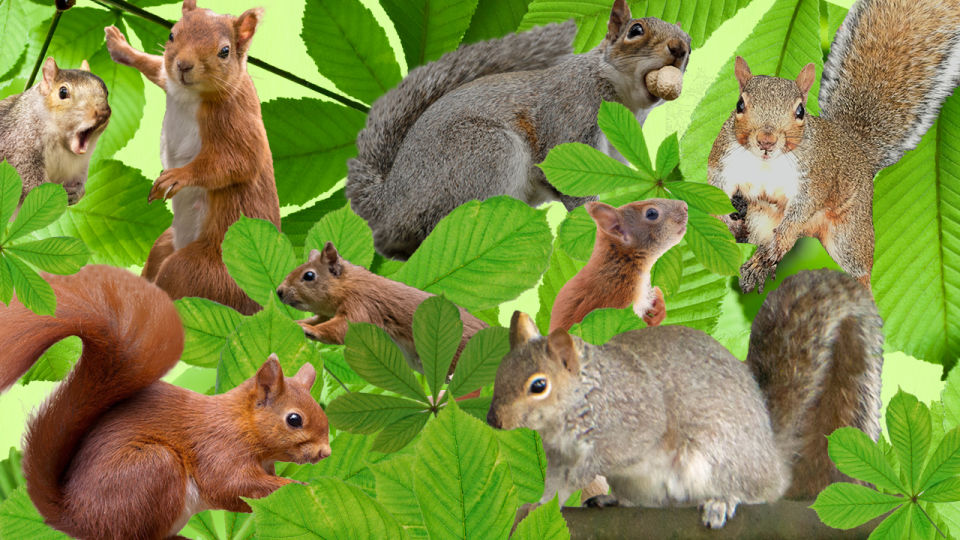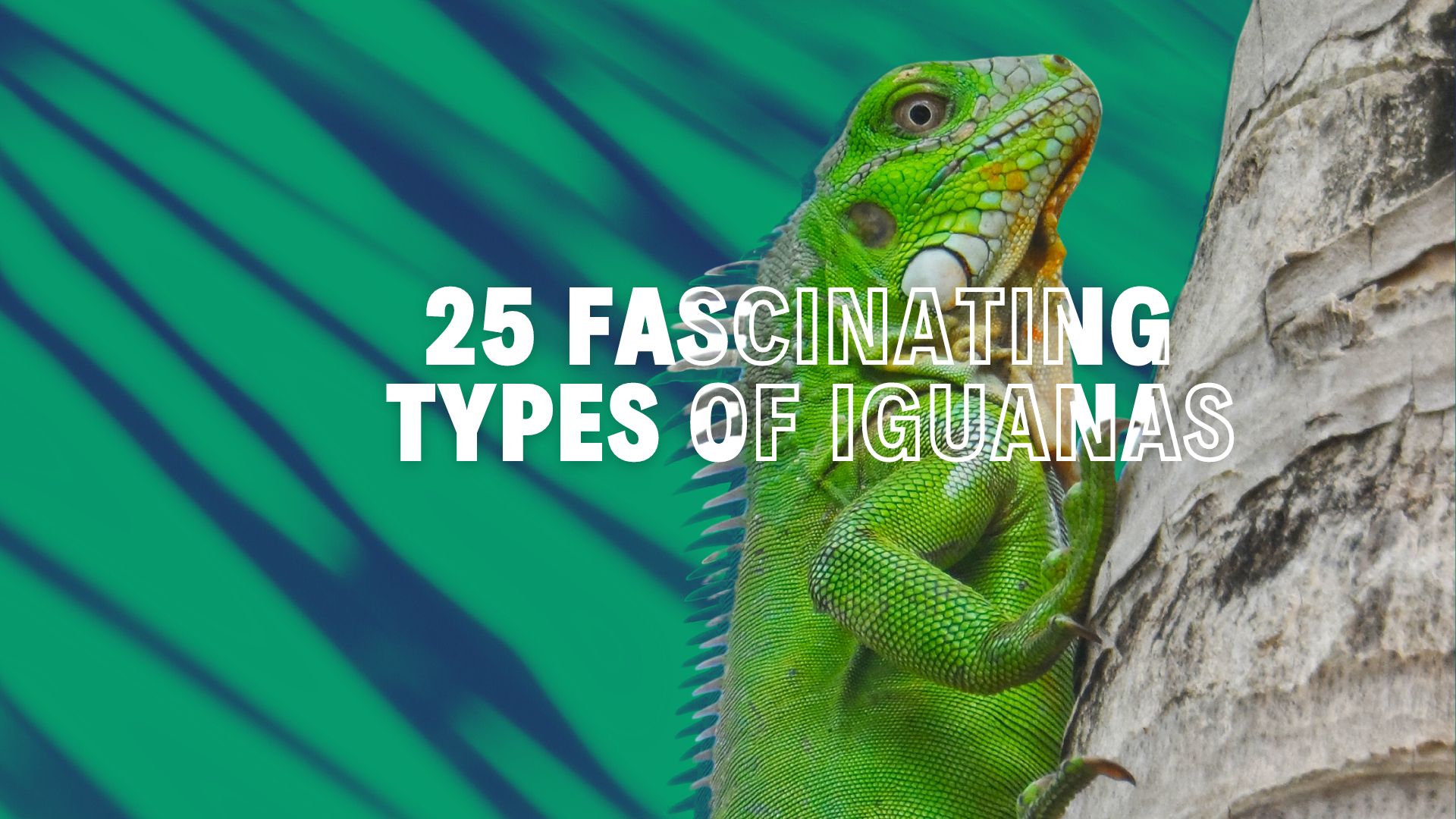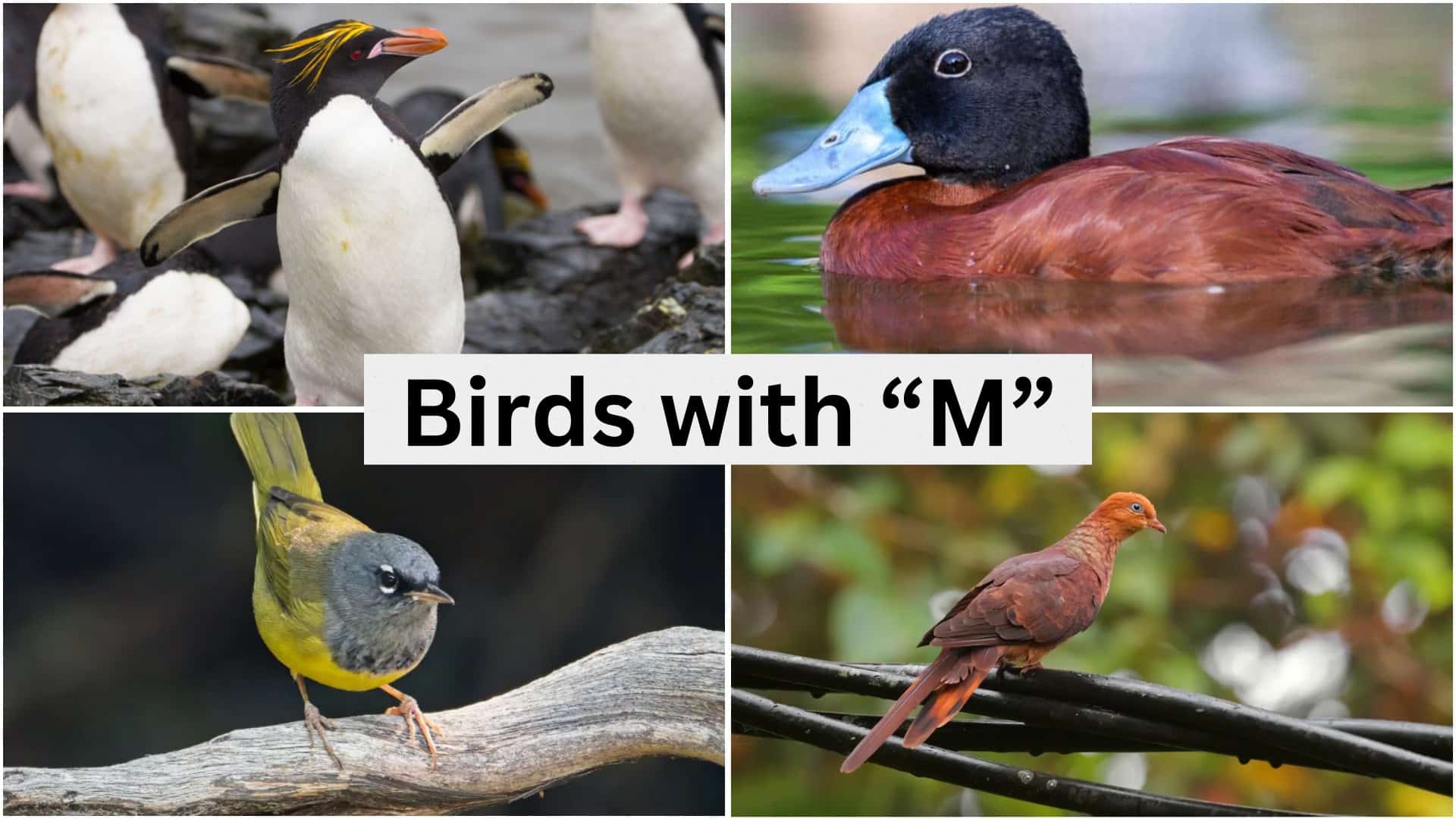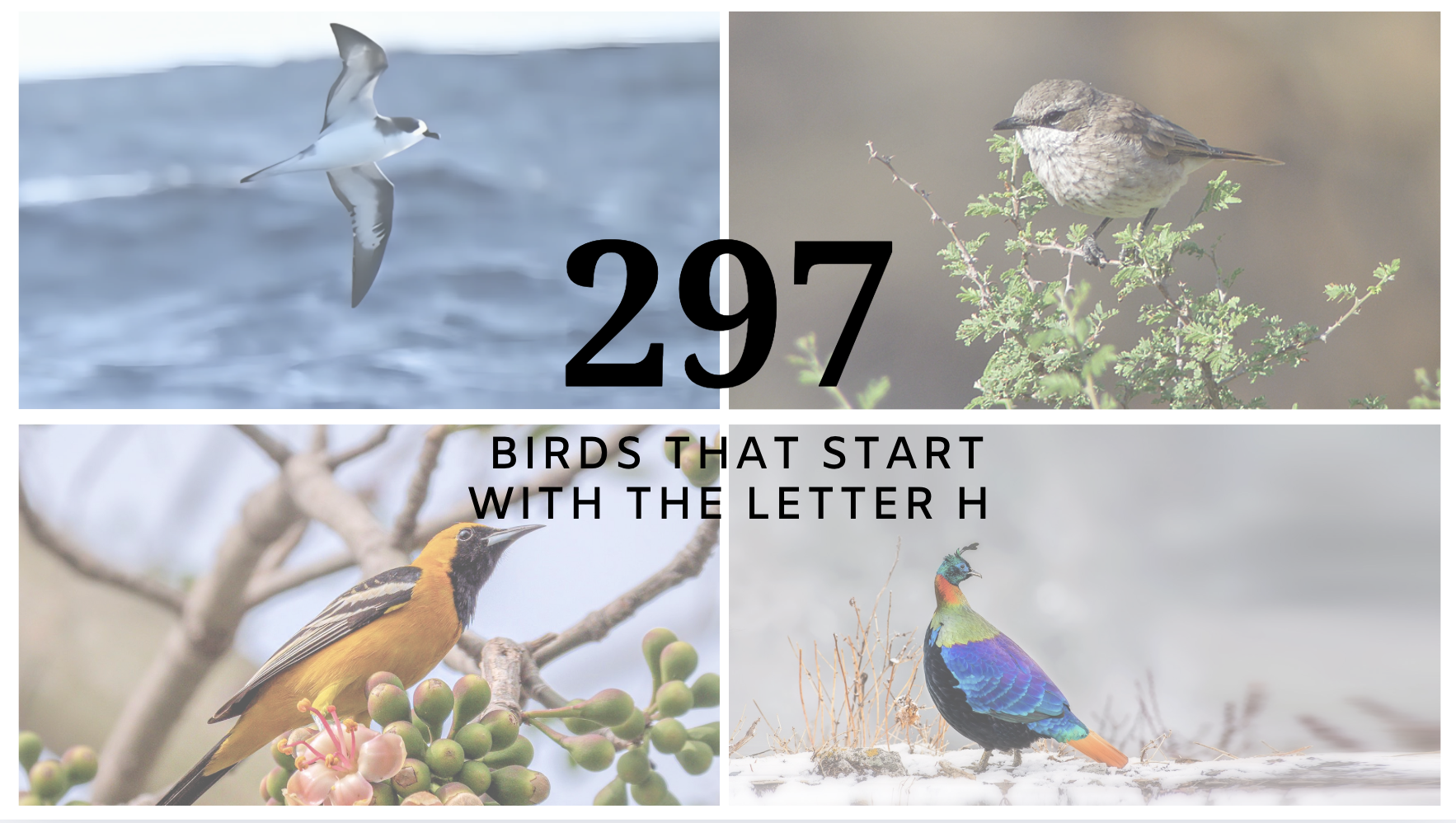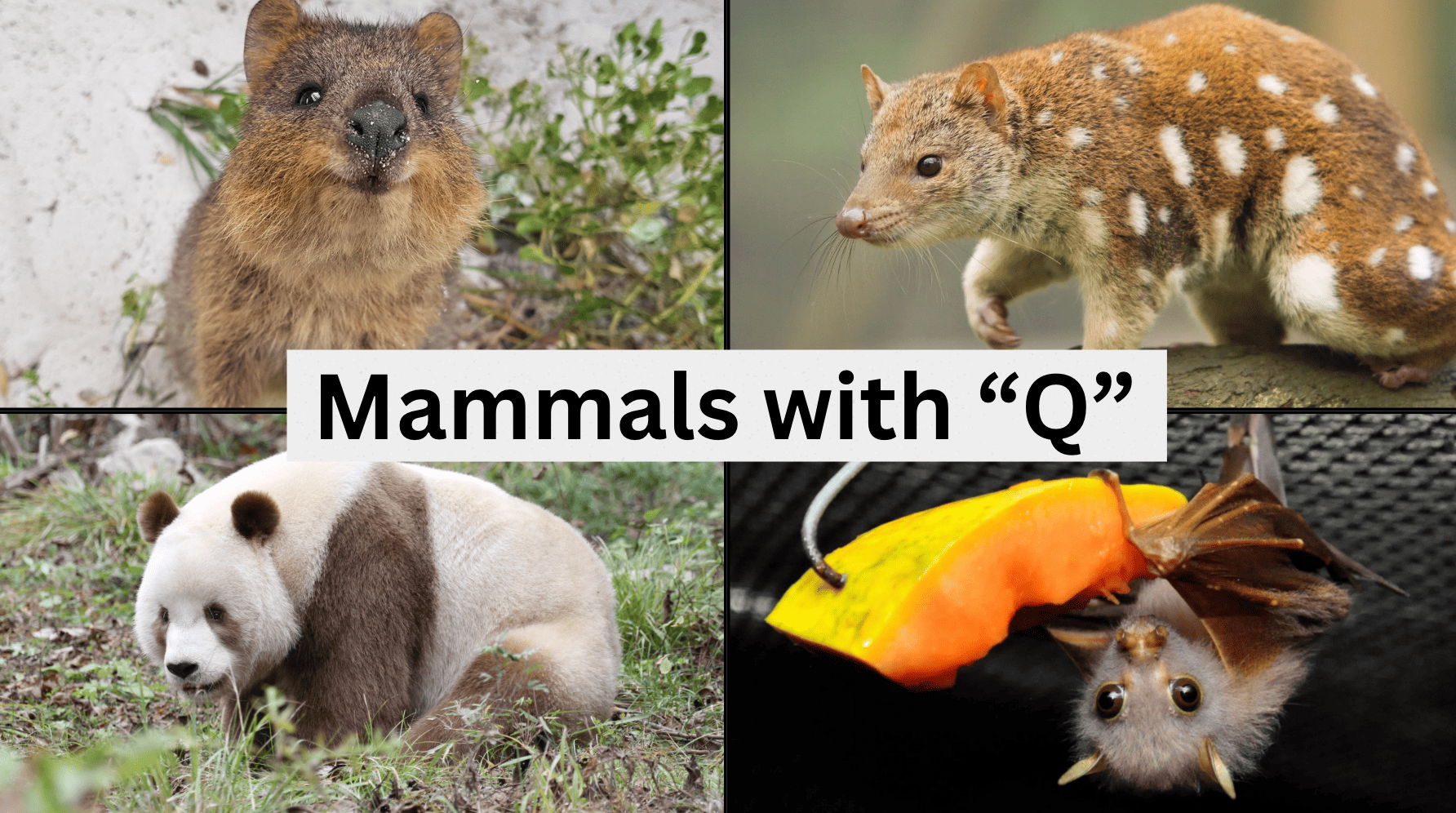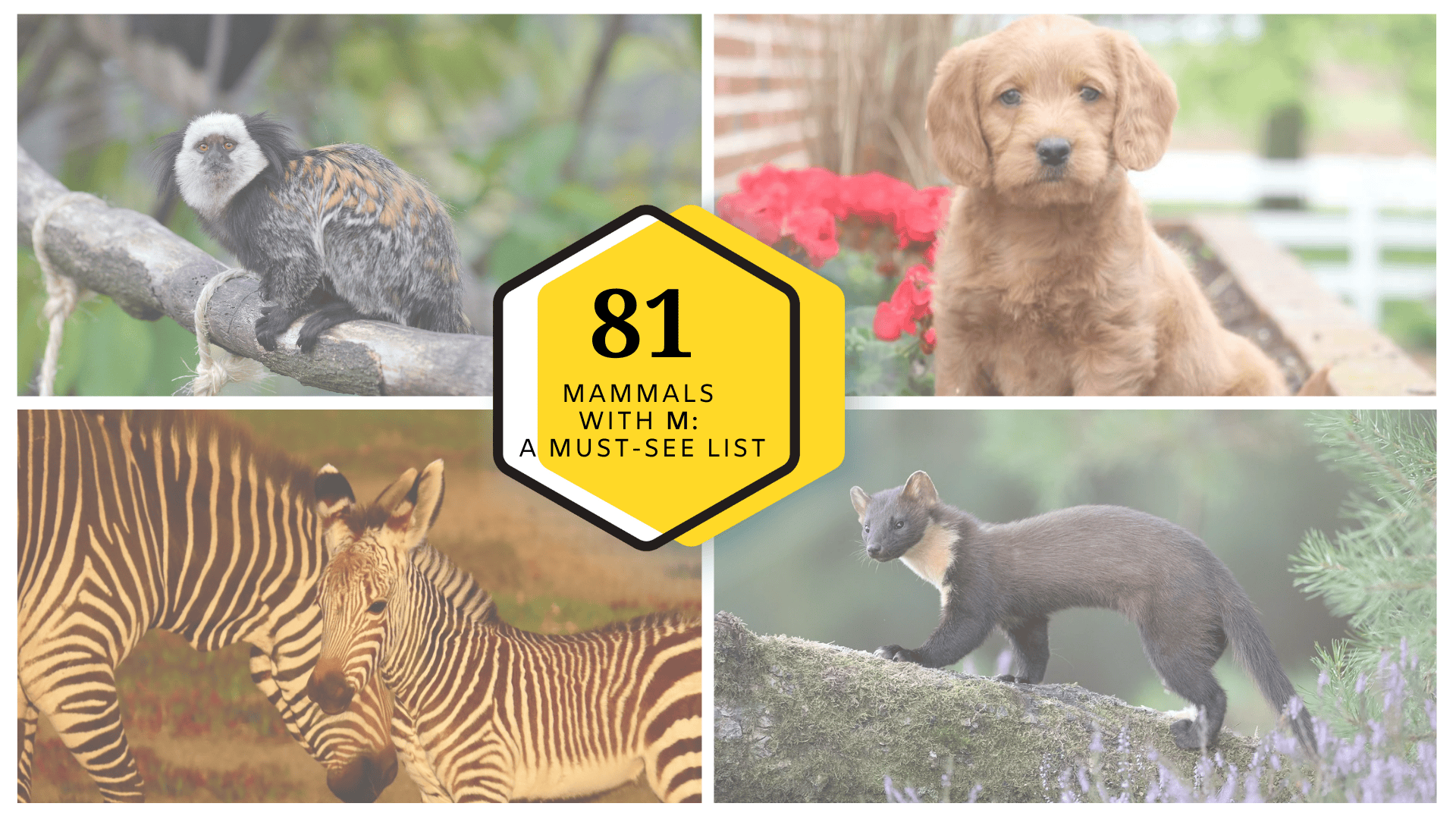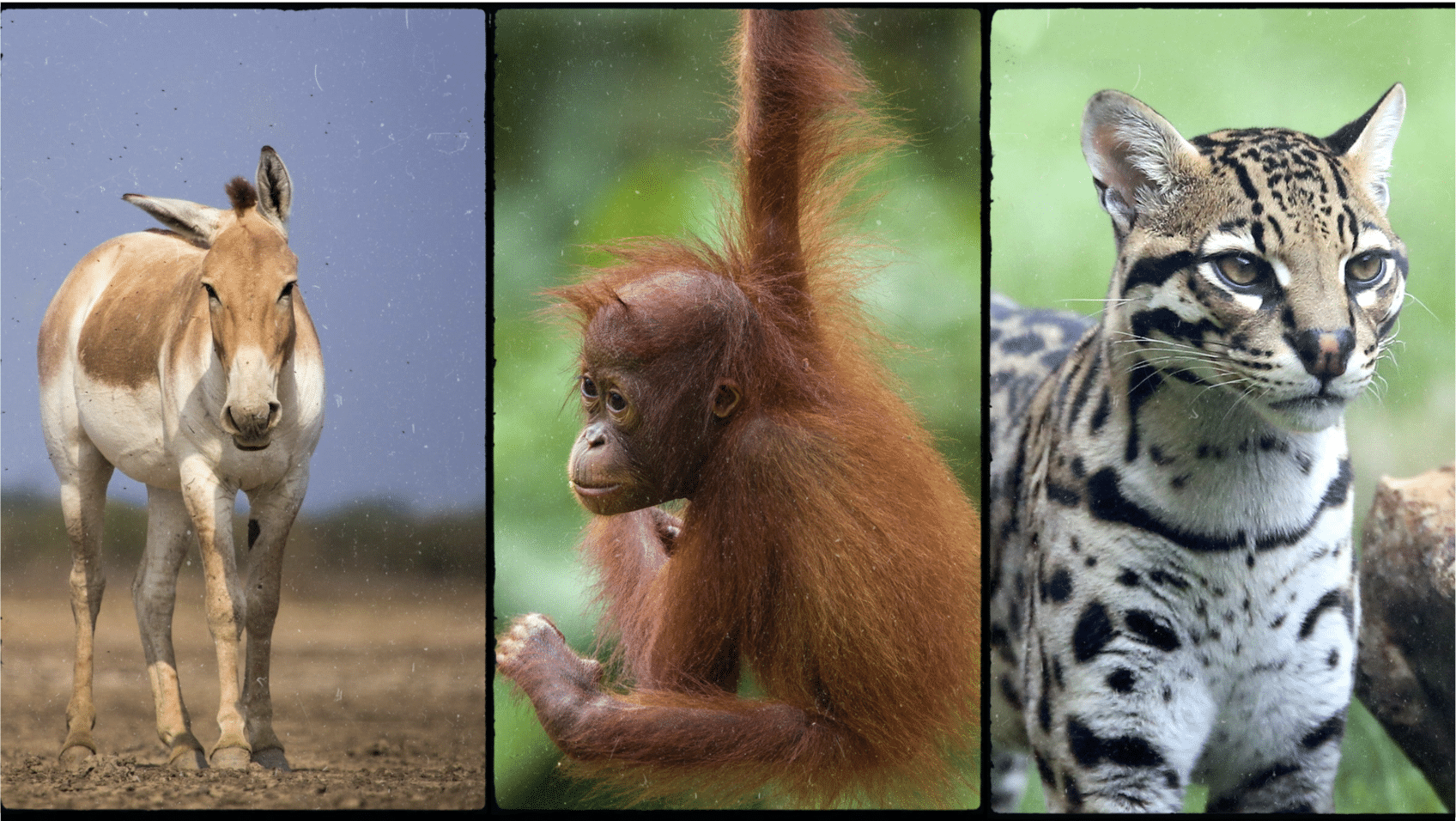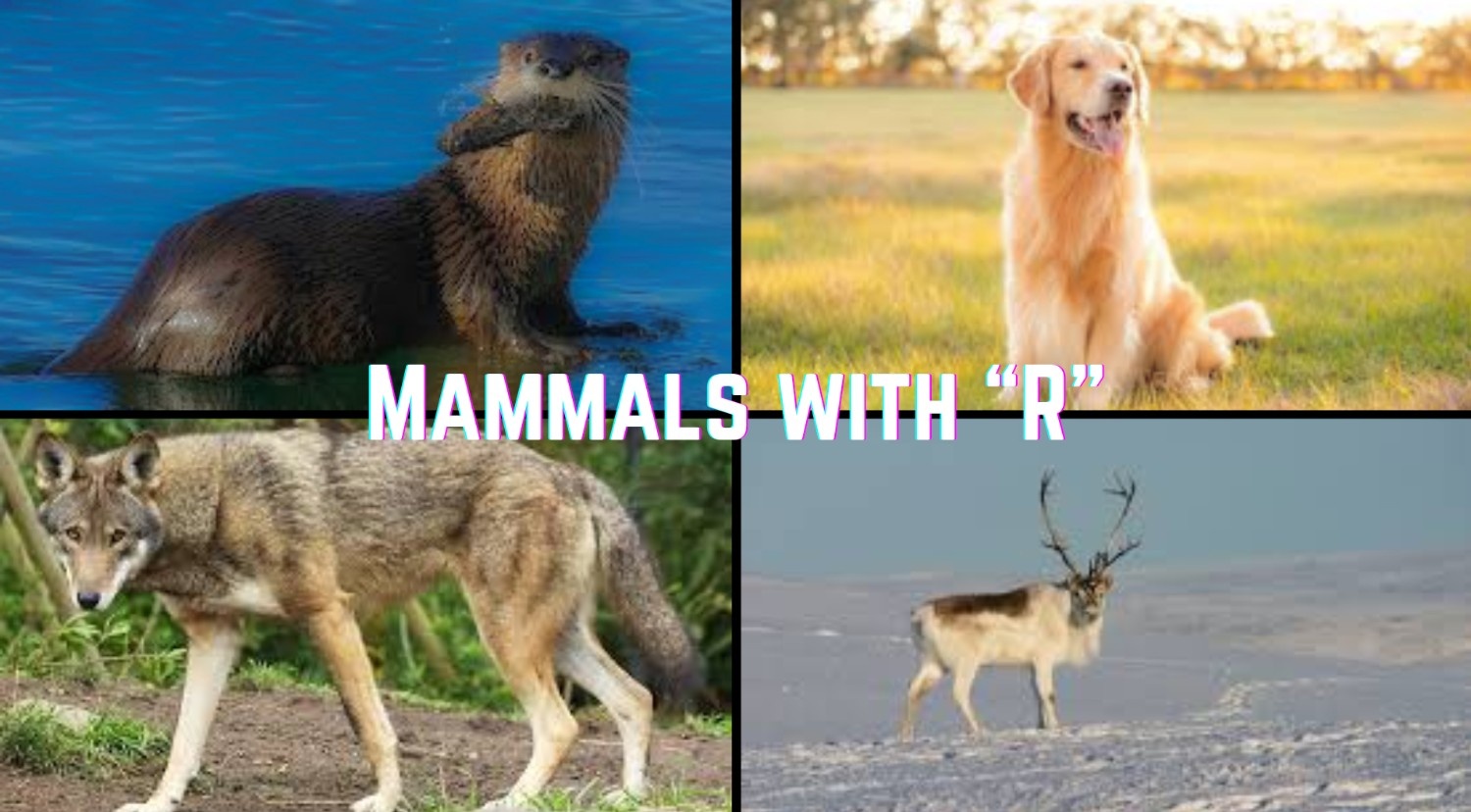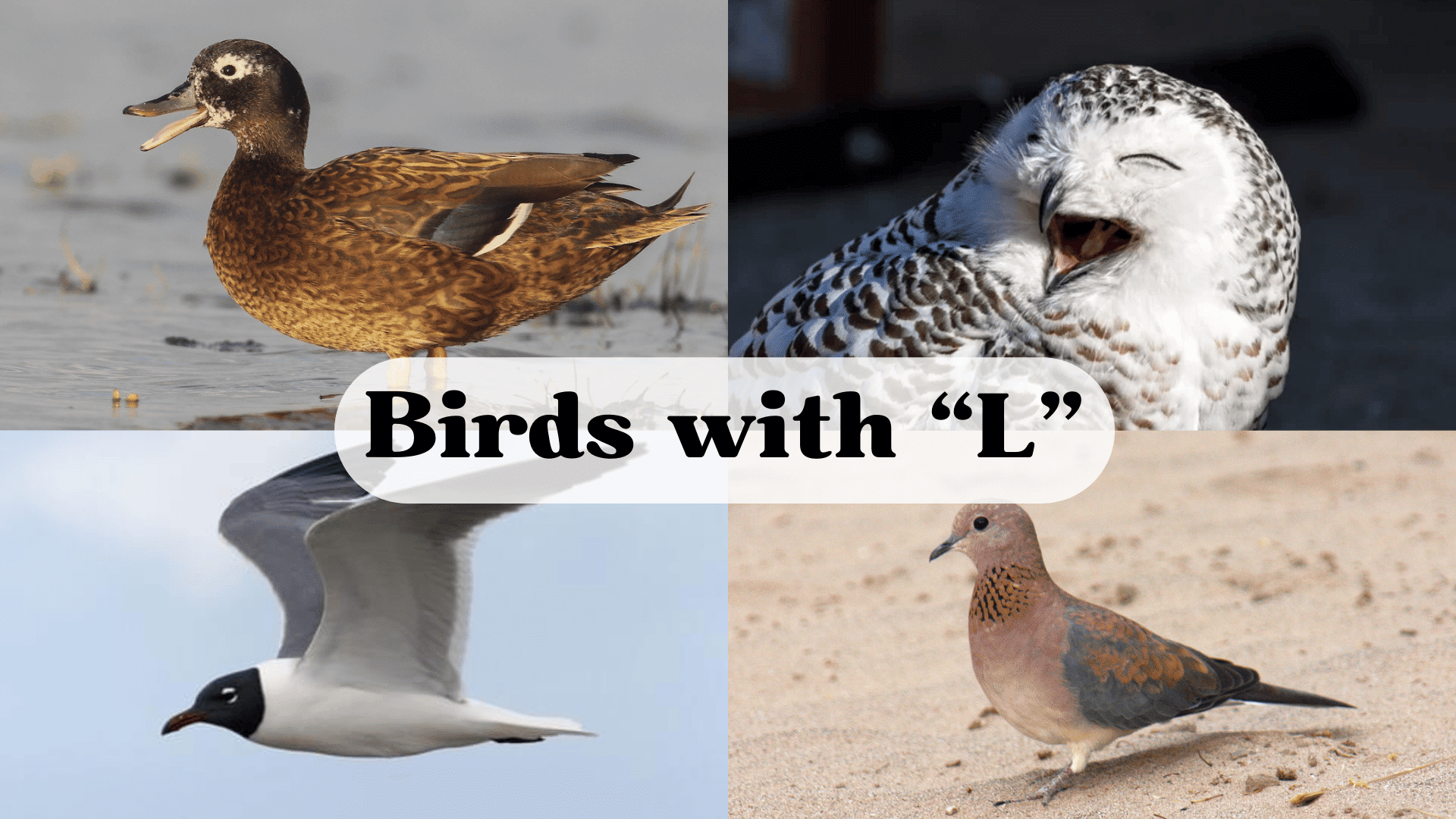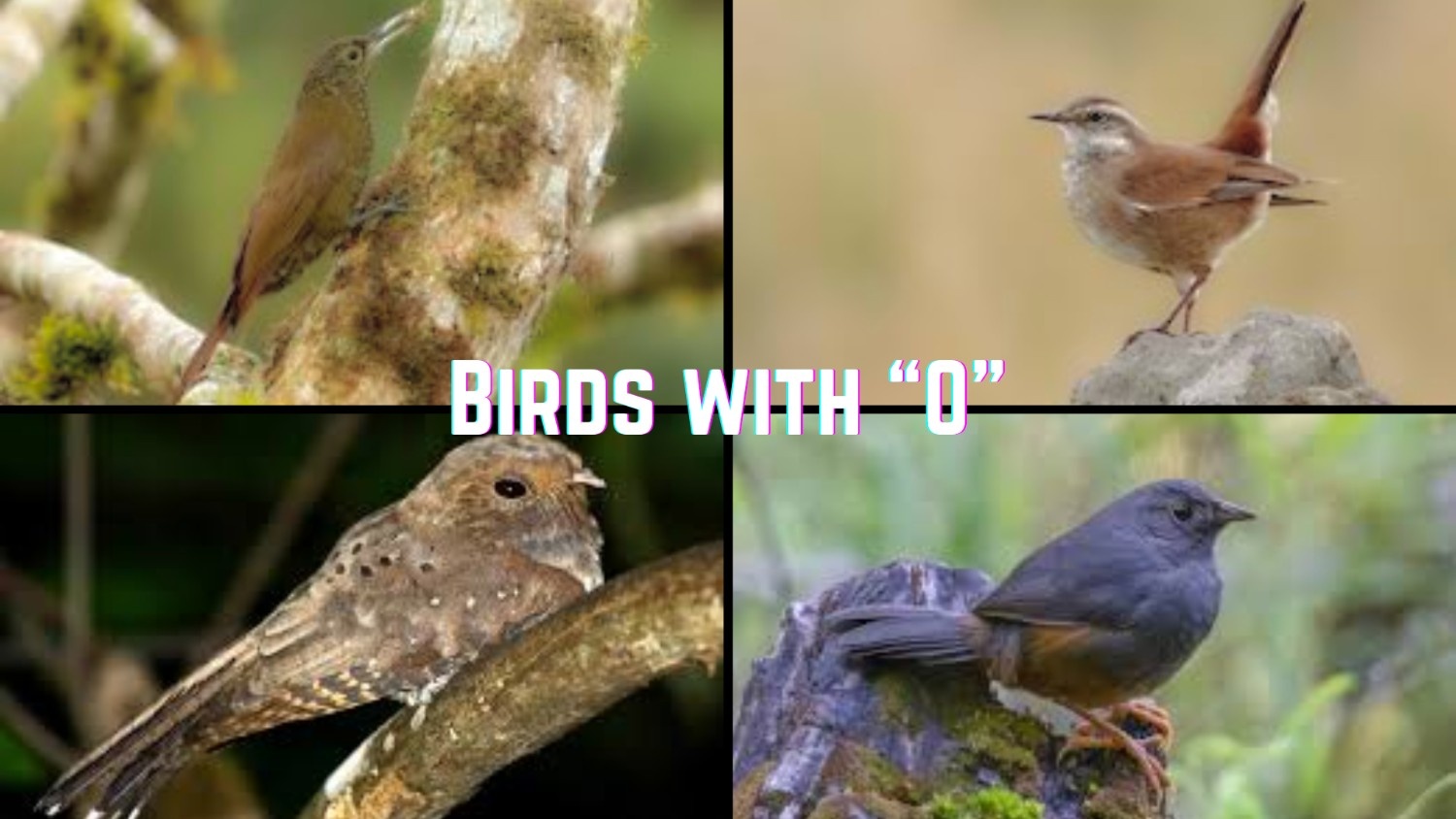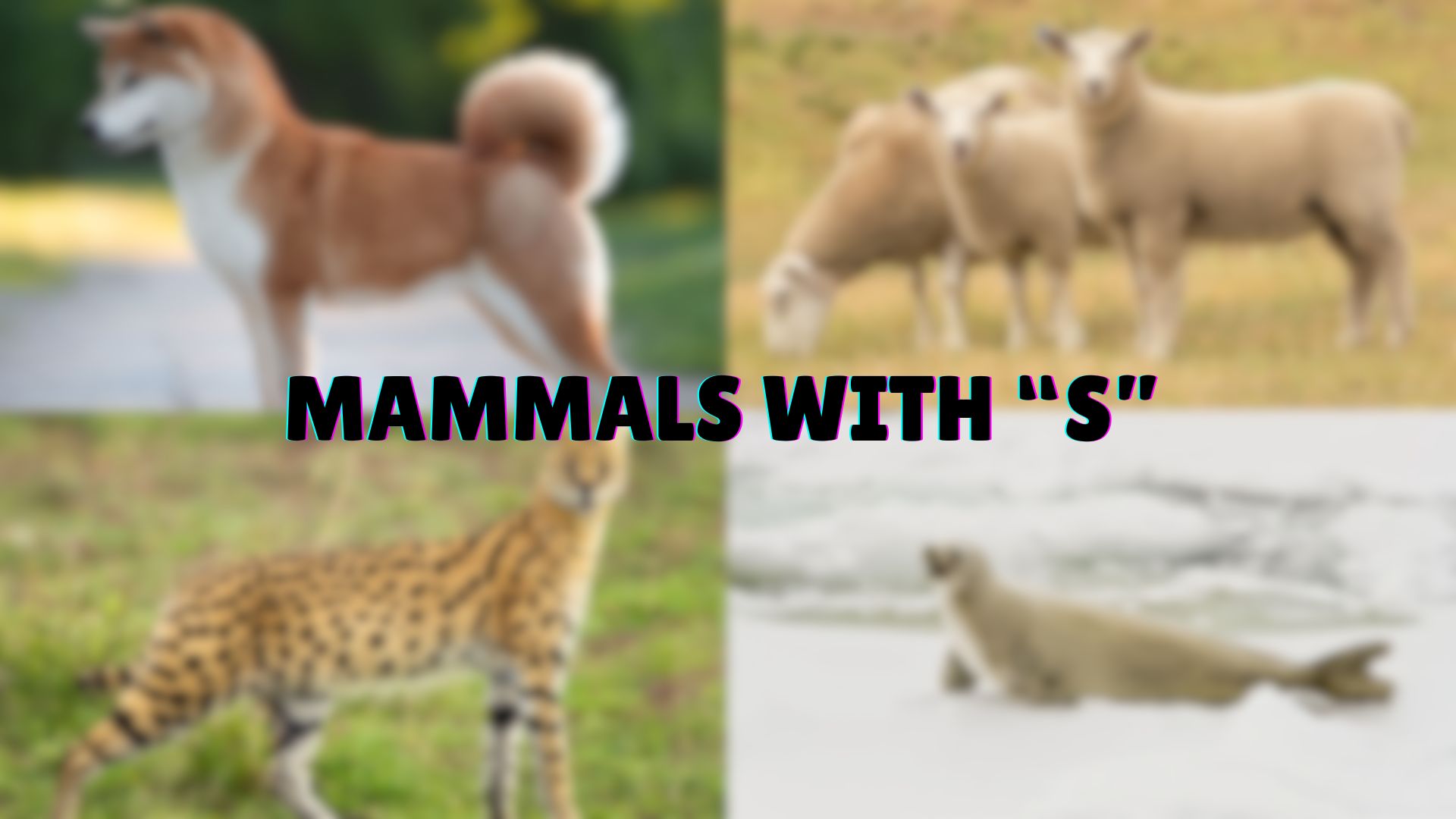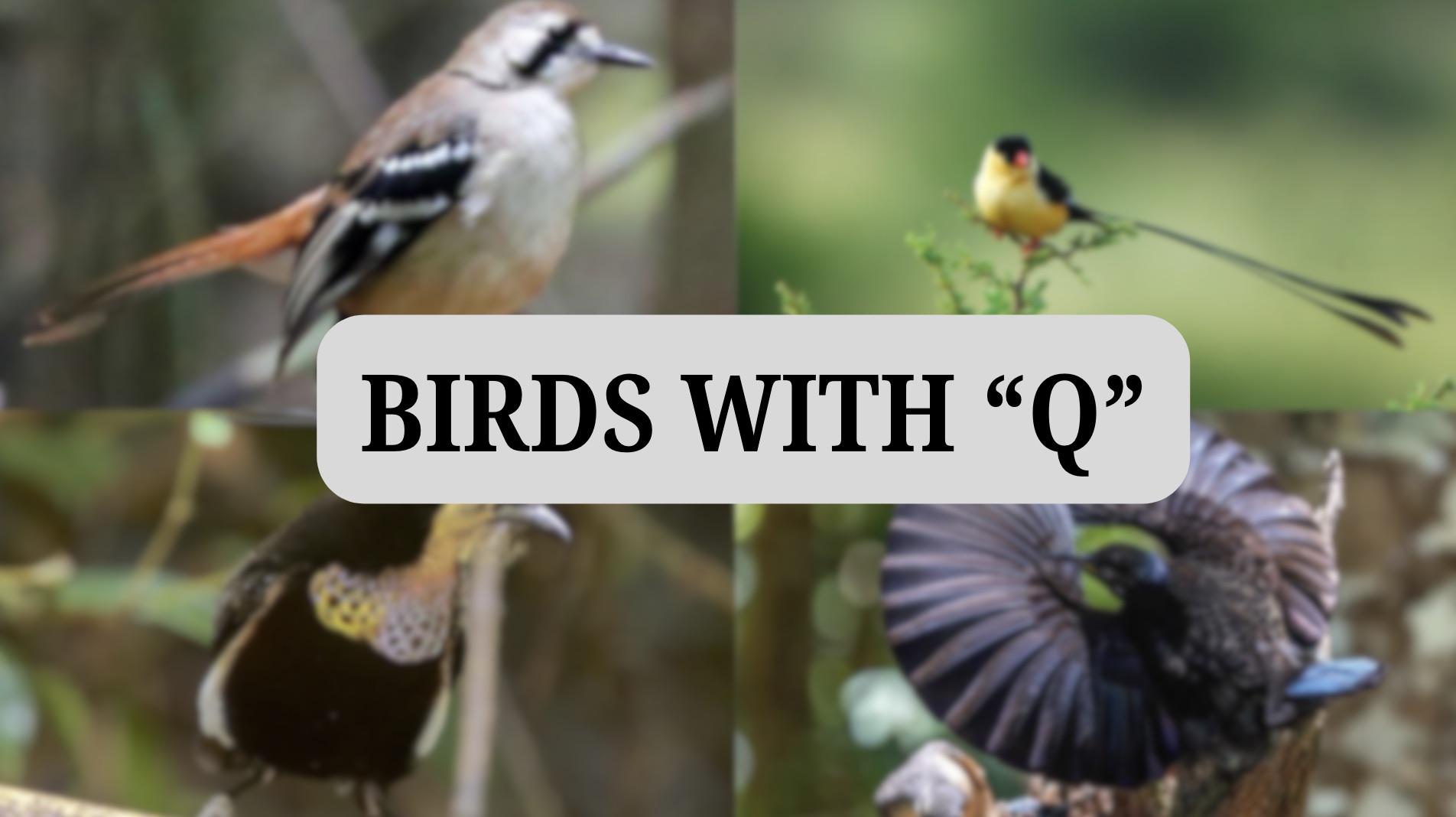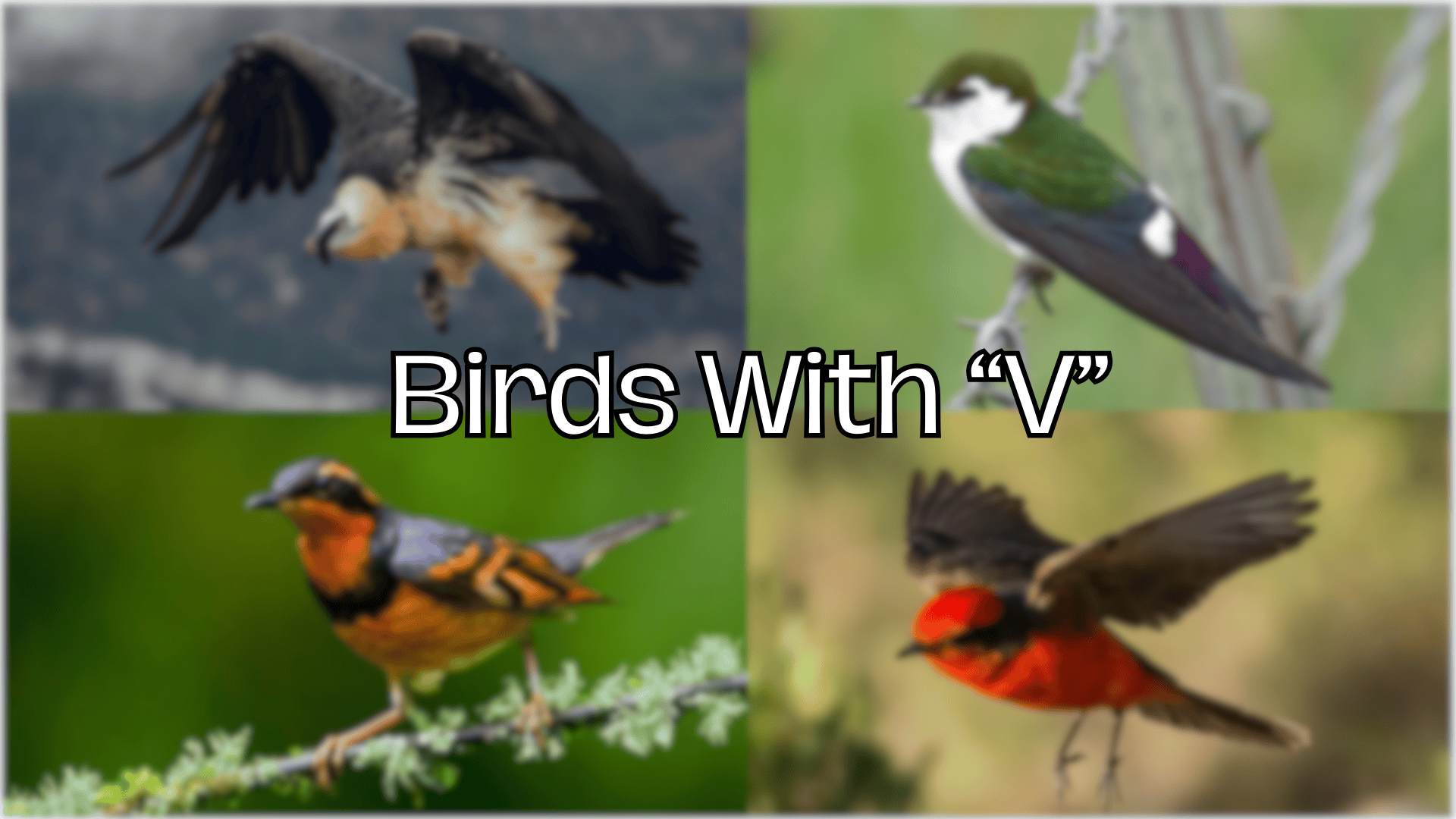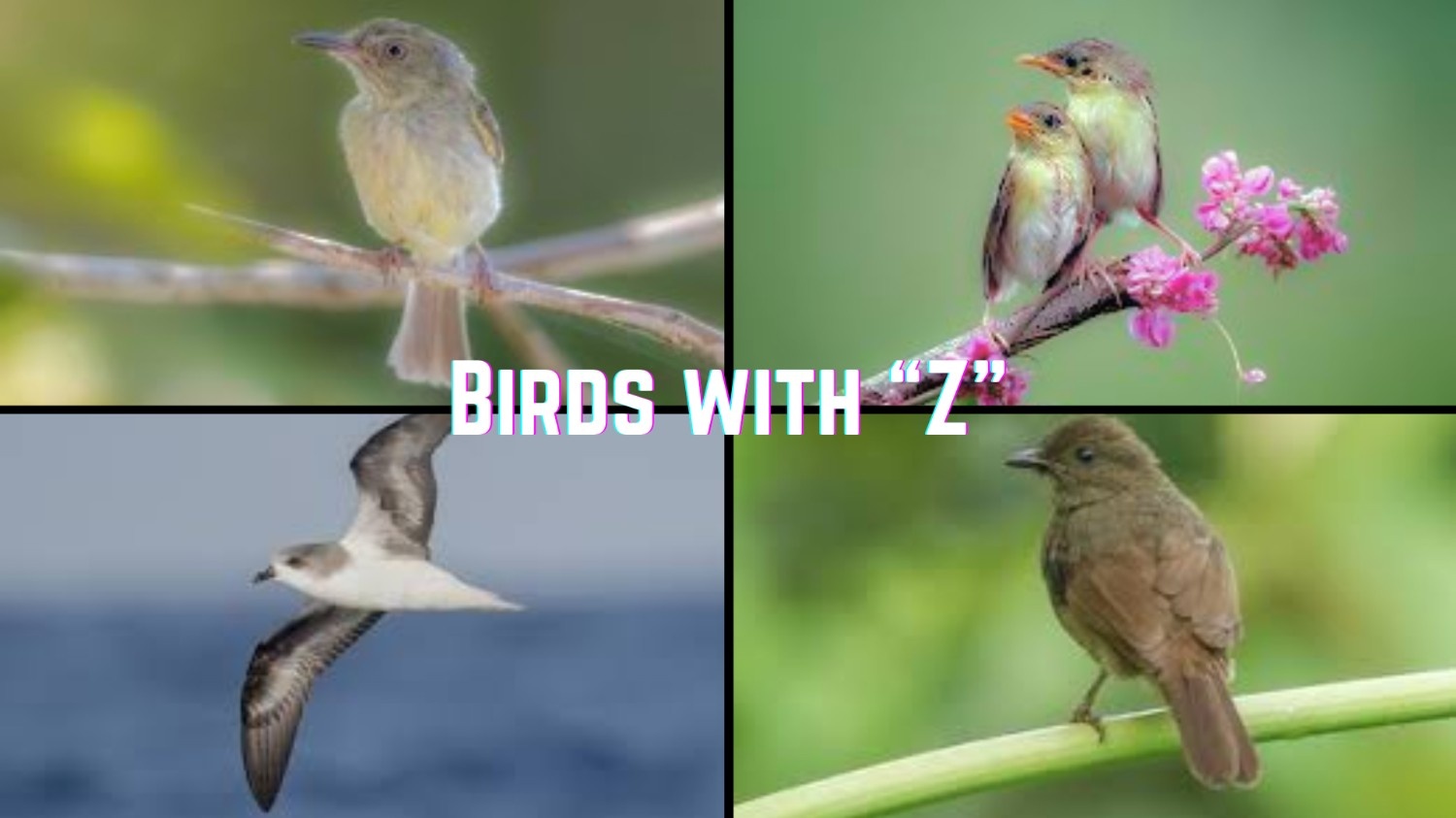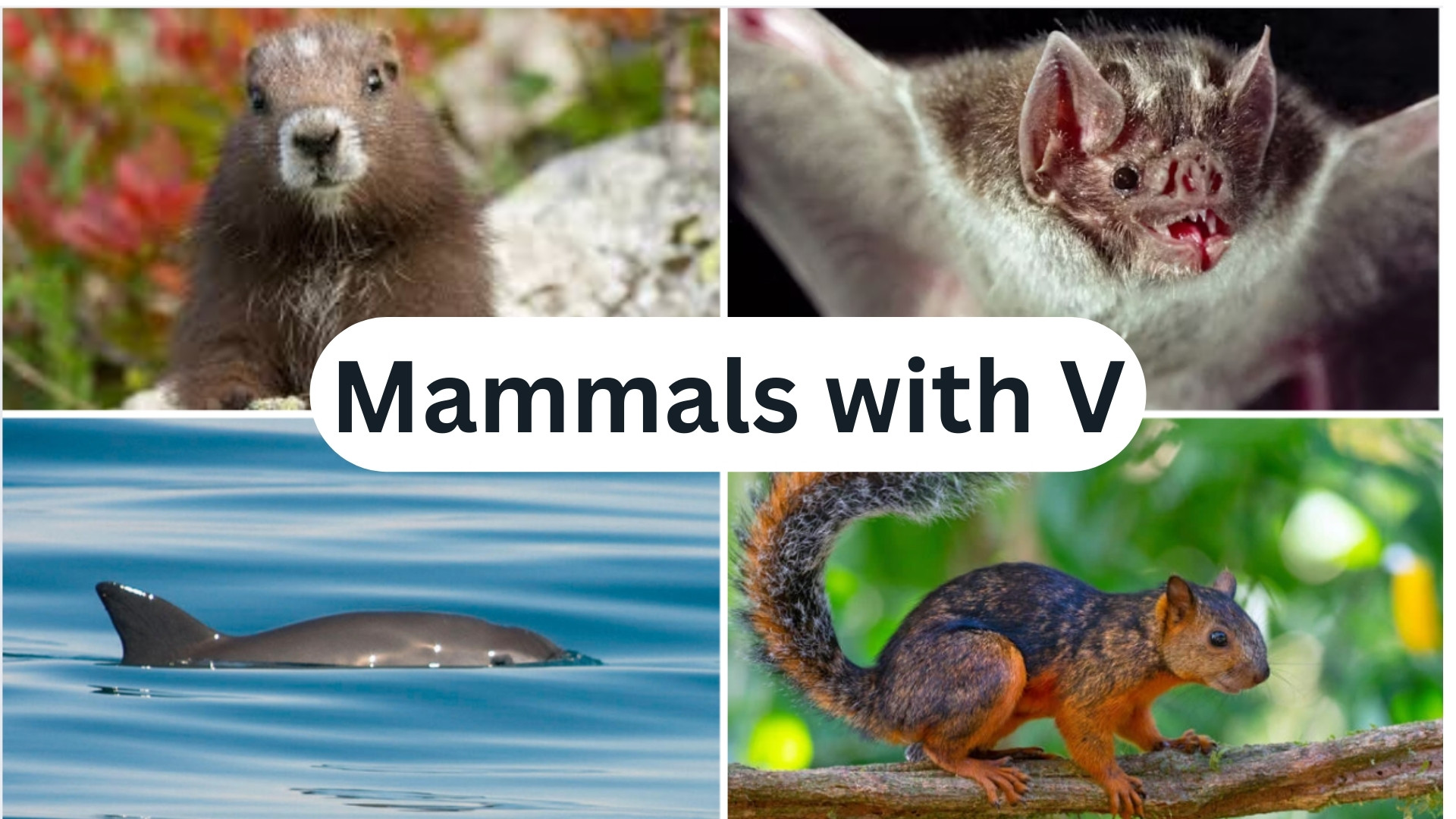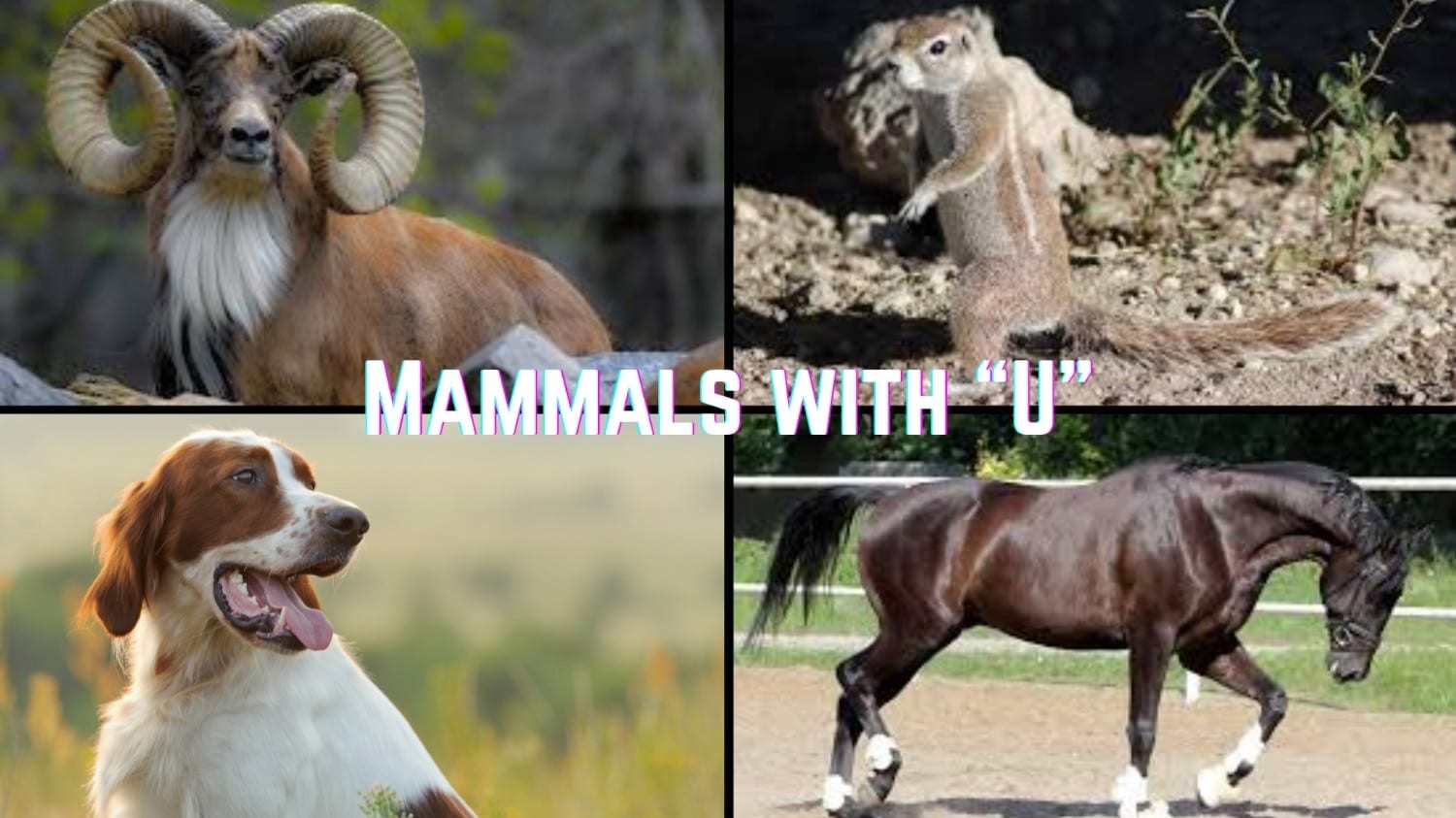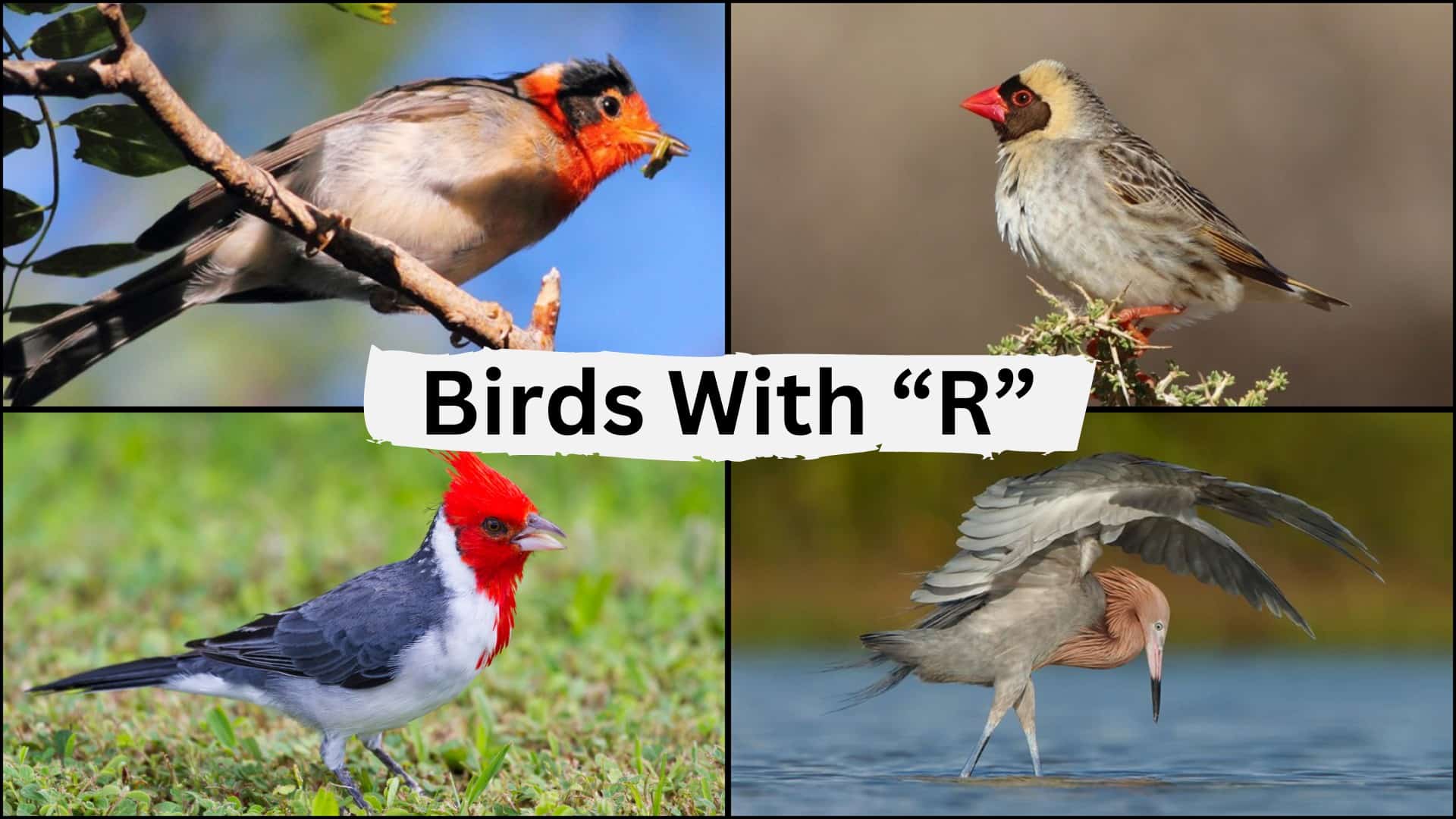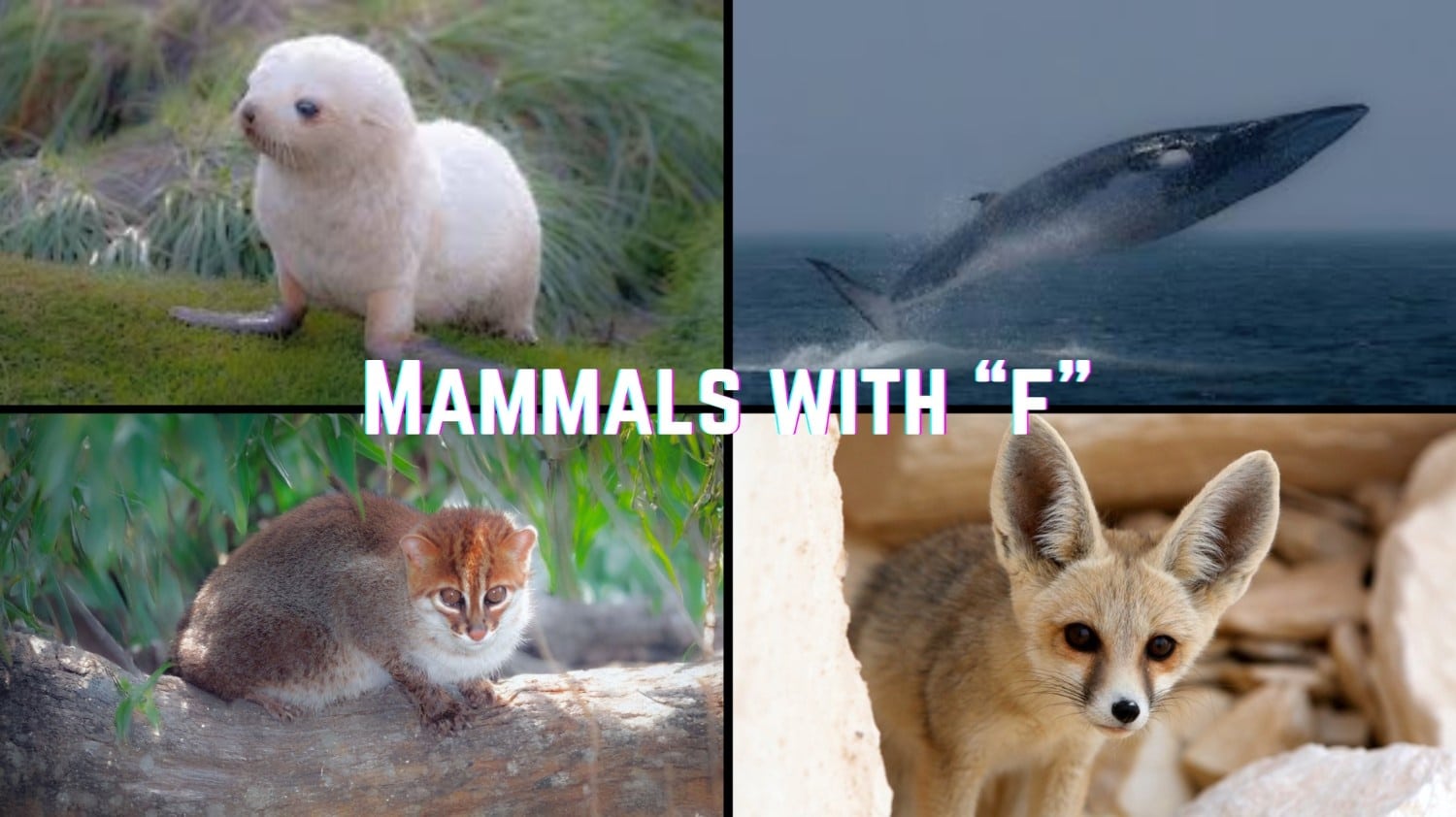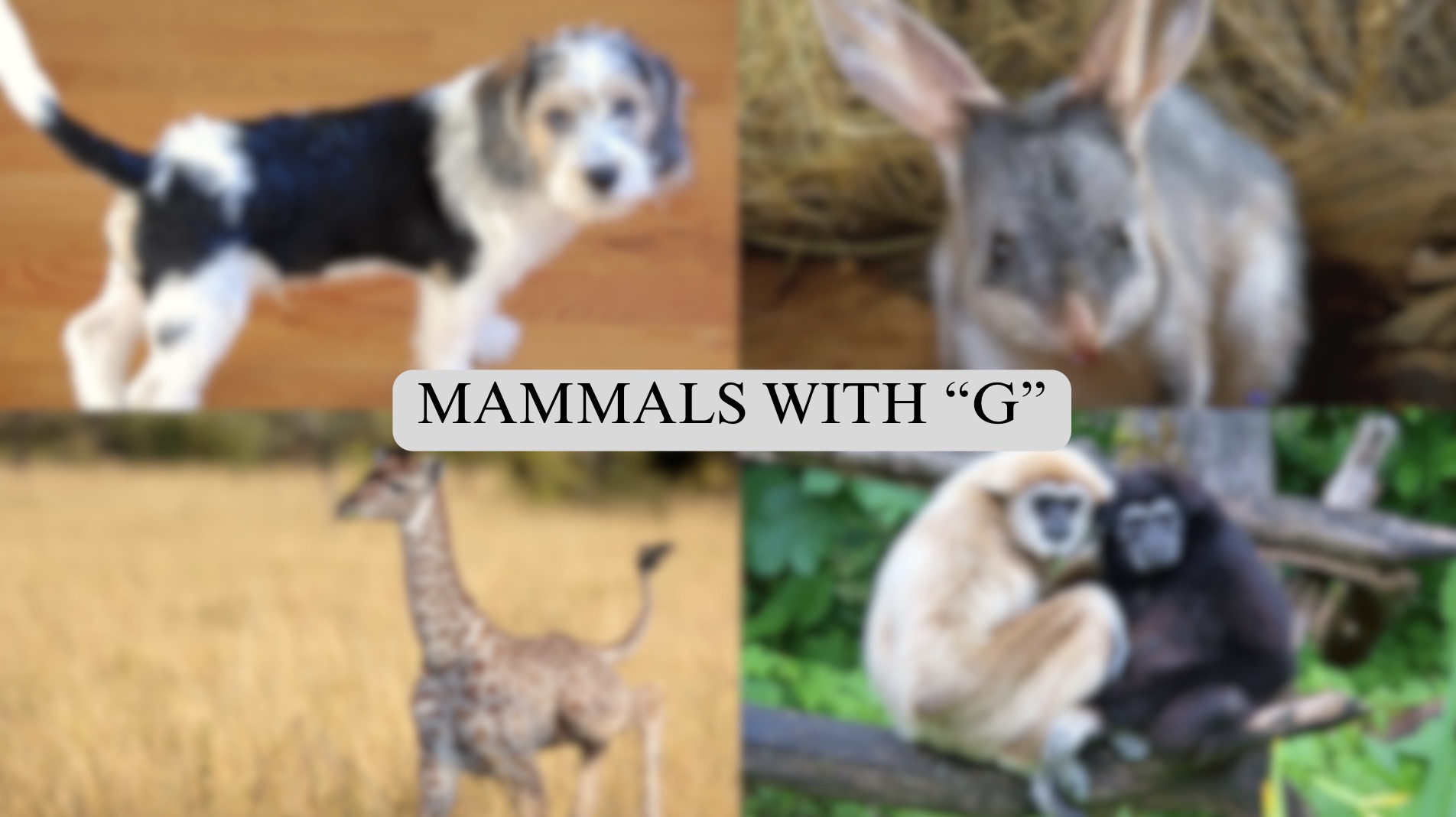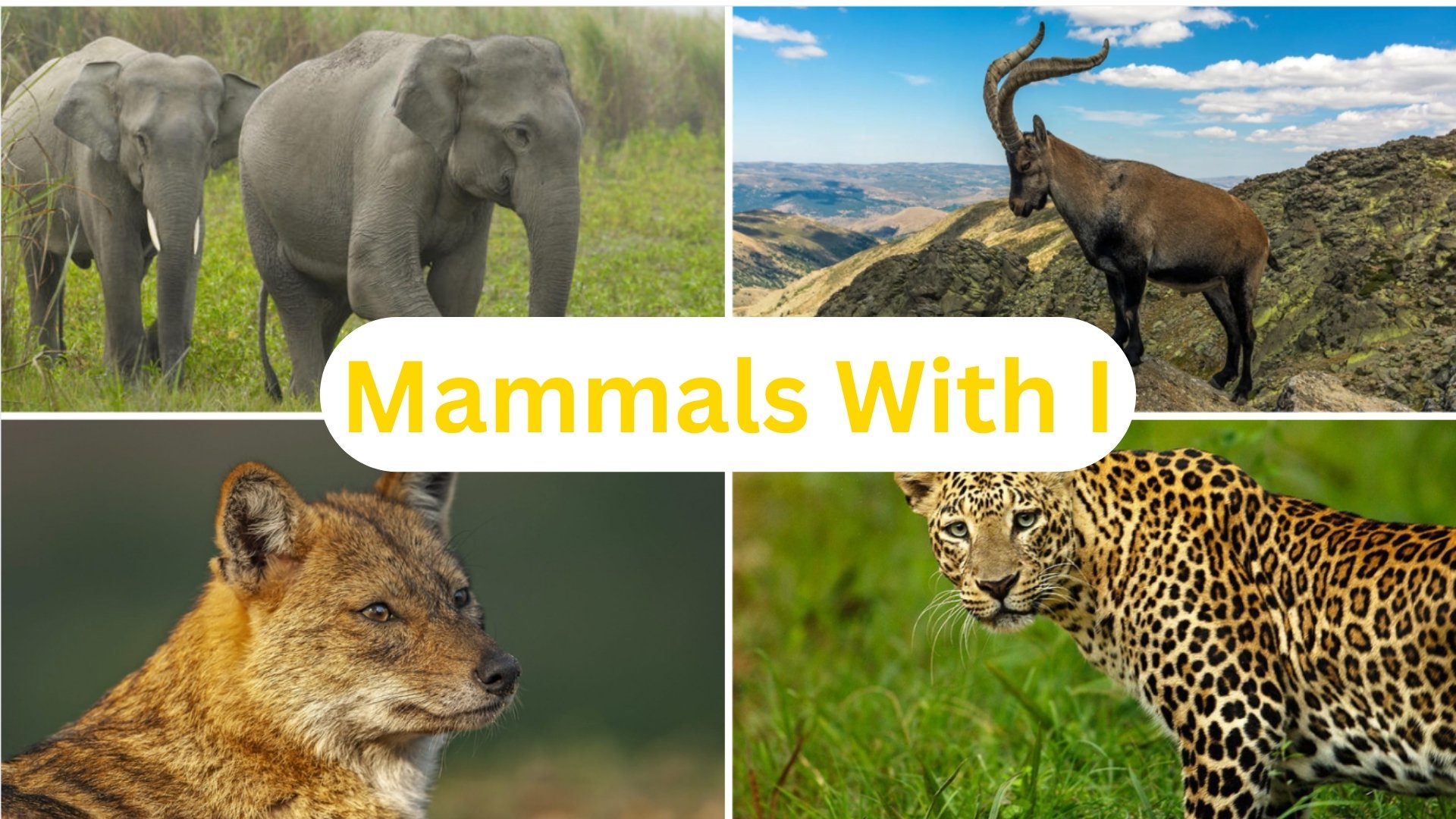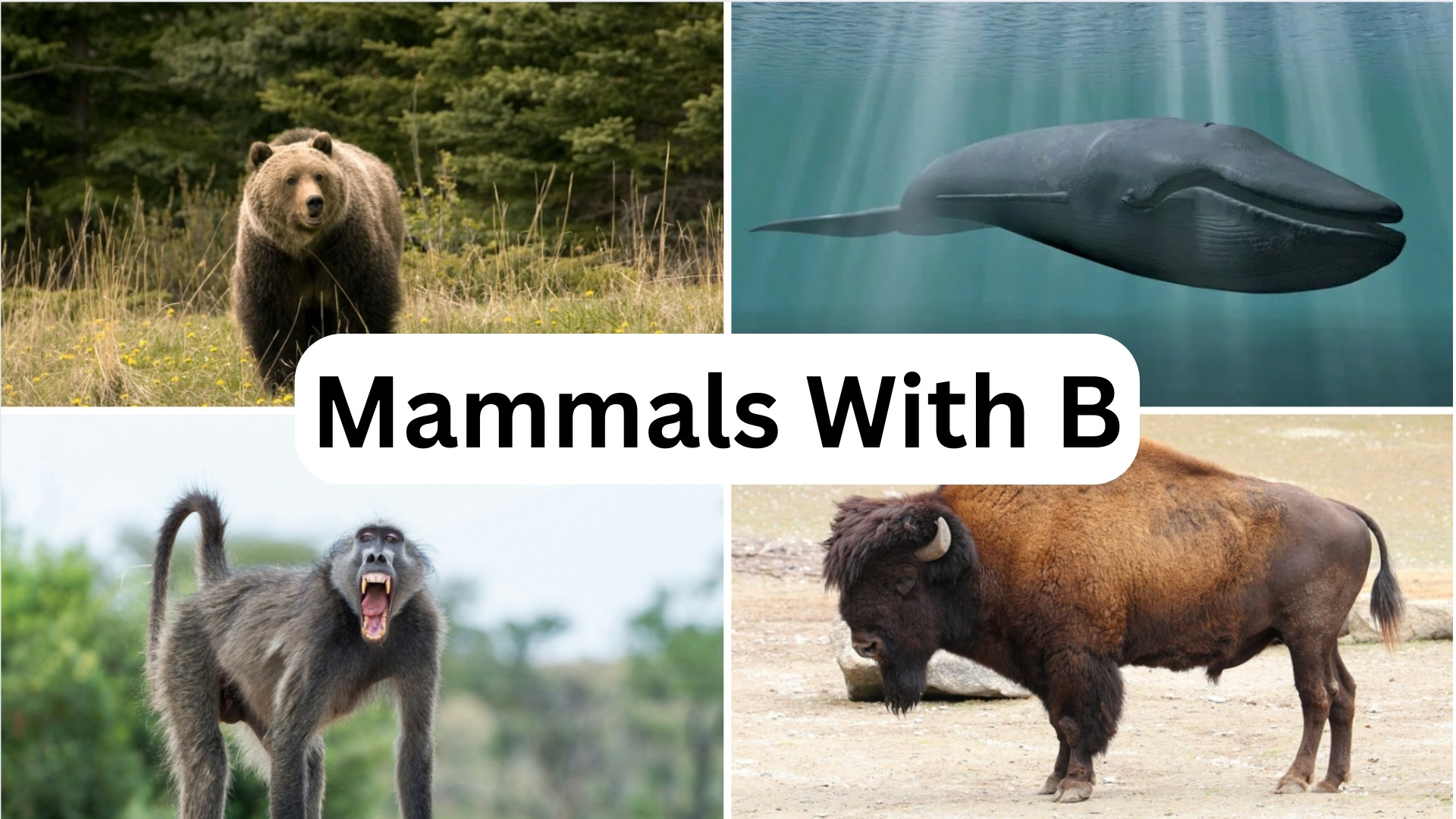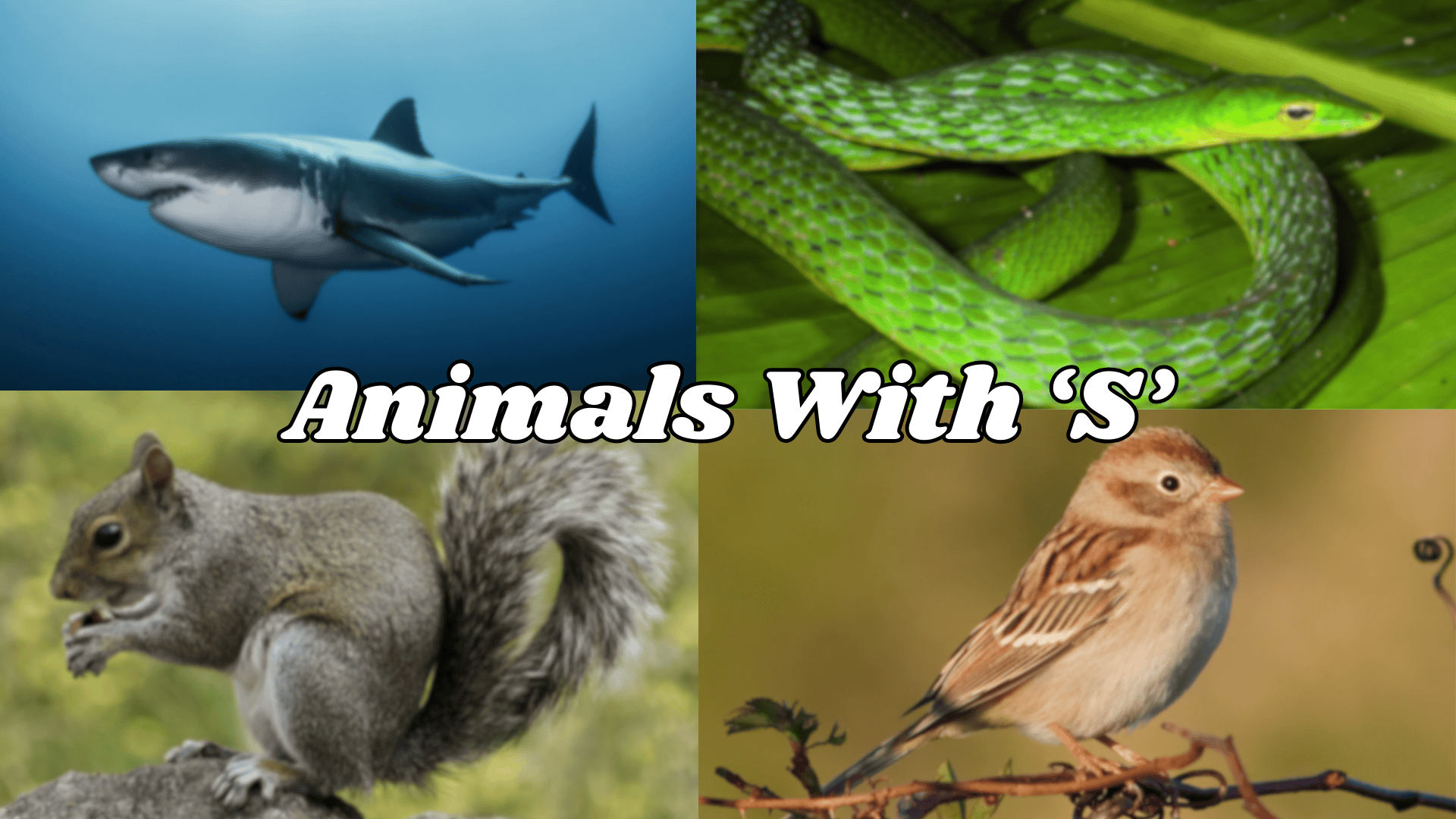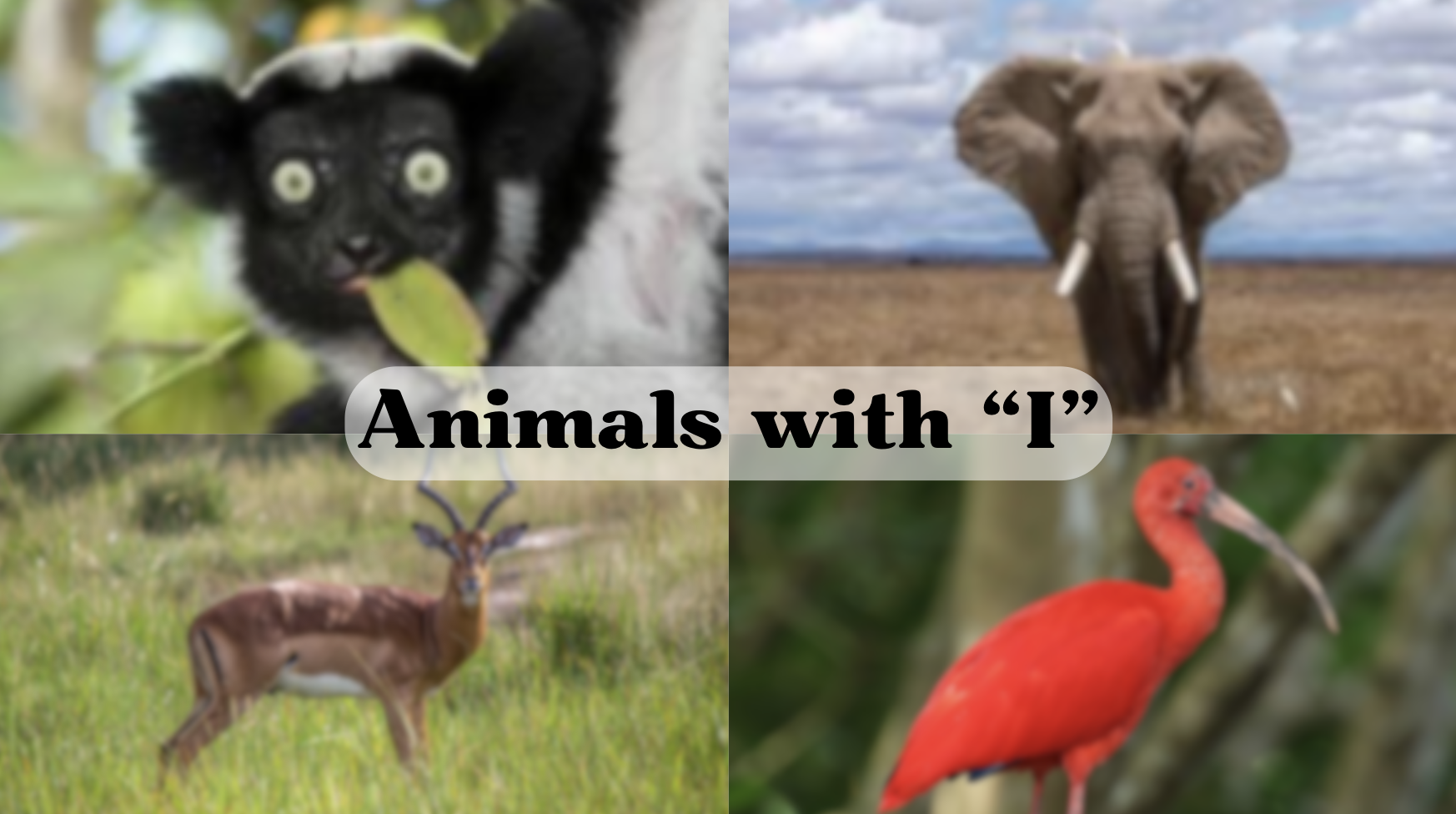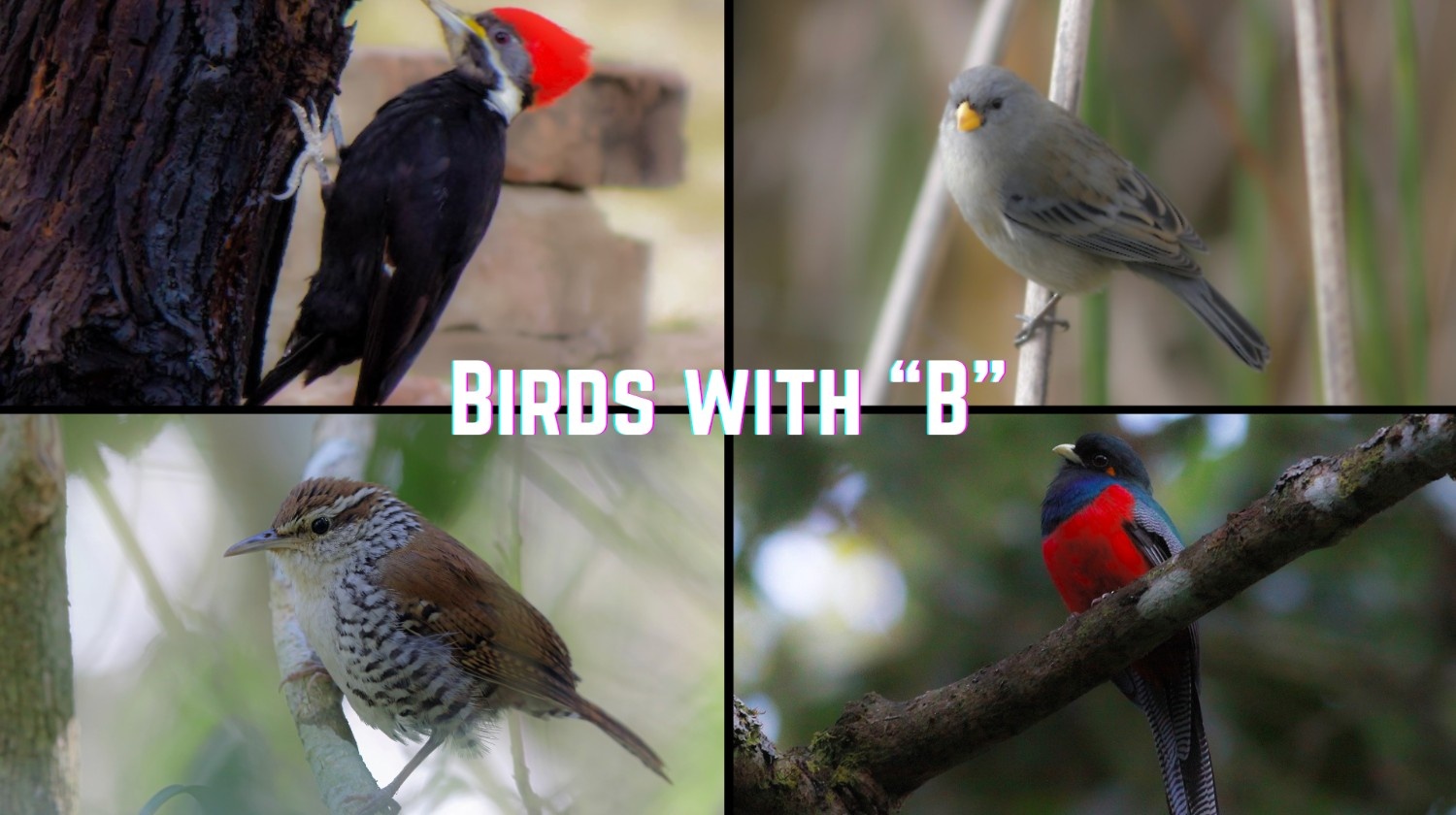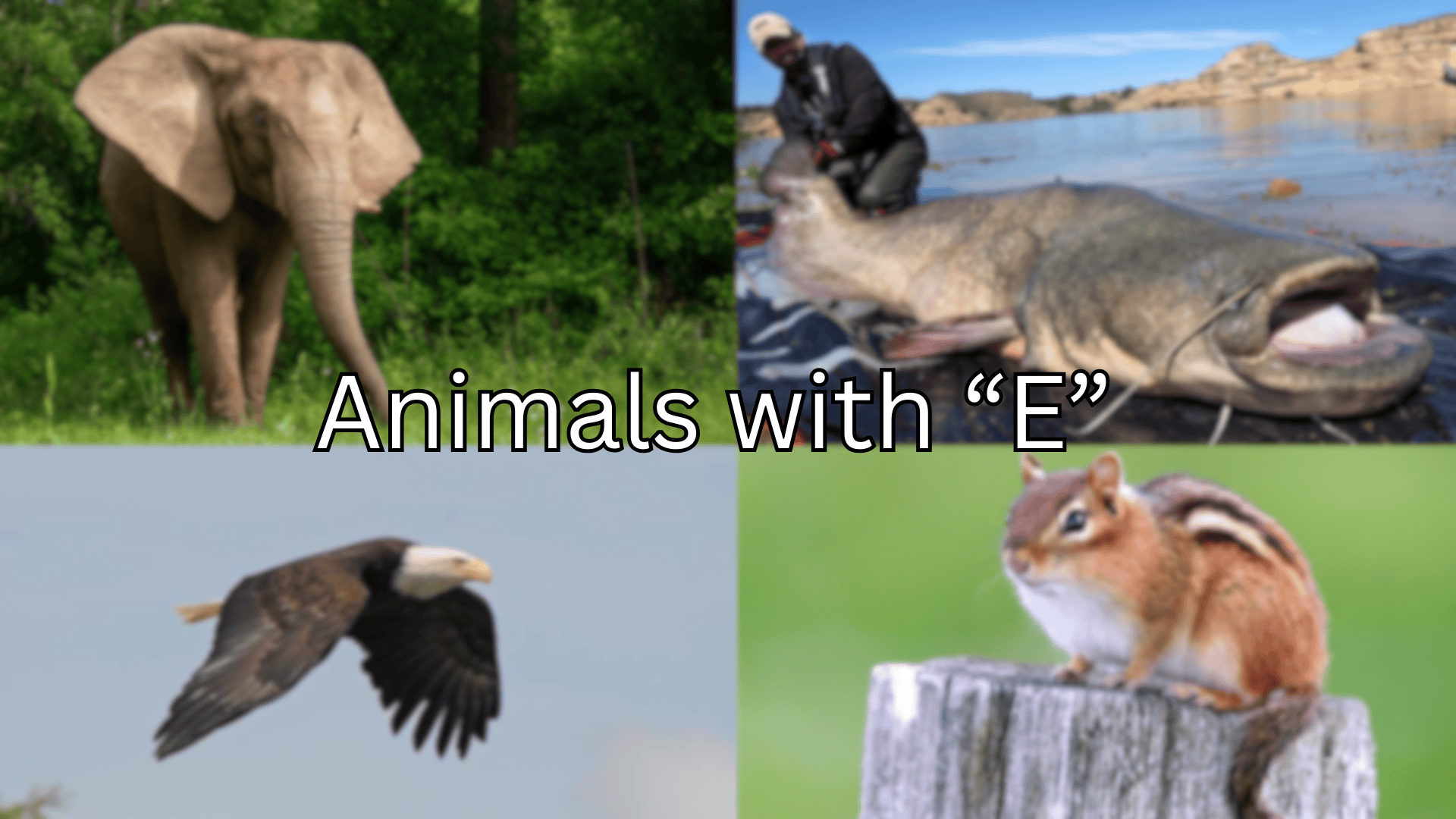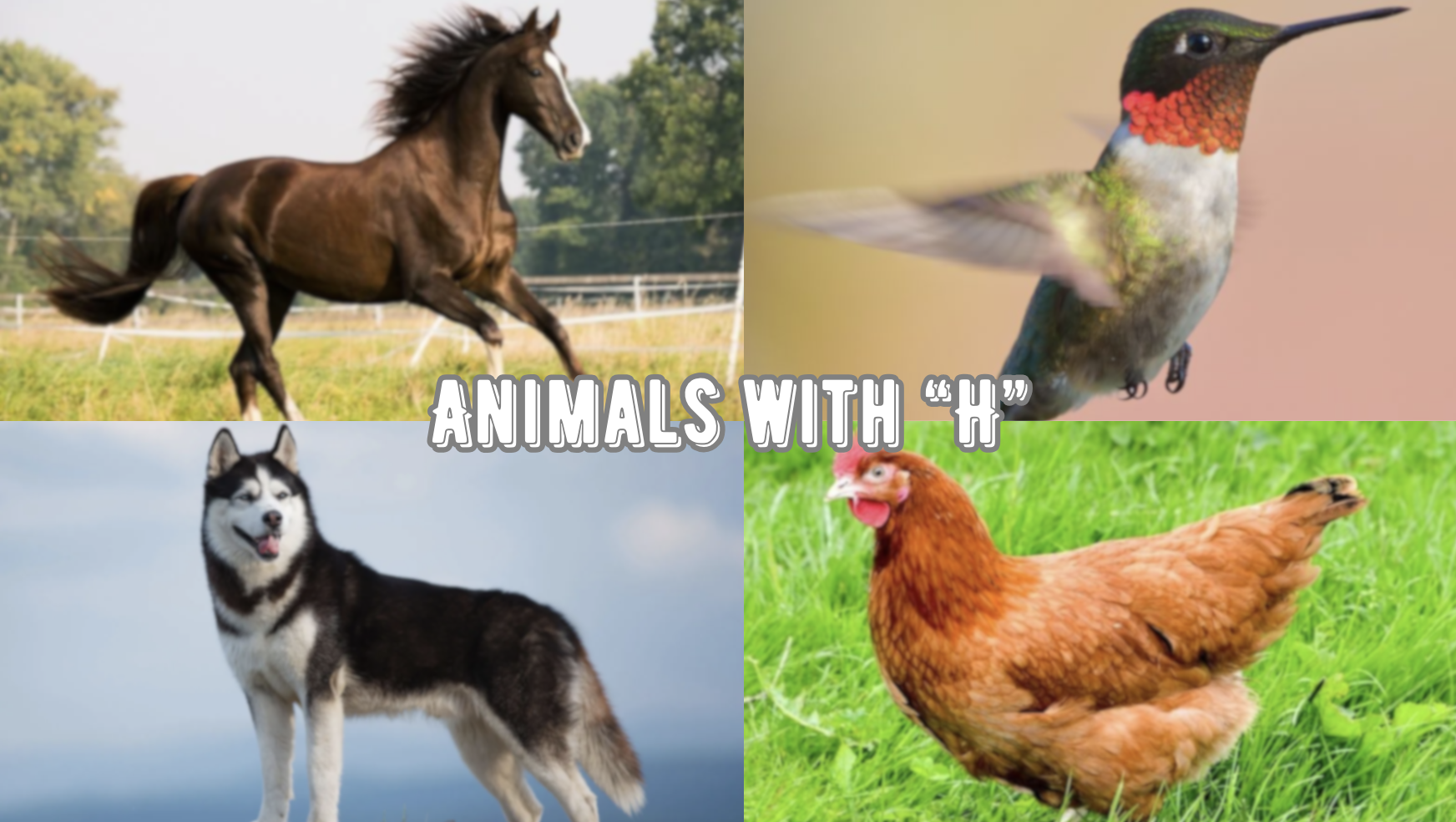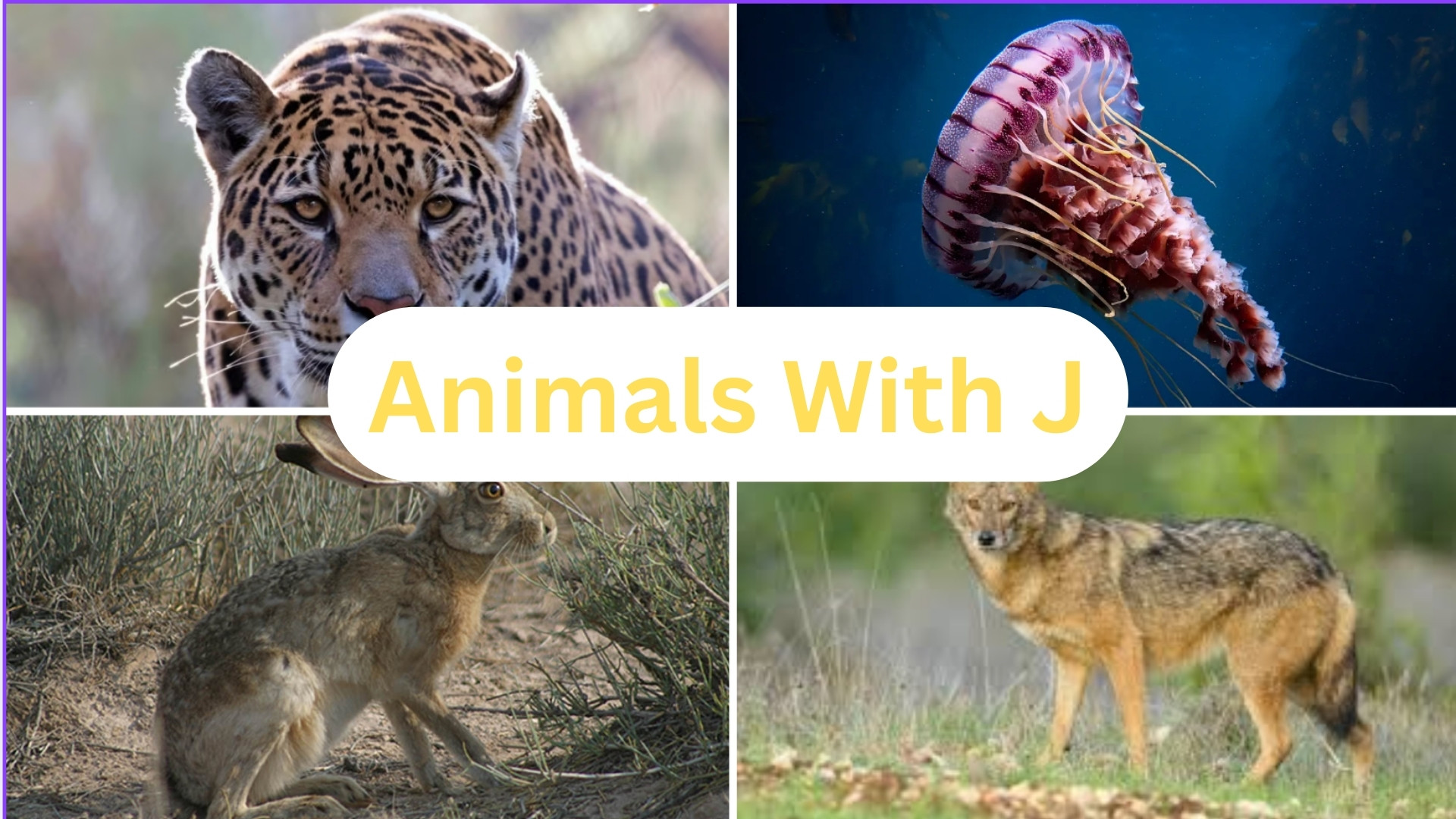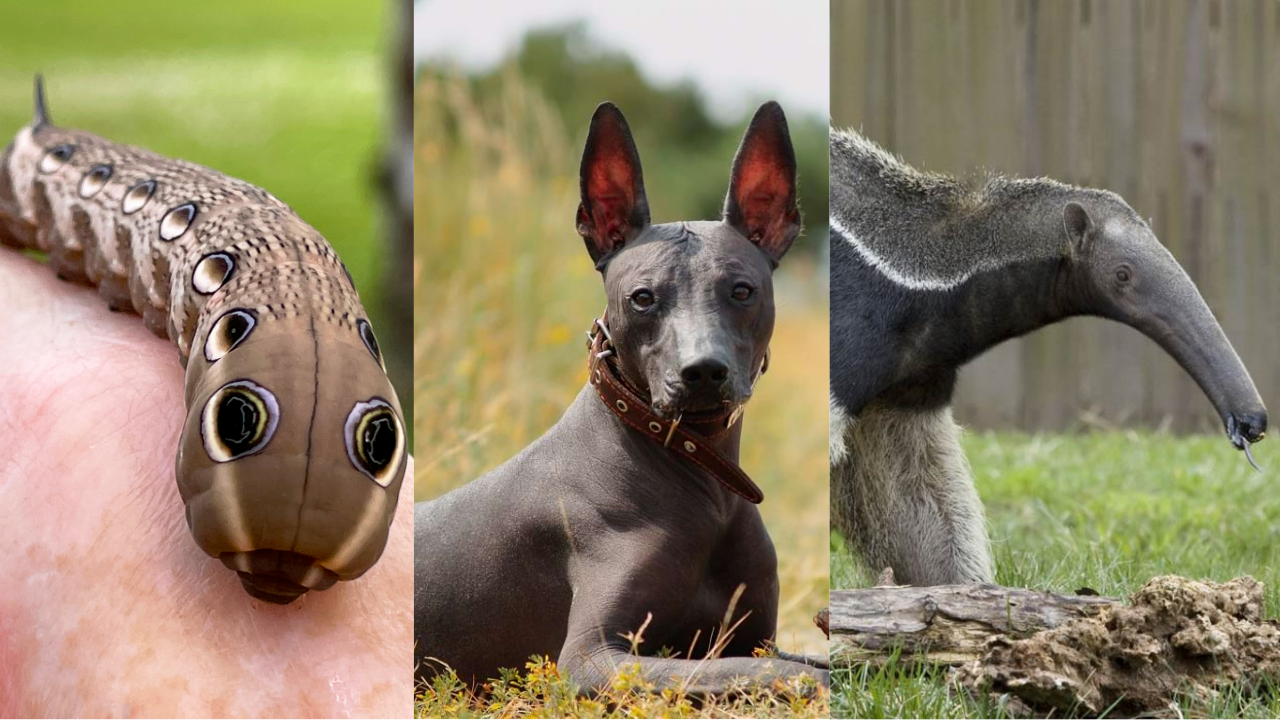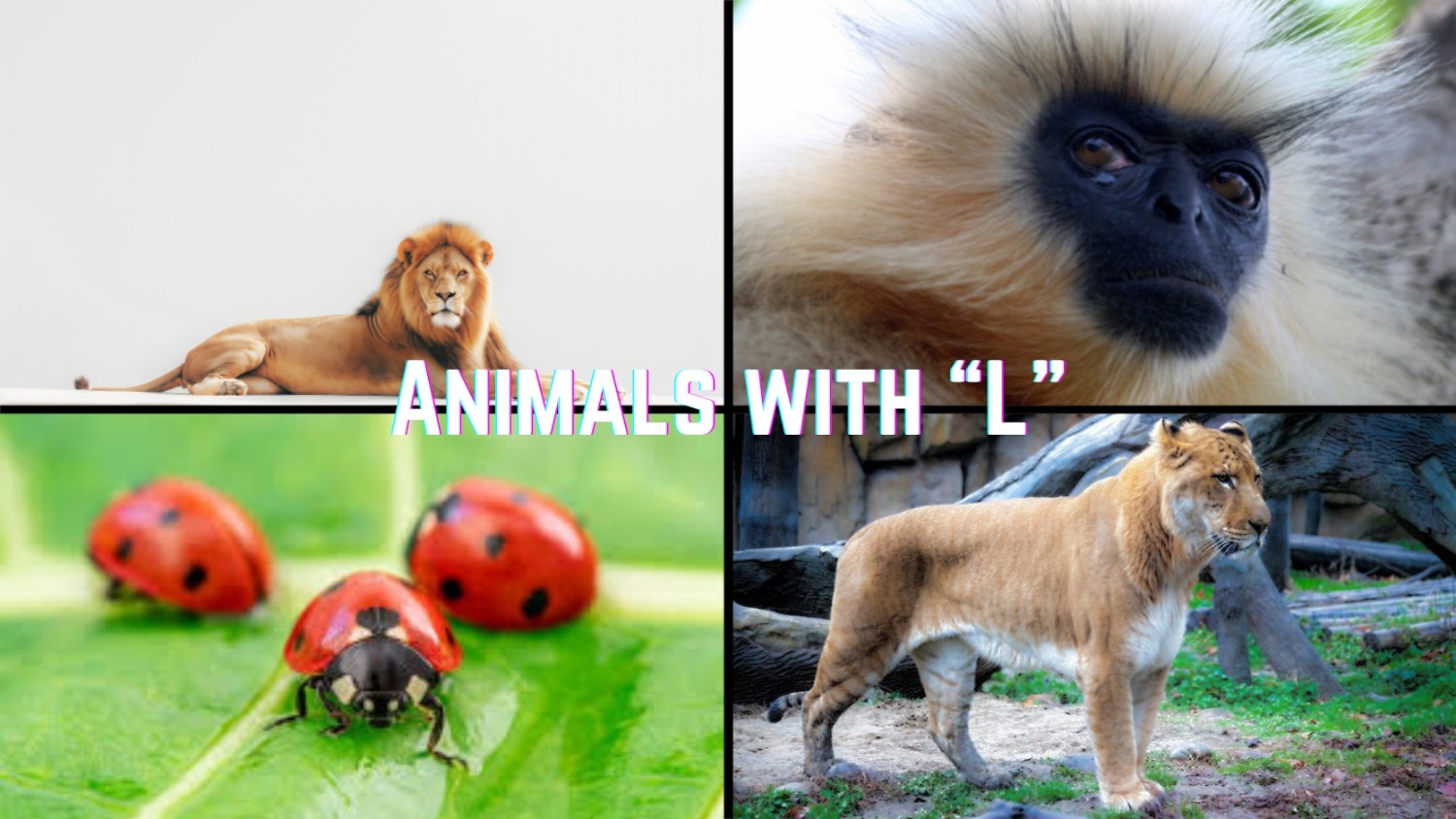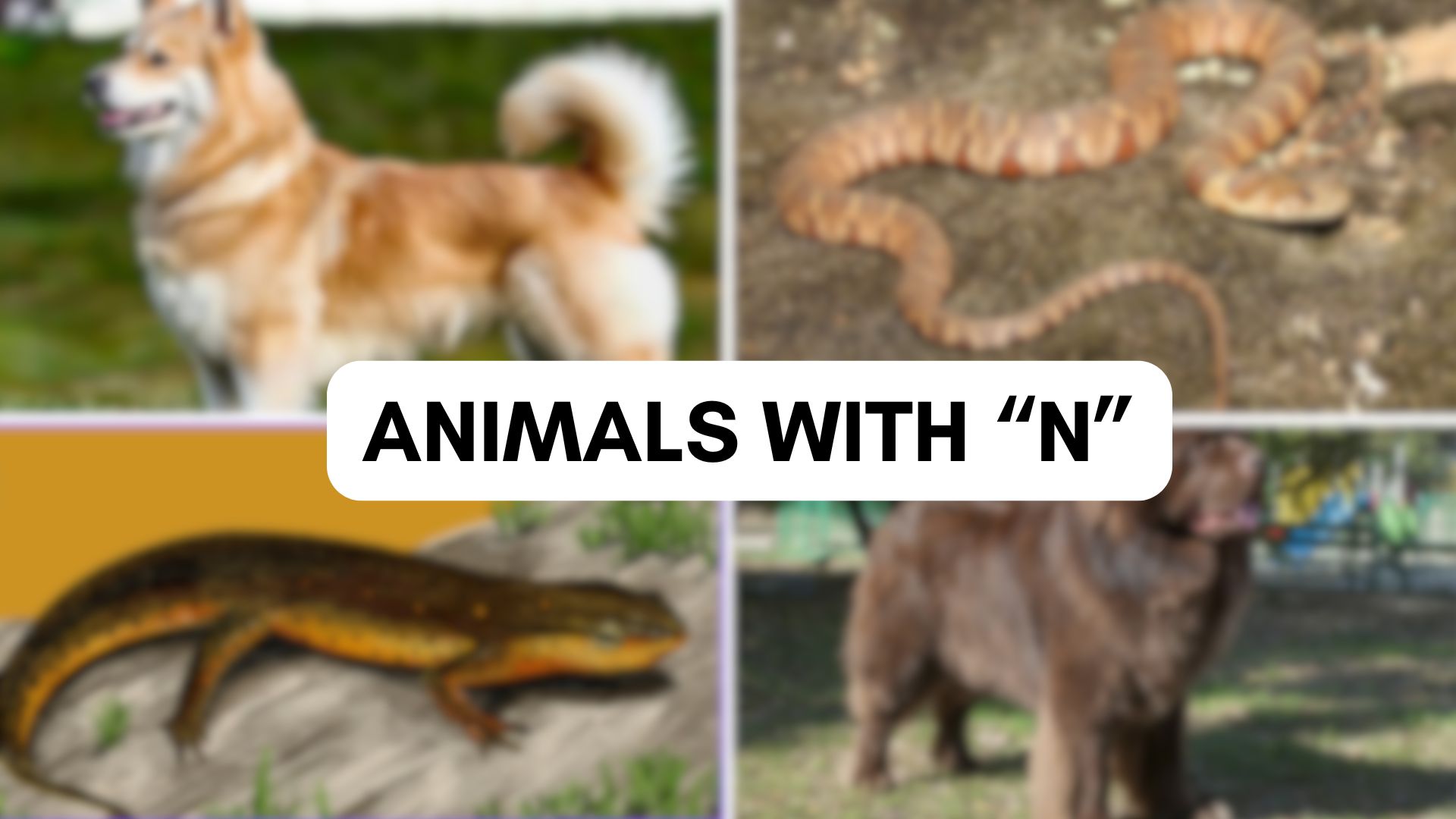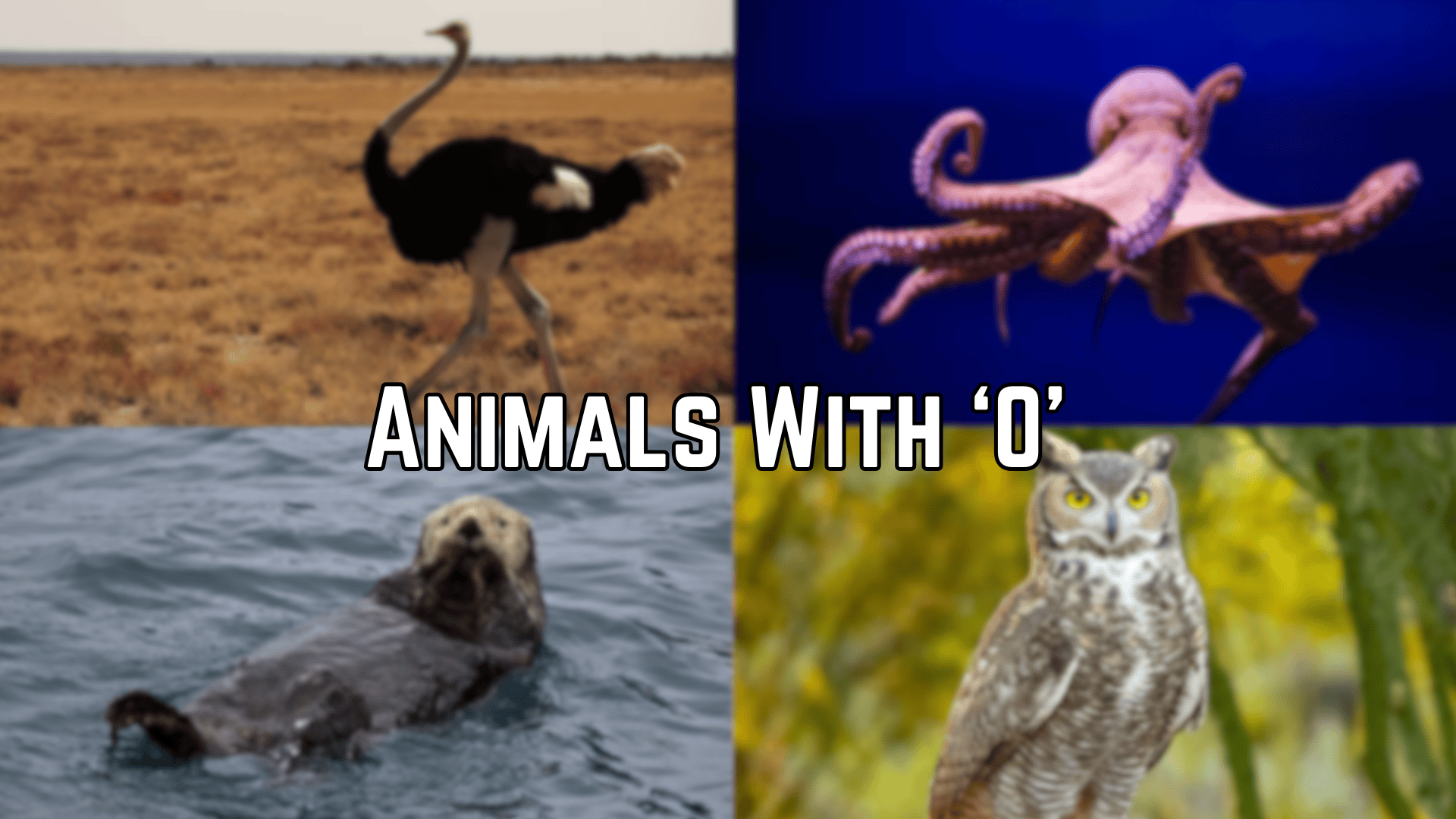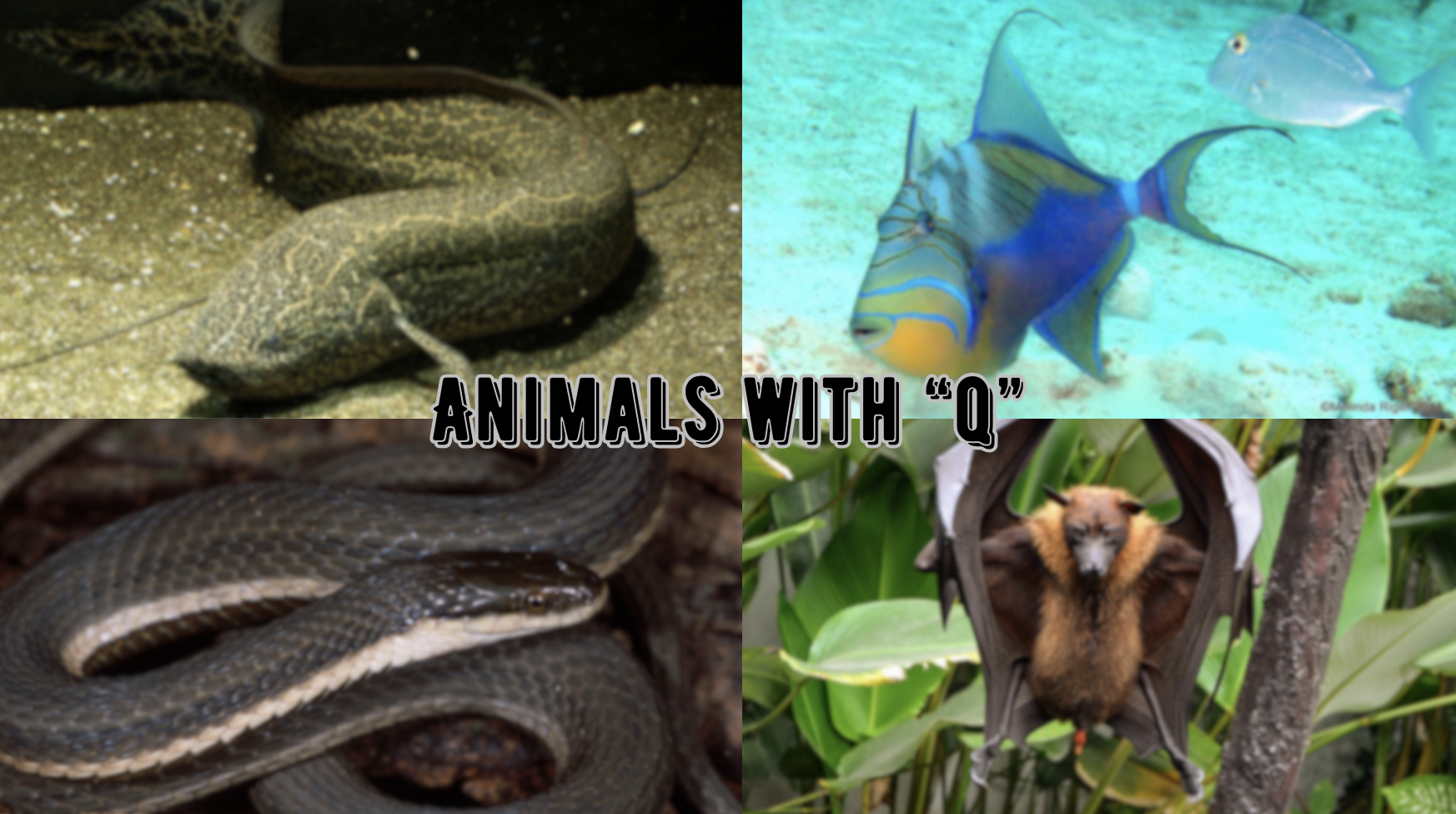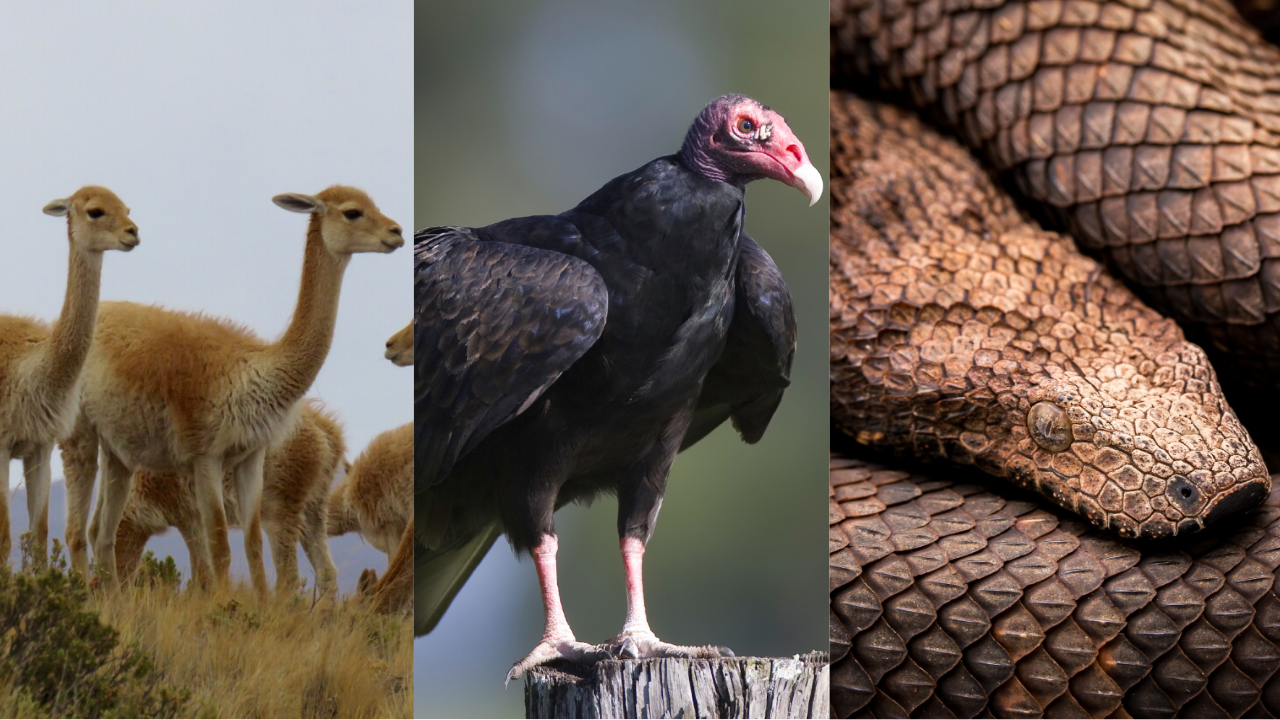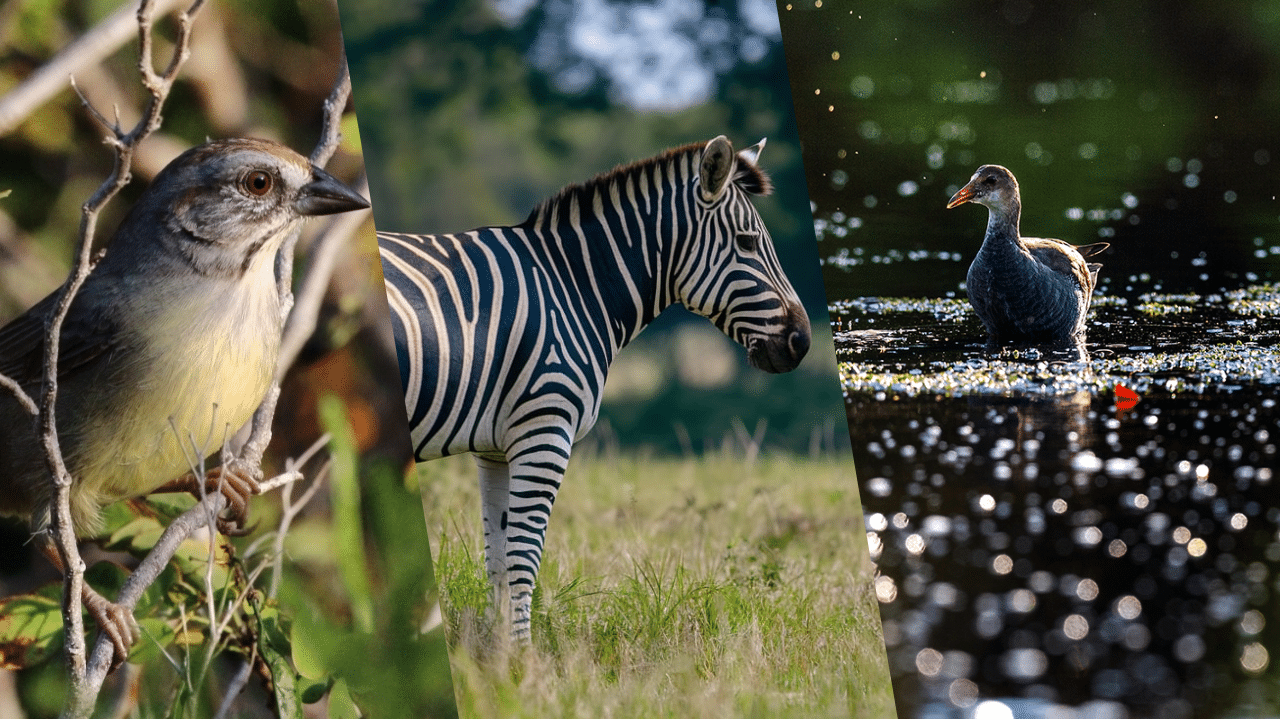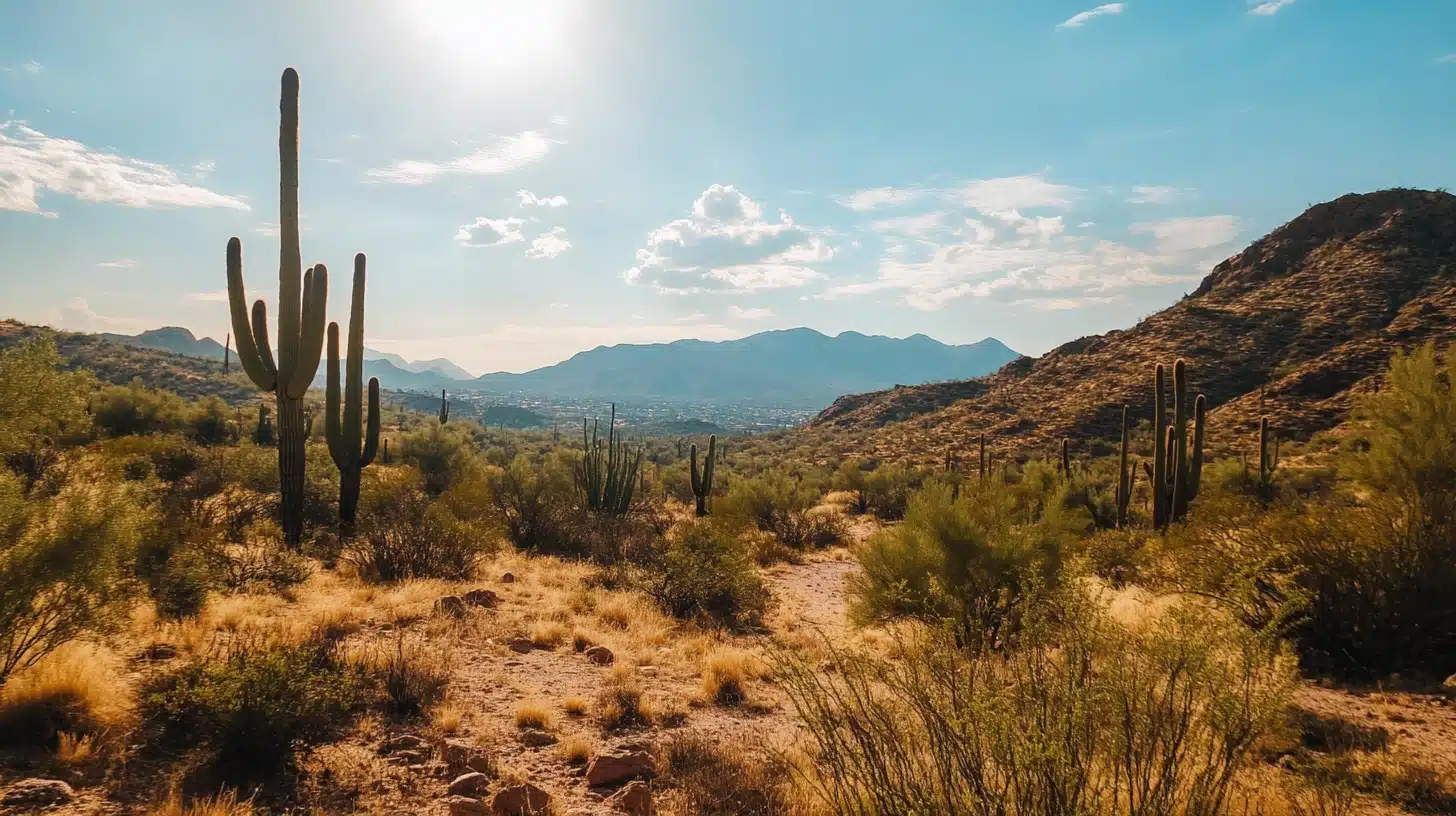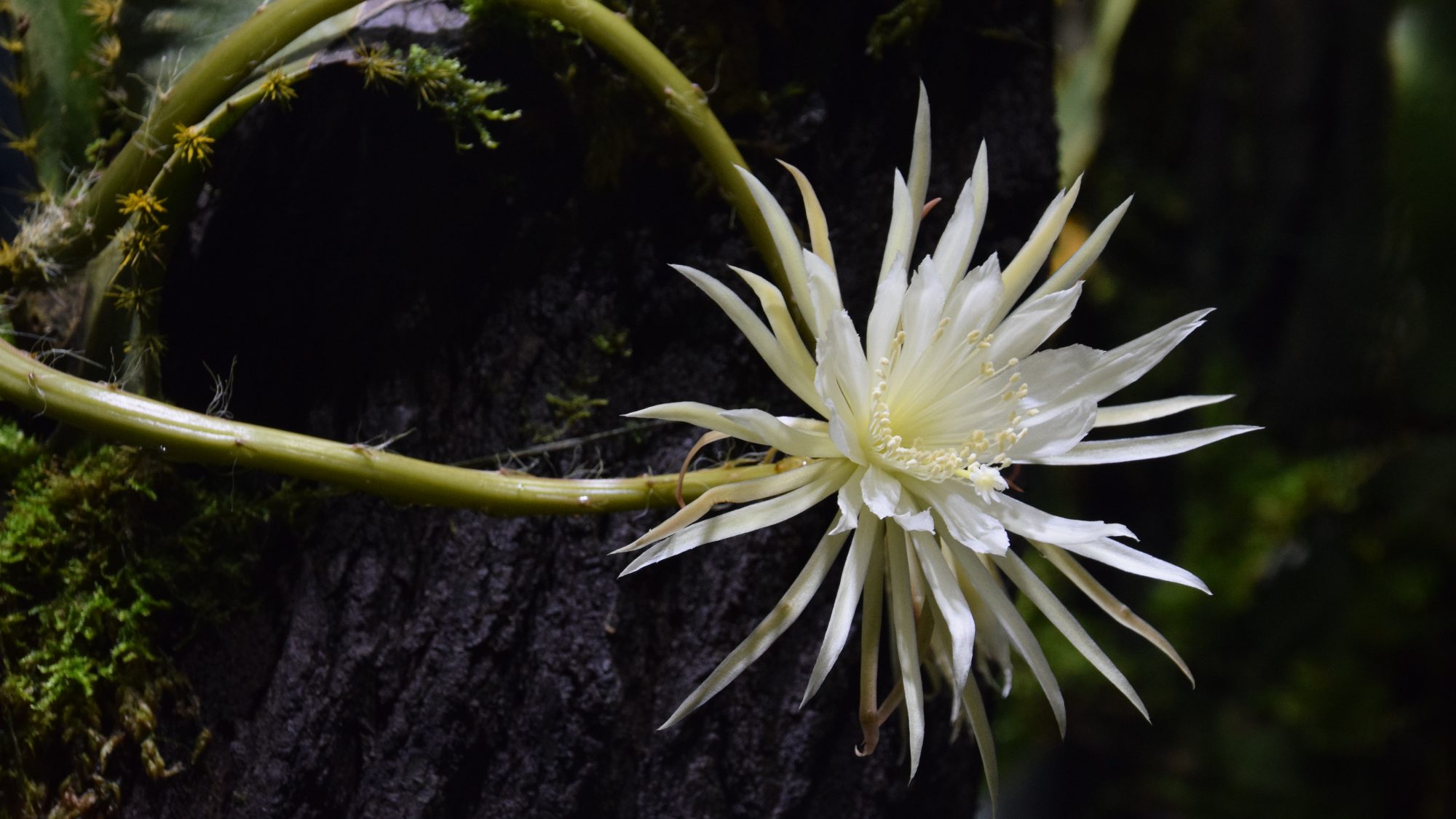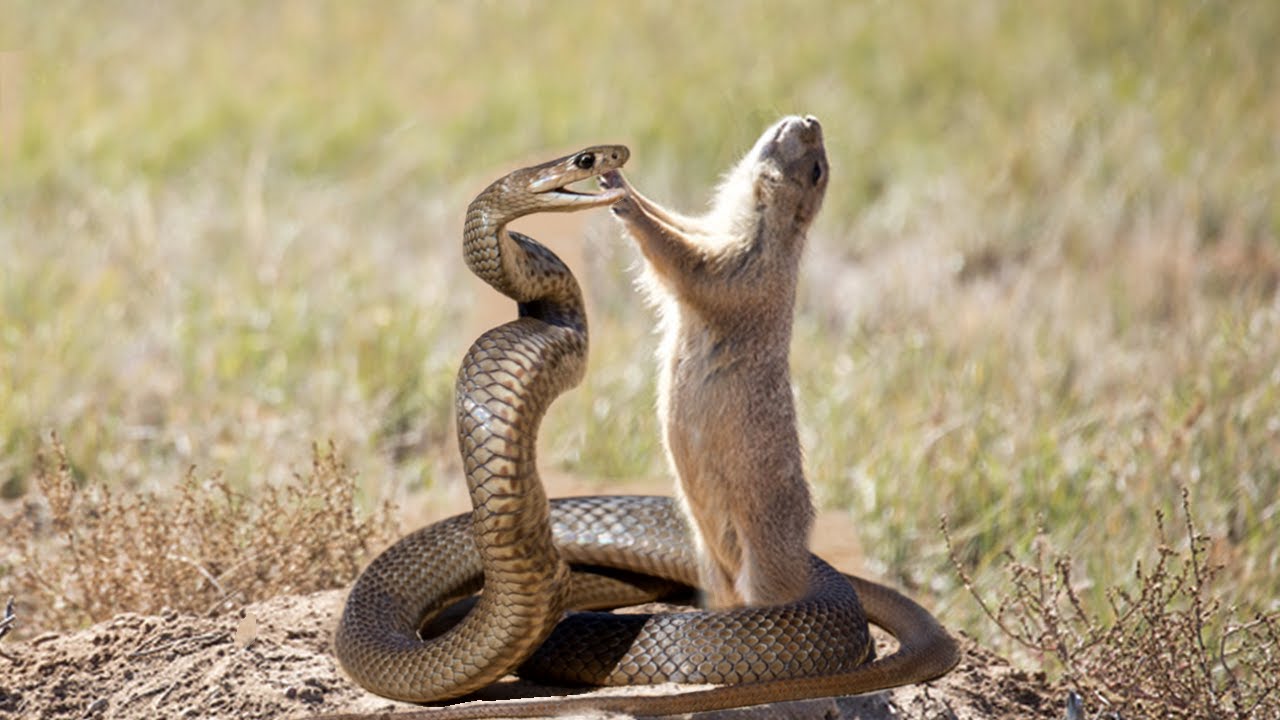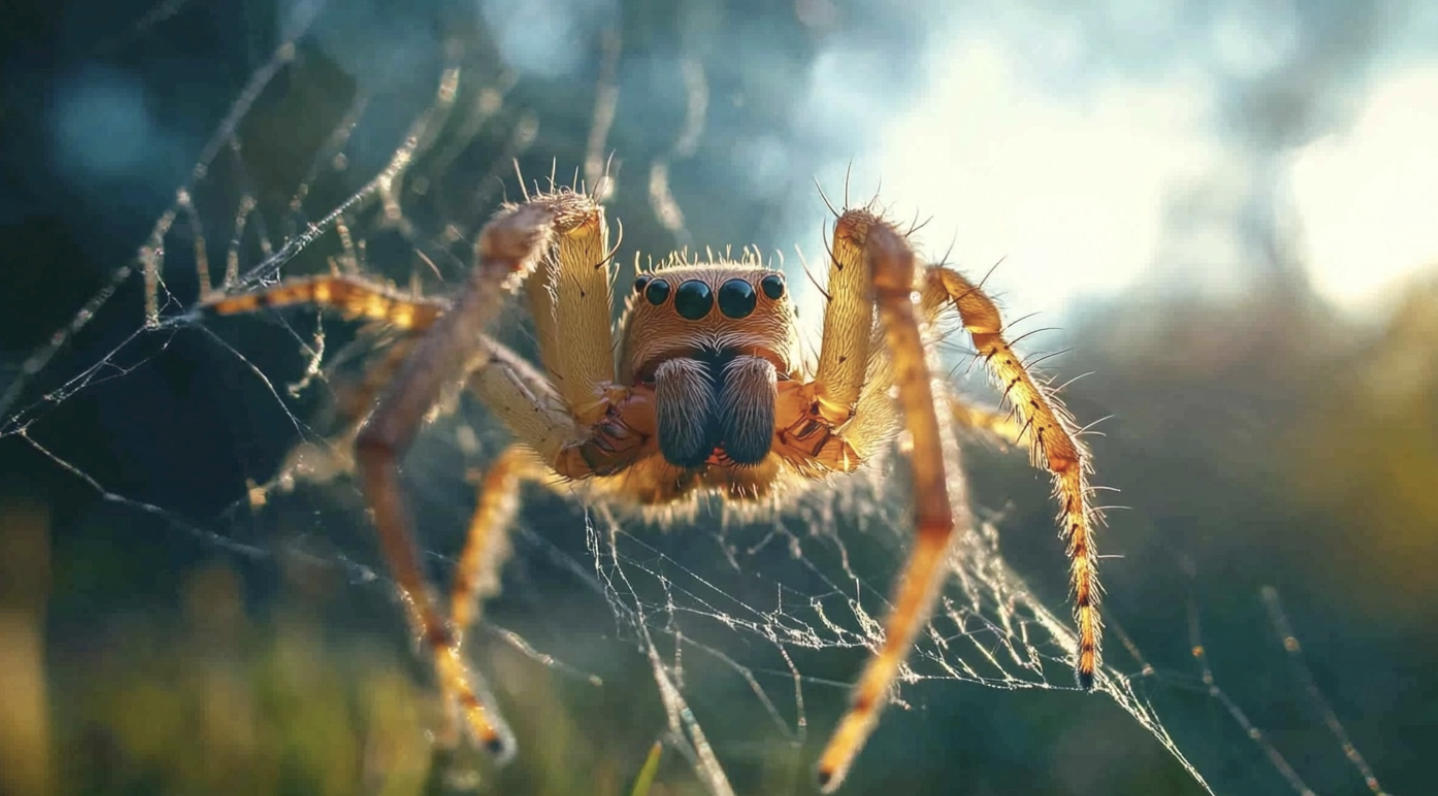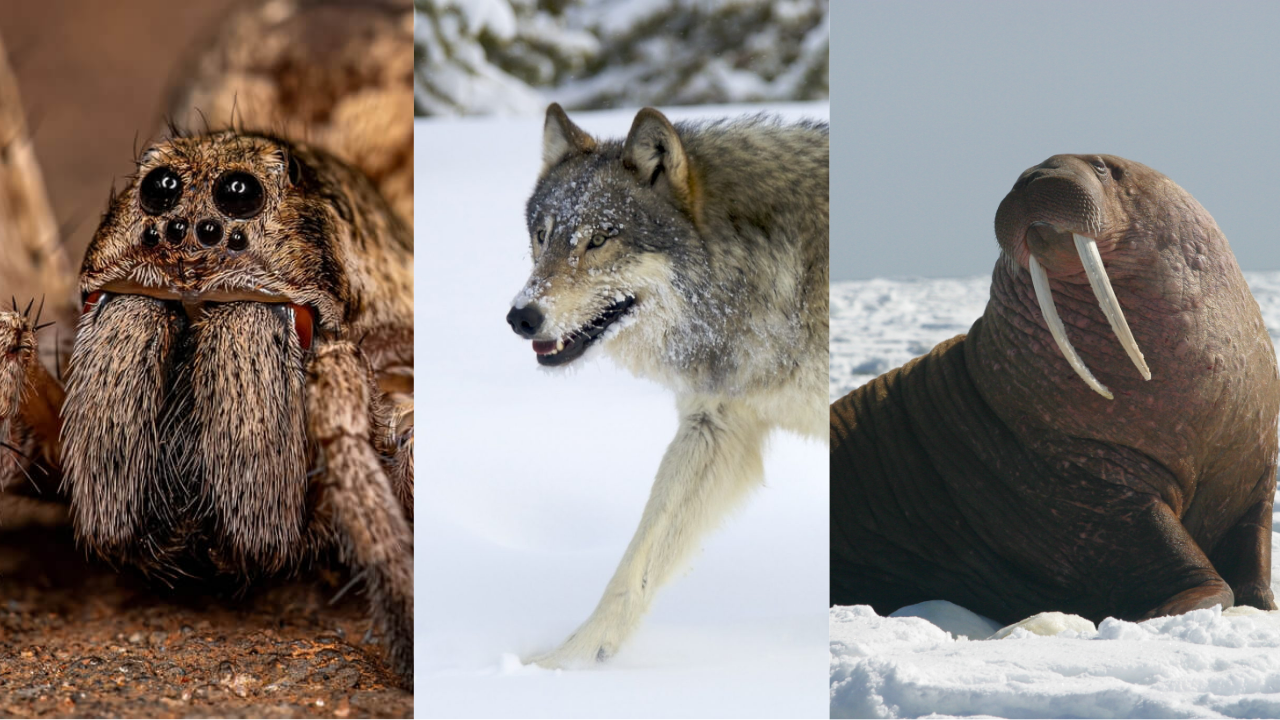
The letter “W” claims some of nature’s most formidable creatures, from the massive Whale Shark patrolling tropical seas to the microscopic Water Strider defying surface tension with every step.
This collection reveals unexpected champions—like the Wolverine, pound-for-pound one of the strongest mammals alive, capable of driving bears from their kills despite weighing just 30 pounds.
The “W” family delivers aquatic marvels like the Water Opossum with its waterproof pouch and the Weedy Sea Dragon with perfect leaf-like camouflage.
It offers both the familiar—like Wolves with their complex pack dynamics—and the obscure—like the White-Lipped Peccary forming 300-strong herds that move like a single organism through South American forests.
These animals show nature’s extraordinary problem-solving through adaptation, specialized behavior, and remarkable biology.
Popular Animals
1. Walrus
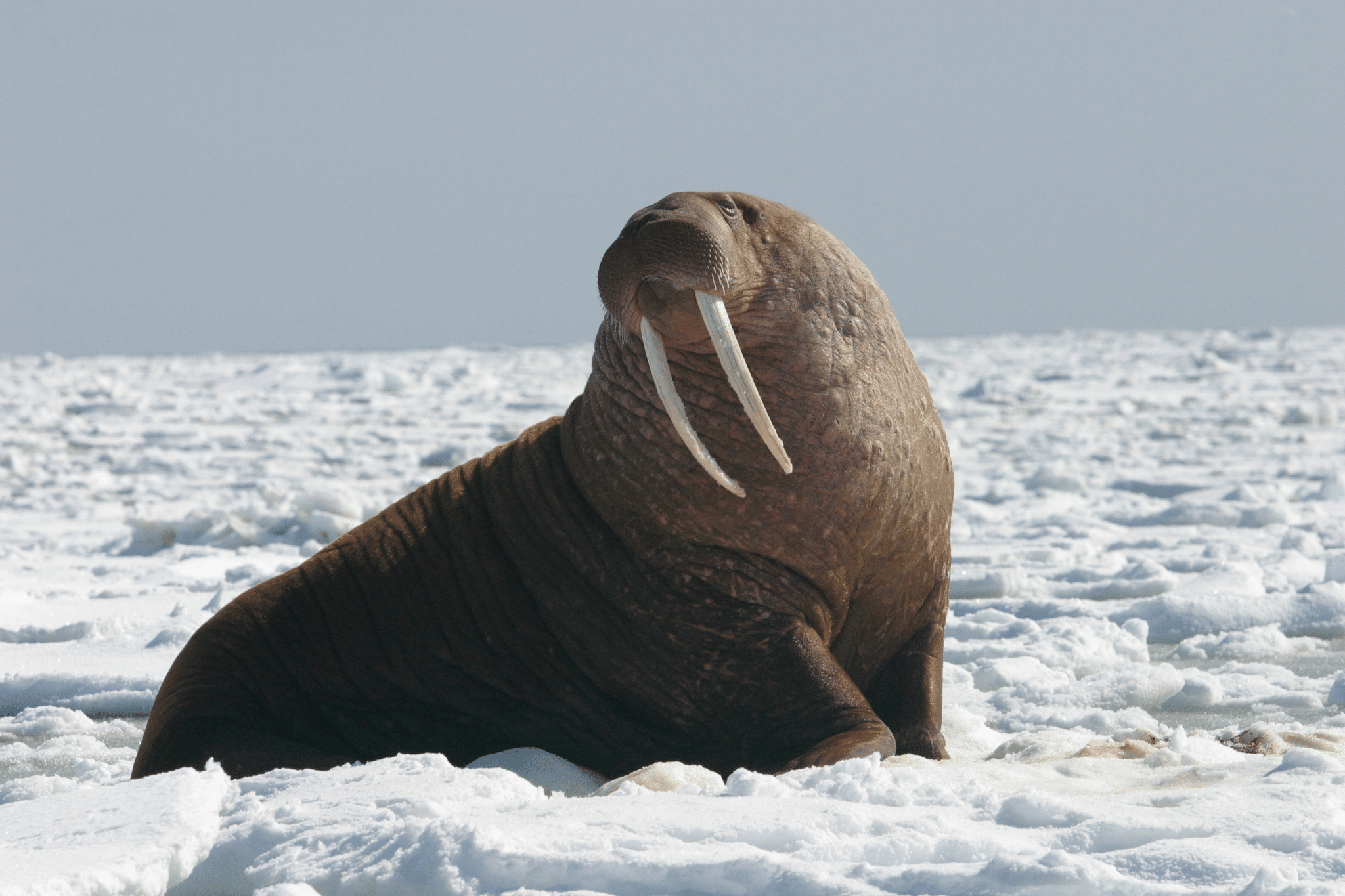
The Walrus has a massive blubbery body, distinctive long tusks, and whisker-covered muzzle with hundreds of sensitive vibrissae.
It uses its tusks to haul itself onto ice, fight for dominance, and dig through seafloor sediments for clams and mollusks.
| Scientific Name | Odobenus rosmarus |
| Origin | Arctic Circle |
| Habitat | Arctic seas and shorelines around the North Pole |
| Fun Fact | Their thick skin wrinkles when dry but smooths underwater; they can slow their heartbeat to stay submerged for up to 30 minutes. |
2. Whale
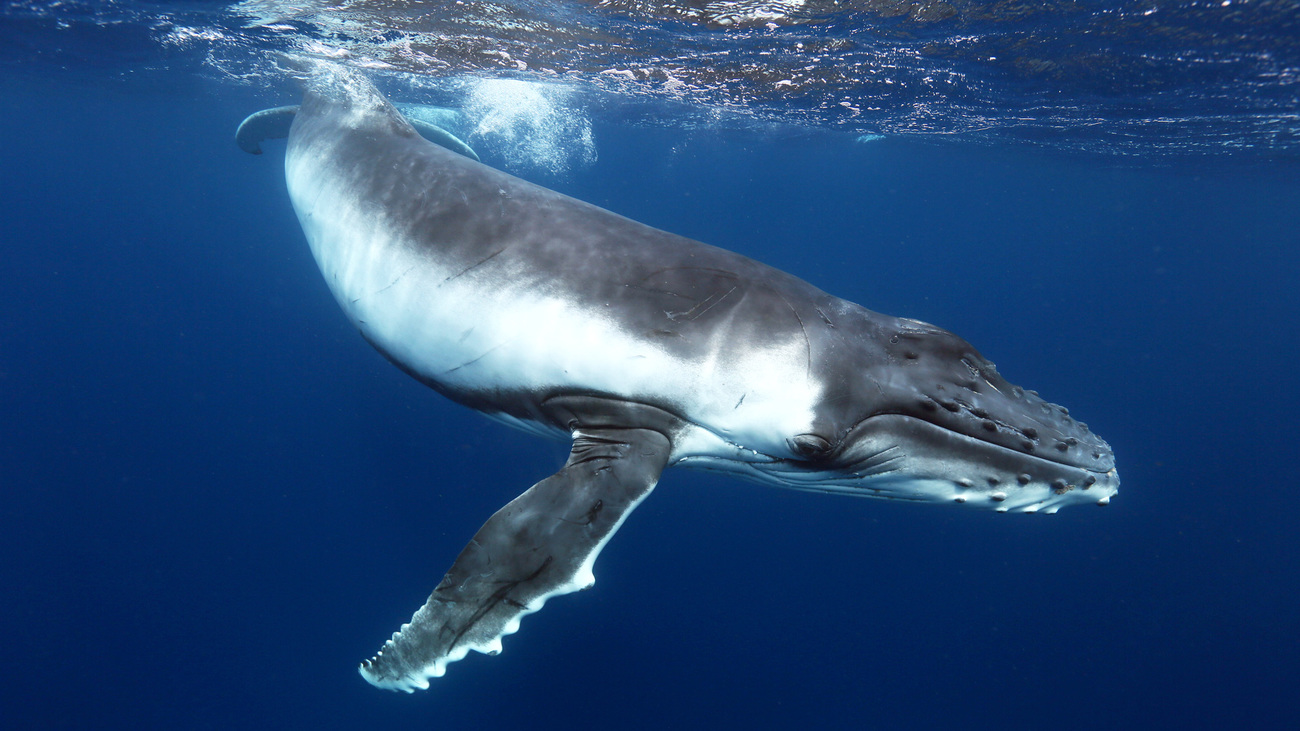
Whales have streamlined bodies with horizontal tail flukes, blowholes on top of their heads, and no external hind limbs.
They possess specialized fat-rich blubber for insulation, complex communication systems, and remarkable diving capabilities.
| Scientific Name | Various (Order Cetacea) |
| Origin | Evolved from land mammals that returned to the sea |
| Habitat | Oceans worldwide, from polar to tropical waters |
| Fun Fact | The blue whale’s heart is the size of a small car, and its blood vessels are large enough for a human to swim through. |
3. Wolf
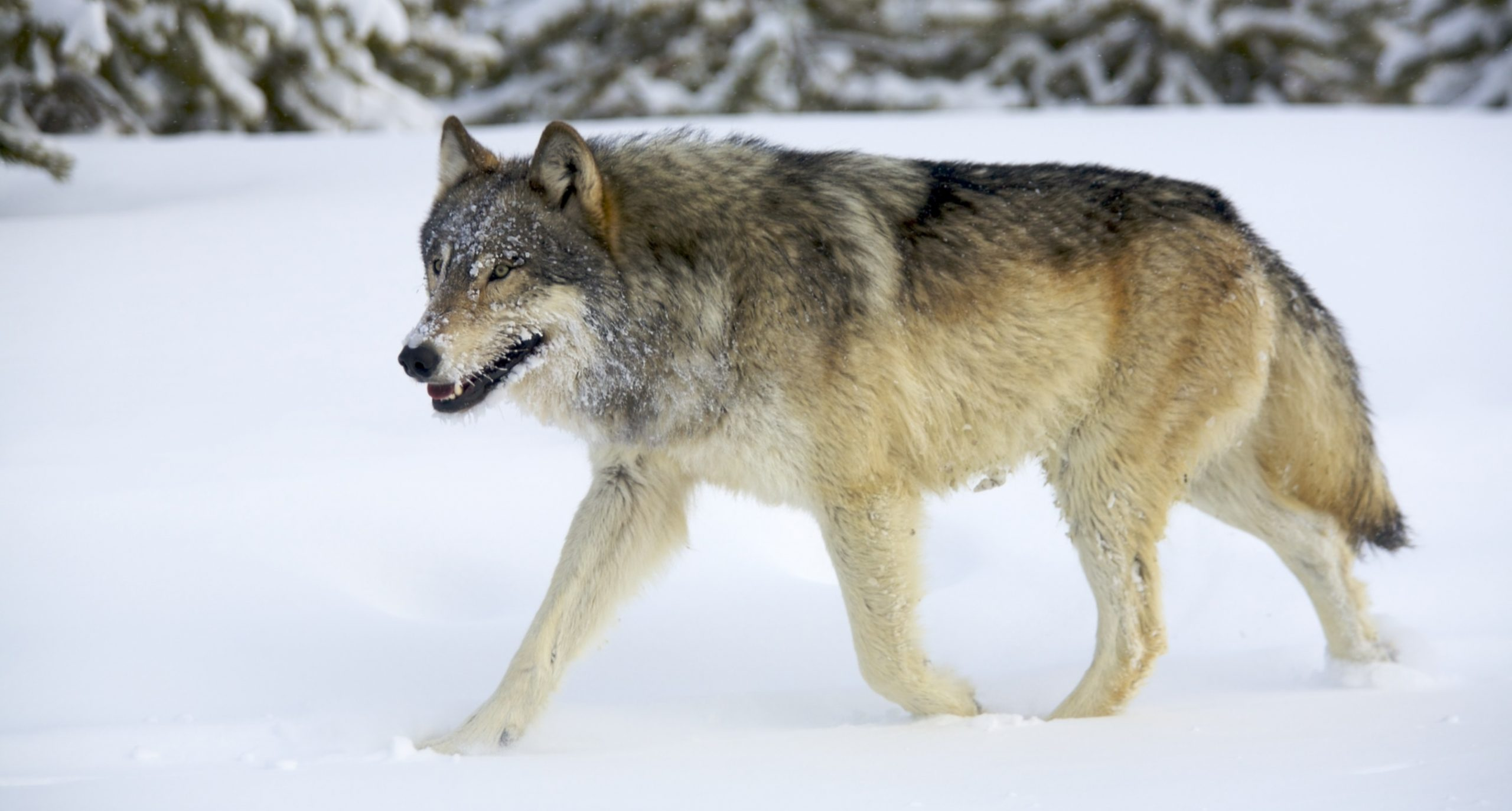
The Wolf has a muscular body with thick fur, powerful jaws with specialized teeth, and expressive ears that communicate mood.
It hunts in coordinated packs using strategic cooperation and can travel up to 100 miles in a day when hunting.
| Scientific Name | Canis lupus |
| Origin | Northern Hemisphere |
| Habitat | Forests, mountains, tundra, and grasslands across North America, Europe, and Asia |
| Fun Fact | Wolves’ howls can be heard up to 6 miles away and have unique vocal signatures that allow pack members to identify each other. |
4. White Tiger
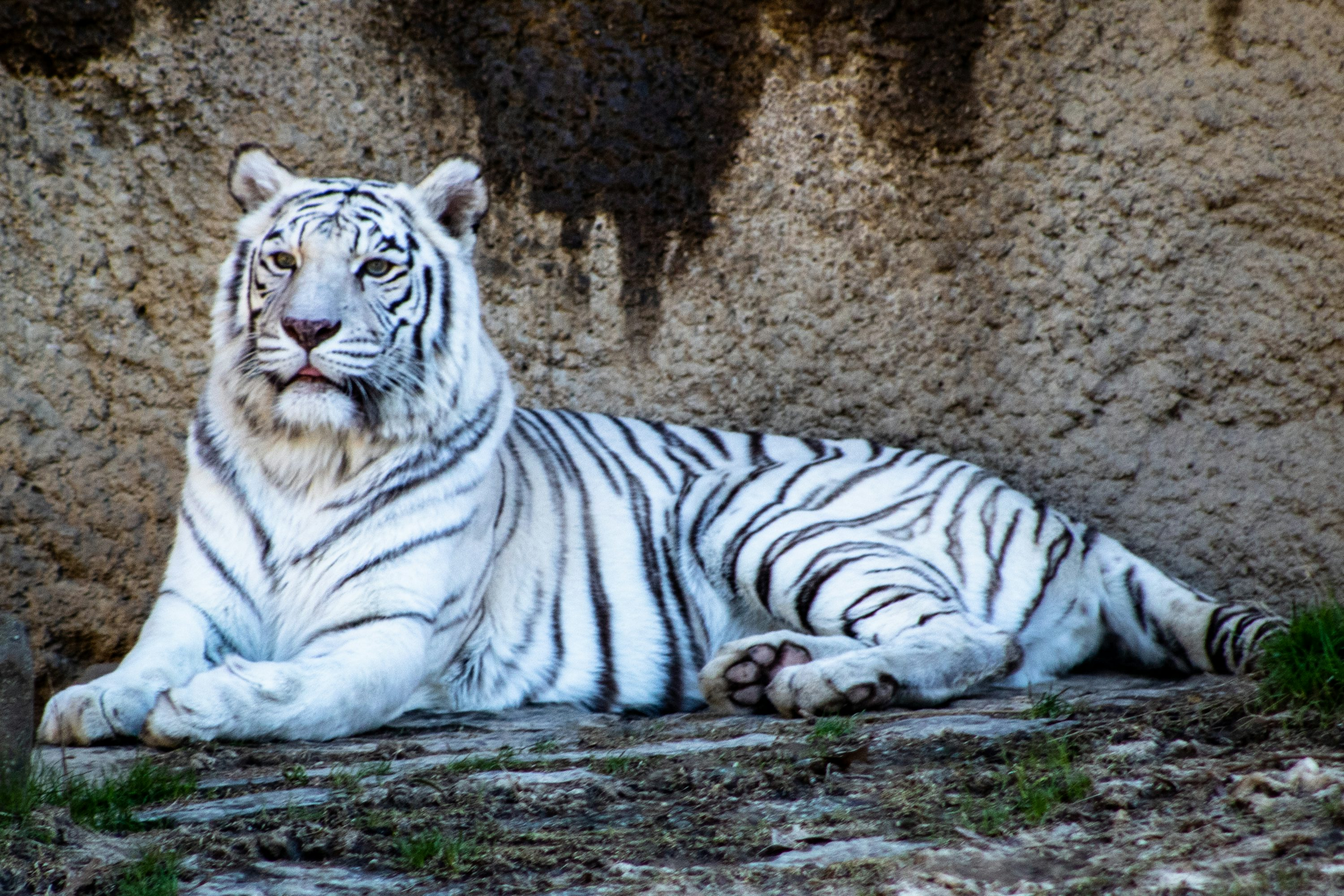
The White Tiger has striking white fur with black stripes, piercing blue eyes, and a muscular build identical to orange tigers.
It possesses the same strength, stealth, and hunting abilities as standard-colored tigers, with powerful limbs for taking down large prey.
| Scientific Name | Panthera tigris (Bengal tiger with recessive gene) |
| Origin | Indian subcontinent |
| Habitat | Various landscapes including tropical forests, mangrove swamps, and grasslands |
| Fun Fact | Their white coloration is not albinism but caused by a recessive gene that inhibits the production of orange pigment. |
5. Whale Shark
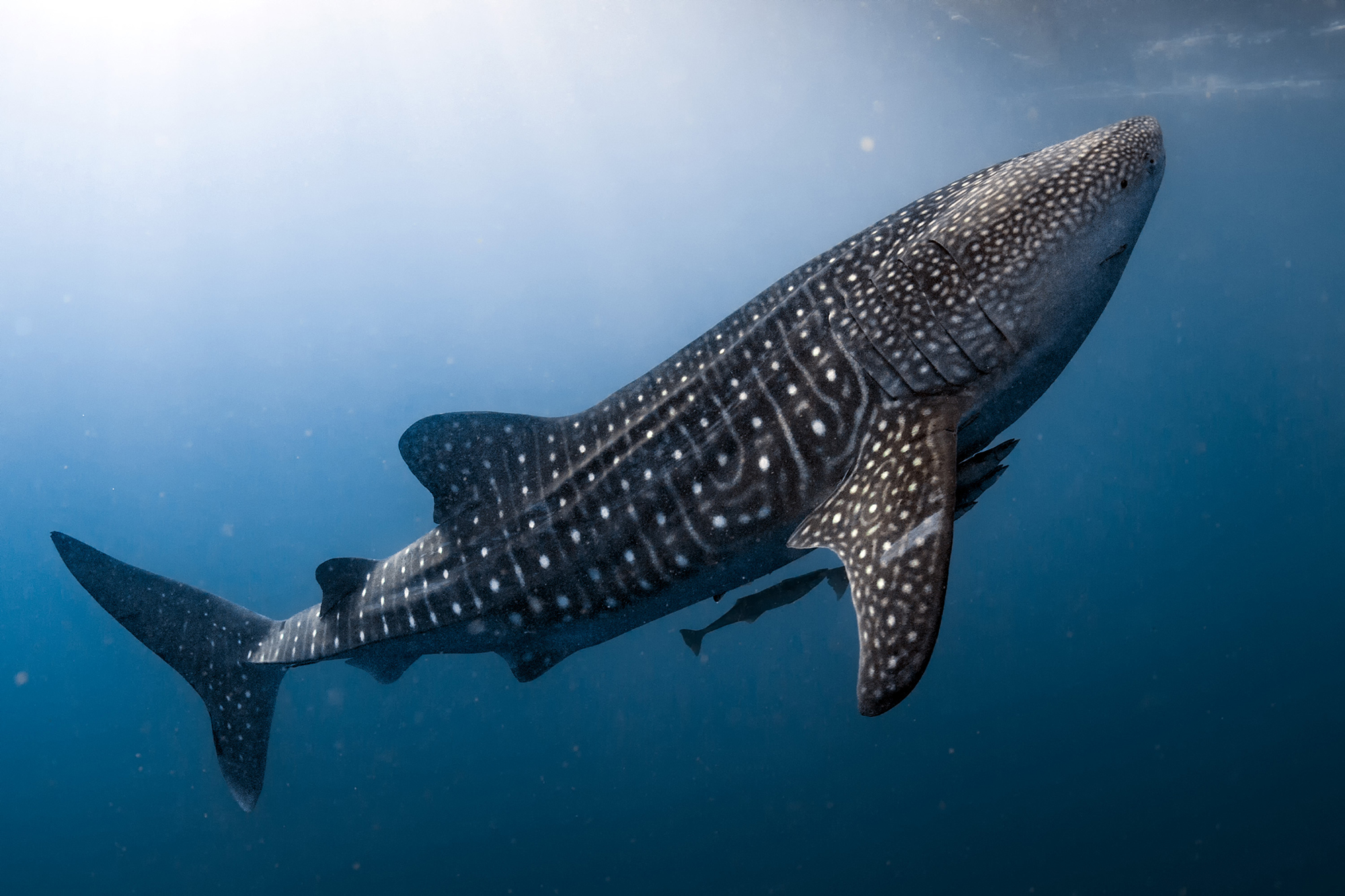
The Whale Shark has a massive flat-headed body with distinctive white spots on a blue-gray background, five large gill slits, and a mouth up to 5 feet wide.
It filters plankton through specialized pads, can vertically dive to nearly 6,000 feet, and is the largest fish in the world.
| Scientific Name | Rhincodon typus |
| Origin | Tropical oceans worldwide |
| Habitat | Warm, tropical and subtropical oceans around the world |
| Fun Fact | Despite their enormous size (up to 40 feet), they feed primarily on microscopic plankton and small fish. |
6. Warthog
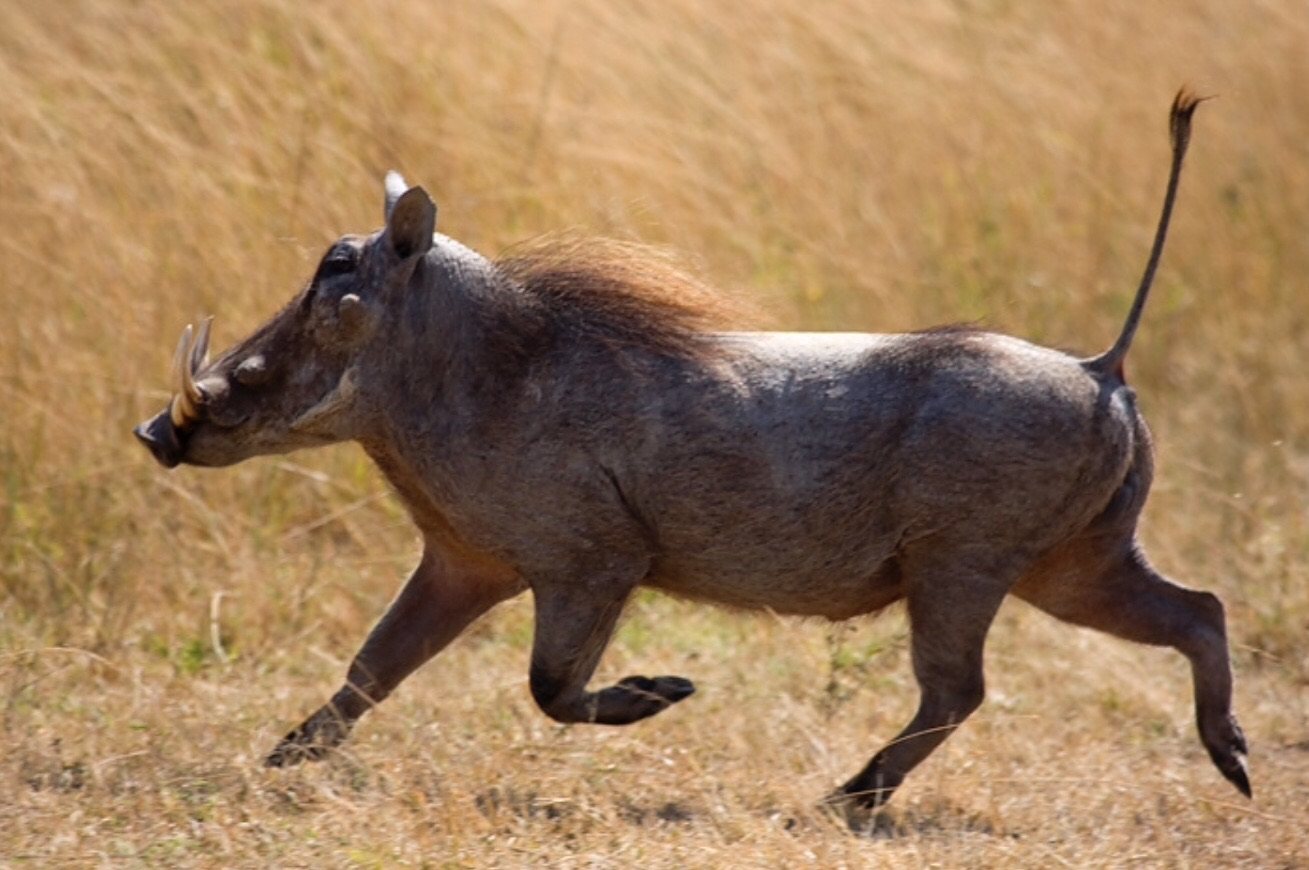
The Warthog has a dark gray body with sparse hair, distinctive facial warts, curved tusks, and a mane of long hair down its back.
It uses its tusks and strong neck for defense and digging, and can run up to 30 mph despite its ungainly appearance.
| Scientific Name | Phacochoerus africanus |
| Origin | Africa |
| Habitat | Savannas, grasslands, and woodlands across sub-Saharan Africa |
| Fun Fact | They enter their burrows backward, keeping their formidable tusks facing any potential threat at the entrance. |
7. Wolverine
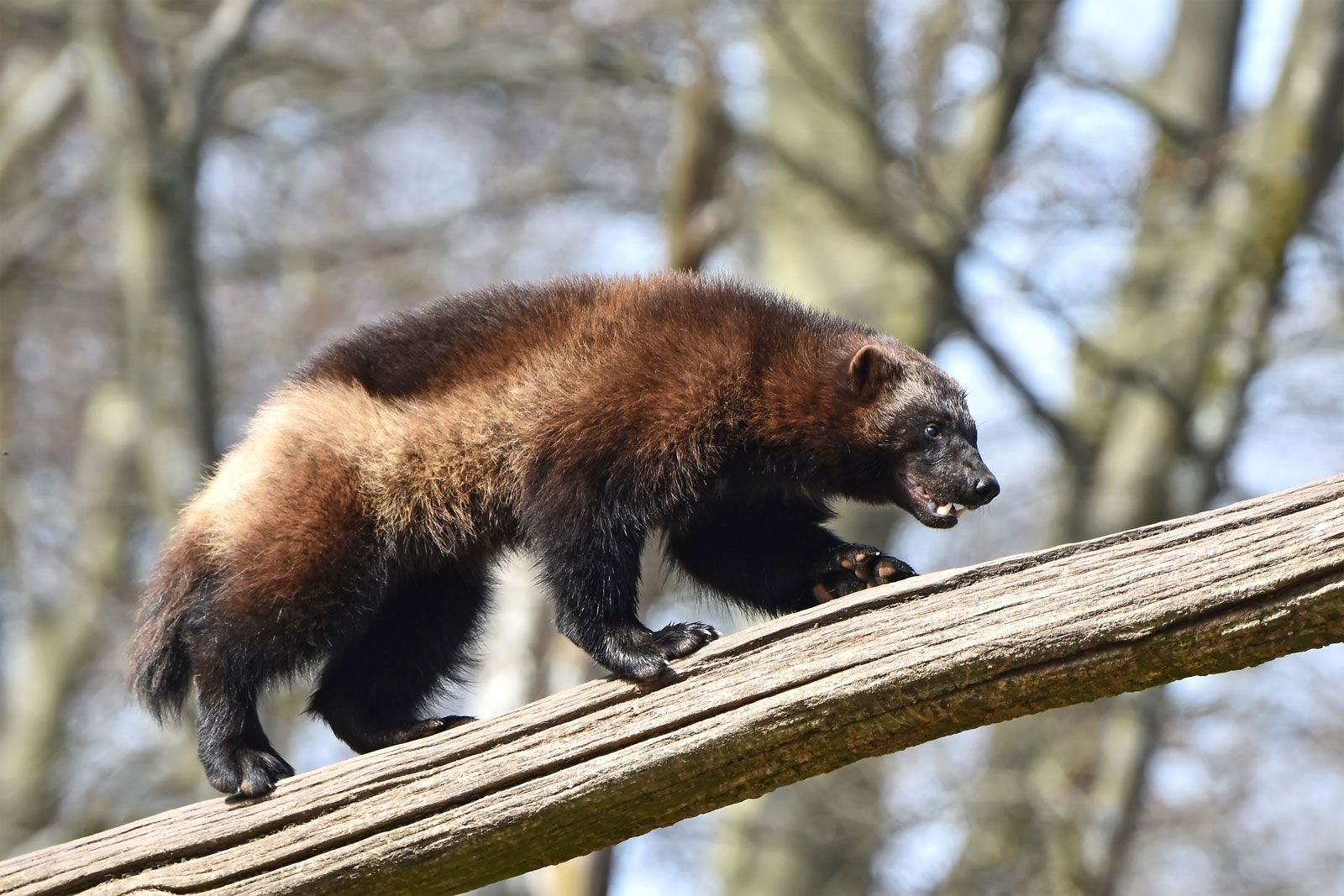
The Wolverine has a bearlike appearance with thick brown fur, distinctive yellowish bands along its sides, and disproportionately large paws.
It possesses incredible strength for its size, specialized teeth for crushing frozen meat and bone, and can travel up to 15 miles per day.
| Scientific Name | Gulo gulo |
| Origin | Northern Hemisphere |
| Habitat | Boreal forests and tundra across northern North America, Europe, and Asia |
| Fun Fact | Despite weighing only 30 pounds, they can drive bears away from kills and have been observed taking down prey ten times their size. |
8. Wildebeest
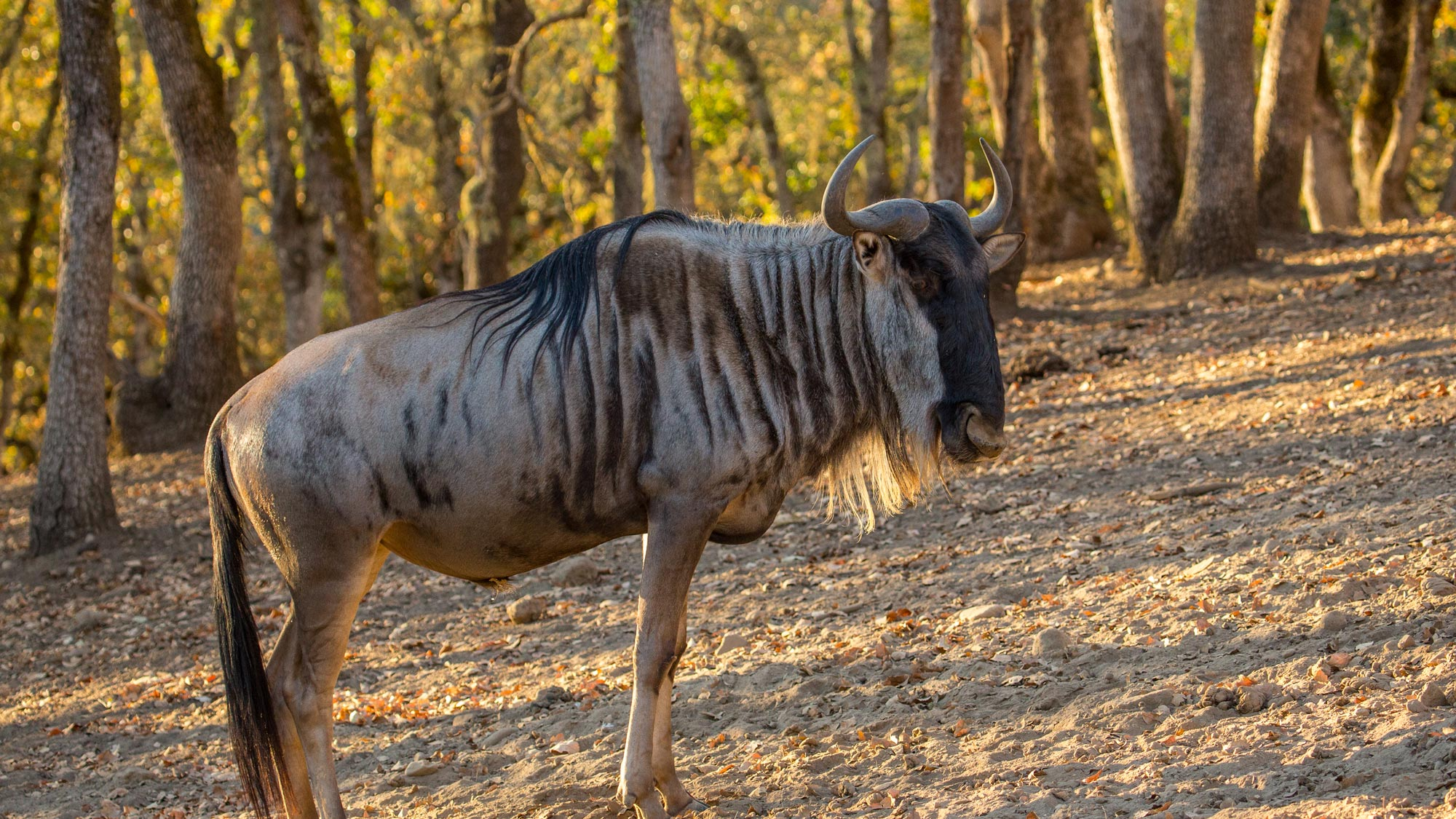
The Wildebeest has a bovine head, horse-like mane and tail, and curved horns present in both sexes.
It can run up to 50 mph, swim across rivers during migration, and newborns can stand and run within minutes of birth.
| Scientific Name | Connochaetes spp. |
| Origin | Africa |
| Habitat | Grasslands and open woodlands of eastern and southern Africa |
| Fun Fact | They perform one of the largest terrestrial migrations on Earth, with over 1.5 million animals traveling up to 1,000 miles annually. |
9. Wallaby
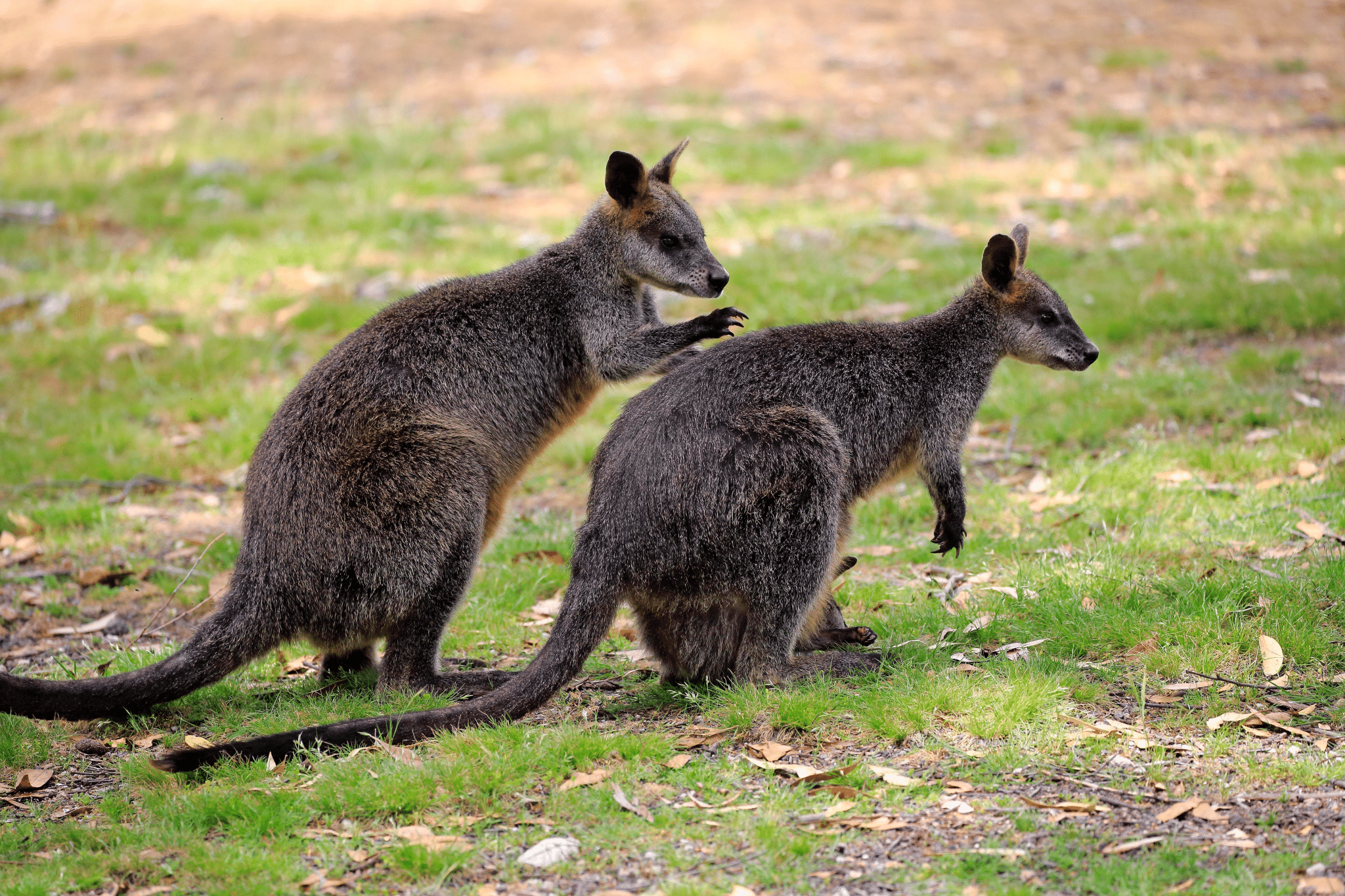
The Wallaby has a kangaroo-like appearance with a smaller build, powerful hind legs, long tail for balance, and a distinctive hopping gait.
It uses its specialized digestive system with multiple chambers to process tough vegetation and can go long periods without drinking water.
| Scientific Name | Macropus spp. (and related genera) |
| Origin | Australia and nearby islands |
| Habitat | Various environments from forests to rocky outcrops across Australia and New Guinea |
| Fun Fact | Female wallabies can pause the development of an embryo until their current joey leaves the pouch, allowing them to always have a backup pregnancy ready. |
10. White Rhinoceros
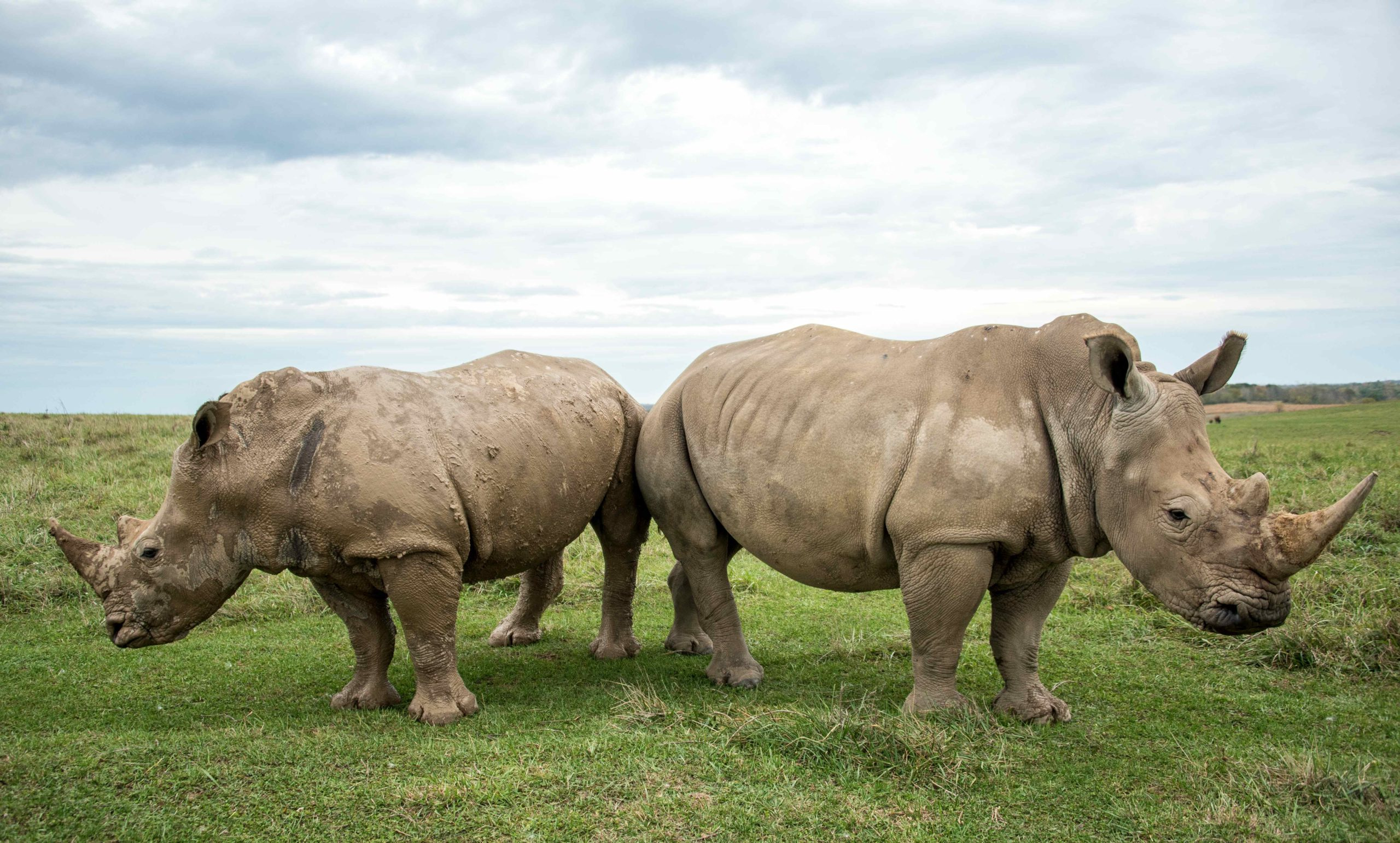
The White Rhinoceros has a massive gray body, two horns on its snout, wide square lips, and can weigh up to 7,700 pounds.
It uses its wide lips to efficiently graze grass and can run up to 30 mph despite its enormous size.
| Scientific Name | Ceratotherium simum |
| Origin | Africa |
| Habitat | Grasslands and savannas of southern and eastern Africa |
| Fun Fact: | The name “white” comes from a mistranslation of the Dutch word “wijd” (wide) referring to its mouth, not its color. |
11. Western Lowland Gorilla
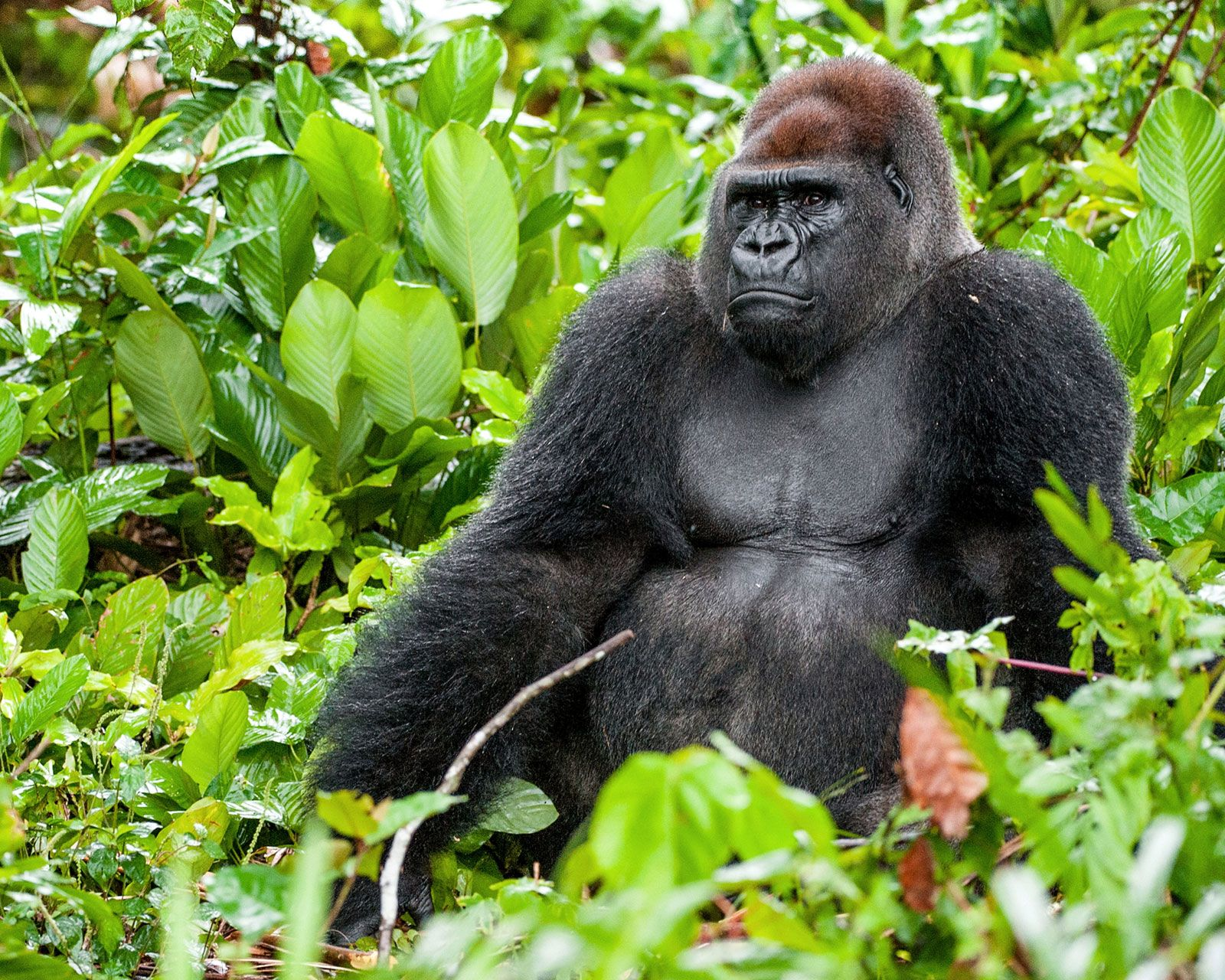
The Western Lowland Gorilla has a muscular body with black fur, a pronounced sagittal crest on adult males, and expressive brown eyes.
It possesses remarkable intelligence, complex social structures, and incredible strength estimated at 4-10 times that of humans.
| Scientific Name | Gorilla gorilla gorilla |
| Origin | Africa |
| Habitat | Dense forests and lowland swamps in central Africa |
| Fun Fact | They’re highly intelligent and can learn sign language, with some captive gorillas mastering over 1,000 signs. |
12. Welsh Corgi

The Welsh Corgi has a long body with short legs, alert pointed ears, and a fox-like facial appearance with expressive eyes.
It was bred for herding with a low profile that avoided cattle kicks and possesses remarkable intelligence and agility despite its short stature.
| Scientific Name | Canis lupus familiaris |
| Origin | Wales |
| Habitat | Domesticated; originally bred for herding cattle and sheep |
| Fun Fact | According to Welsh legend, corgis were ridden by fairies, and the markings on their backs are said to be “fairy saddles.” |
13. Whippet
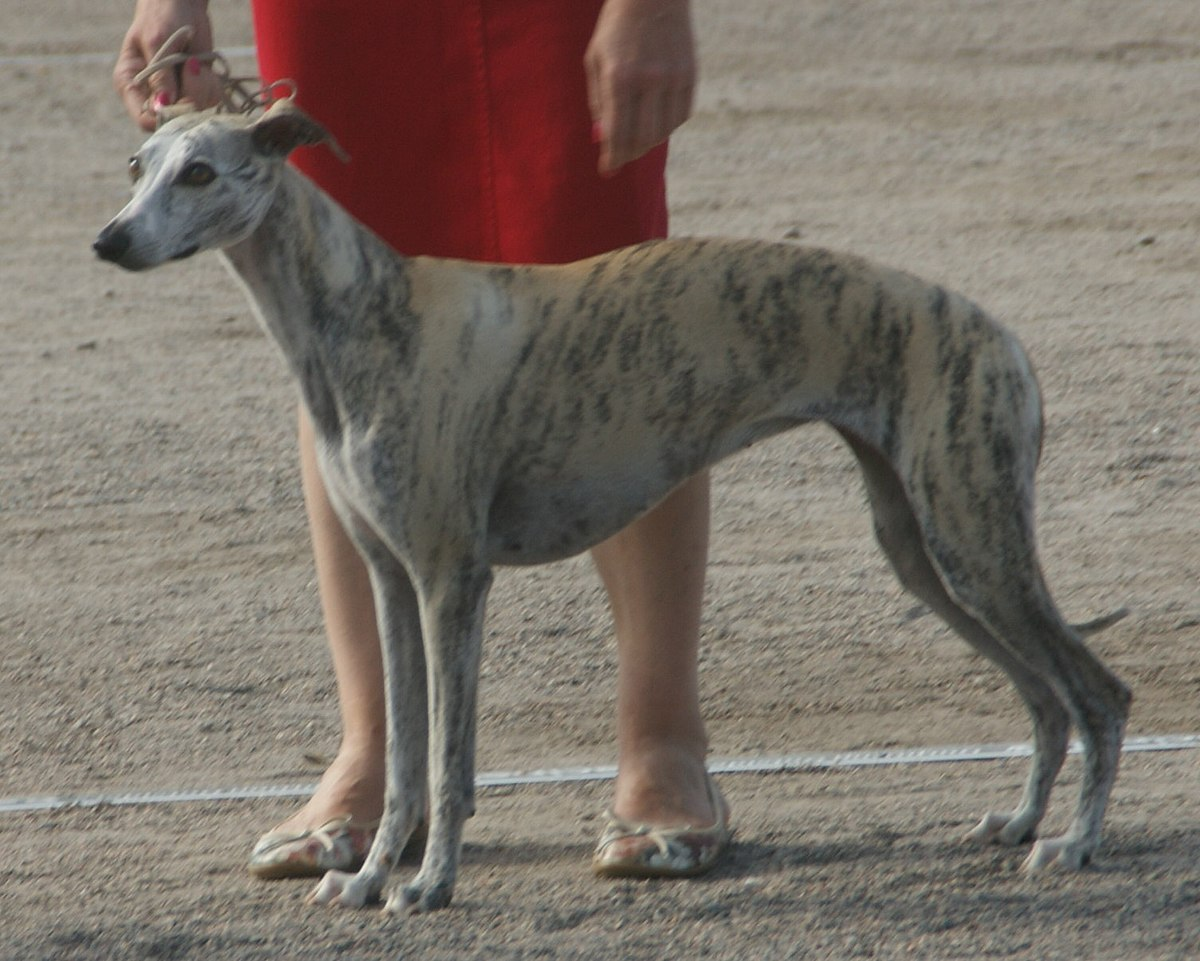
The Whippet has a slender, aerodynamic build with a narrow head, deep chest, and distinctive arched back when standing.
It can accelerate to 35 mph in just a few strides, making it the fastest dog for its size, and has keen eyesight for spotting moving objects.
| Scientific Name | Canis lupus familiaris |
| Origin | England |
| Habitat | Domesticated; originally bred for rabbit hunting and racing |
| Fun Fact | They’re sometimes called “the poor man’s racehorse” as they were bred for working-class racing after greyhound racing became restricted to the wealthy. |
14. Water Buffalo
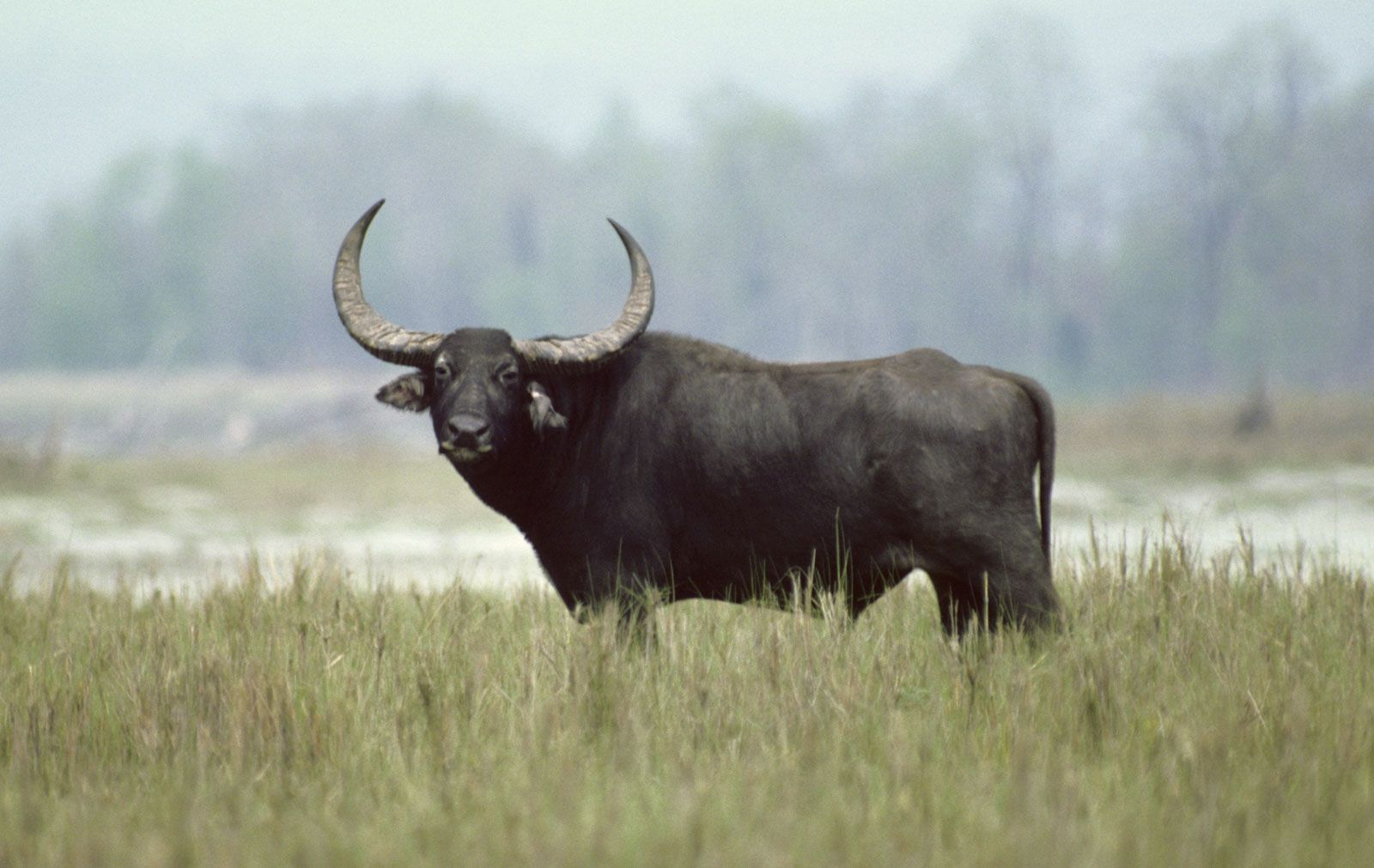
The Water Buffalo has a massive body with large curved horns, sparse coarse hair, and specialized splayed hooves for navigating muddy terrain.
It can pull heavy loads through deep mud, swim well, and has specialized digestive systems for processing low-quality vegetation.
| Scientific Name | Bubalus bubalis |
| Origin | Asia |
| Habitat | Wetlands, rivers, and swamps across Asia; domesticated worldwide |
| Fun Fact | Their milk contains higher calcium and protein but less cholesterol than cow’s milk, making it prized for specialty cheeses. |
15. Wild Boar
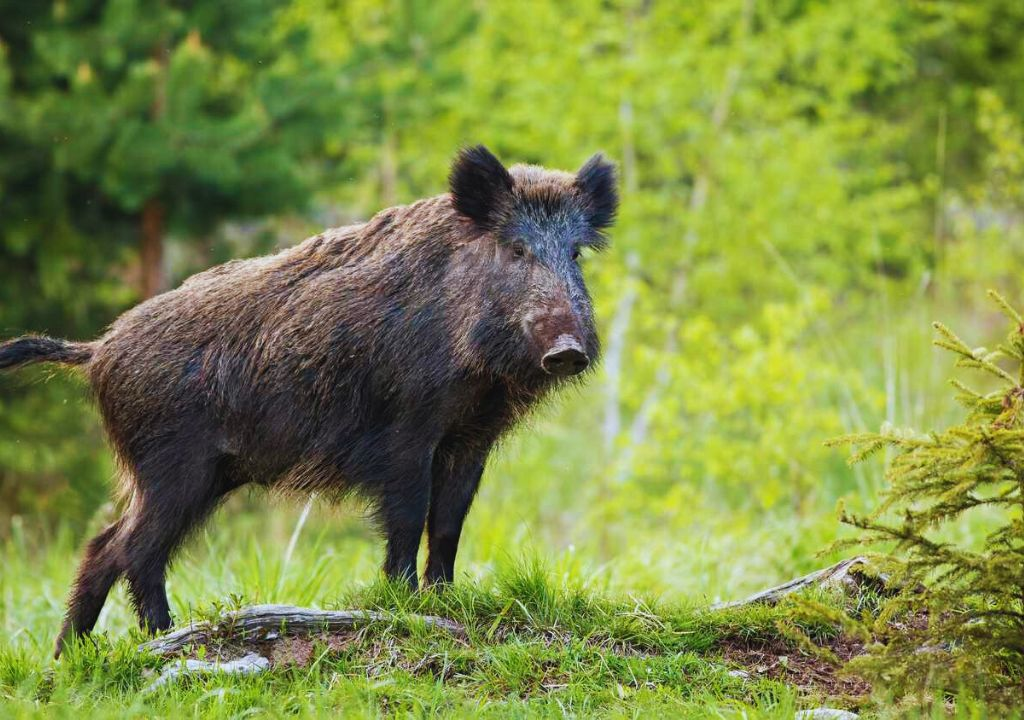
The Wild Boar has a stout body with coarse hair, prominent tusks, and a distinctive ridge of hair along its back.
It possesses remarkable intelligence, an exceptional sense of smell for locating food underground, and can run up to 30 mph.
| Scientific Name | Sus scrofa |
| Origin | Eurasia and North Africa |
| Habitat | Forests, woodlands, grasslands, and agricultural areas across Europe, Asia, and introduced elsewhere |
| Fun Fact | They’re among the most adaptable mammals, having successfully colonized every continent except Antarctica, often after human introduction. |
16. Woolly Mammoth
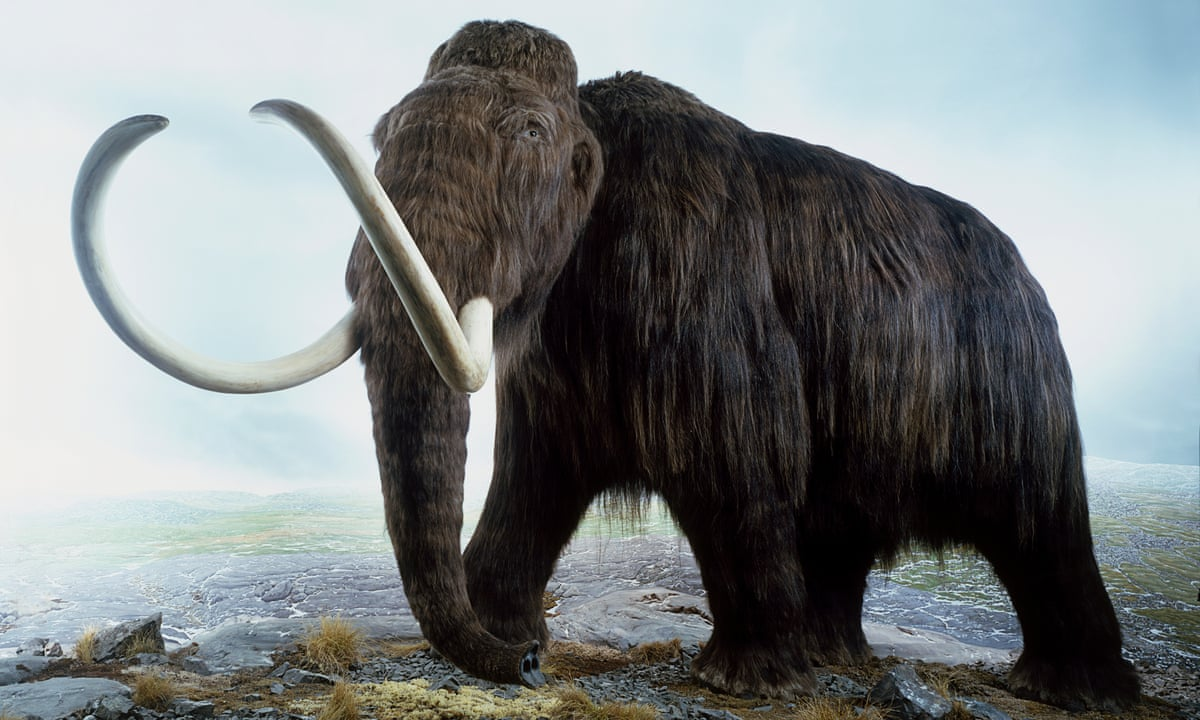
The Woolly Mammoth had a massive body covered in thick, shaggy fur, distinctive curved tusks up to 15 feet long, and a high-domed head.
It used its tusks for digging through snow, fighting, and displaying dominance, with specialized adaptations for extreme cold.
| Scientific Name | Mammuthus primigenius |
| Origin | Northern Eurasia and North America |
| Habitat | Steppe-tundra environments during the Pleistocene Ice Age |
| Fun Fact | The preservation of some specimens in permafrost has been so complete that scientists have recovered intact blood cells and viable DNA. |
17. Woodpecker
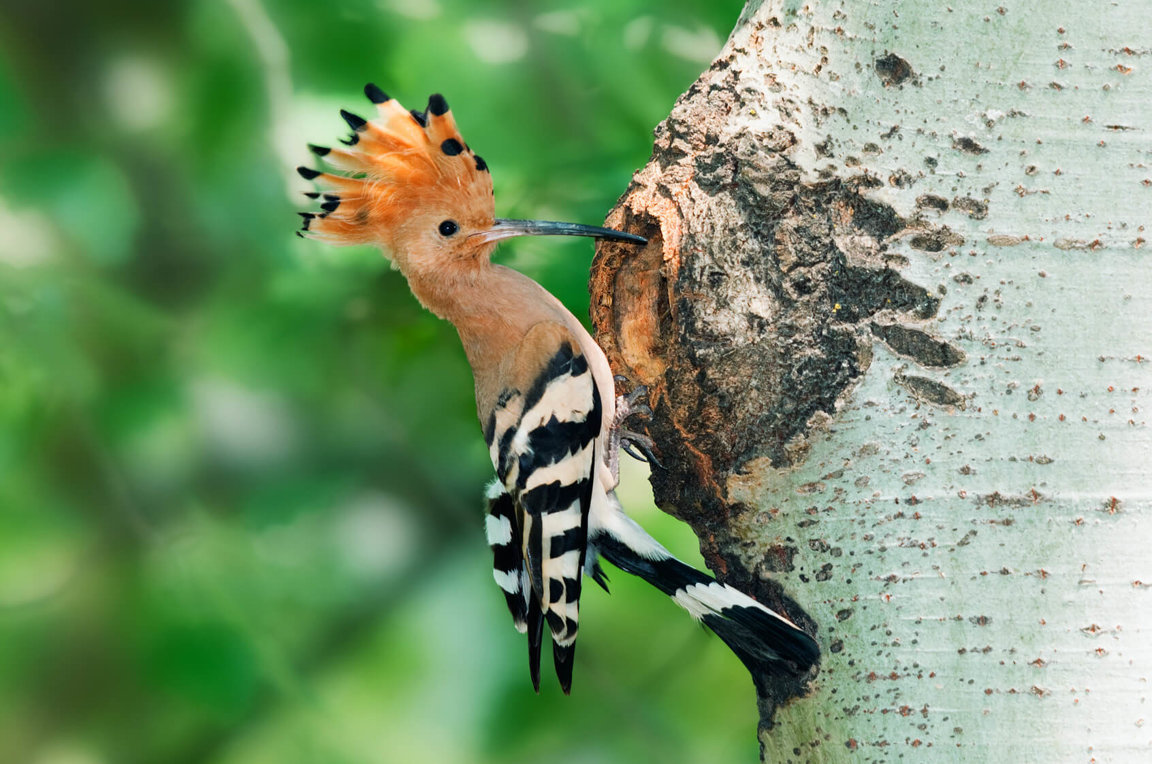
The Woodpecker has a chisel-like bill, stiff tail feathers used as a prop when climbing, and a remarkable tongue that can extend far beyond its bill.
It possesses specialized shock-absorbing skull structures to prevent brain damage from repetitive hammering and zygodactyl feet (two toes forward, two backward) for clinging to vertical surfaces.
| Scientific Name | Various (family Picidae) |
| Origin | Worldwide except Australia and polar regions |
| Habitat | Forests, woodlands, and even desert areas with trees or cacti |
| Fun Fact | They have specialized barbed tongues that can extend to nearly three times the length of their bill to extract insects from holes. |
18. Wombat
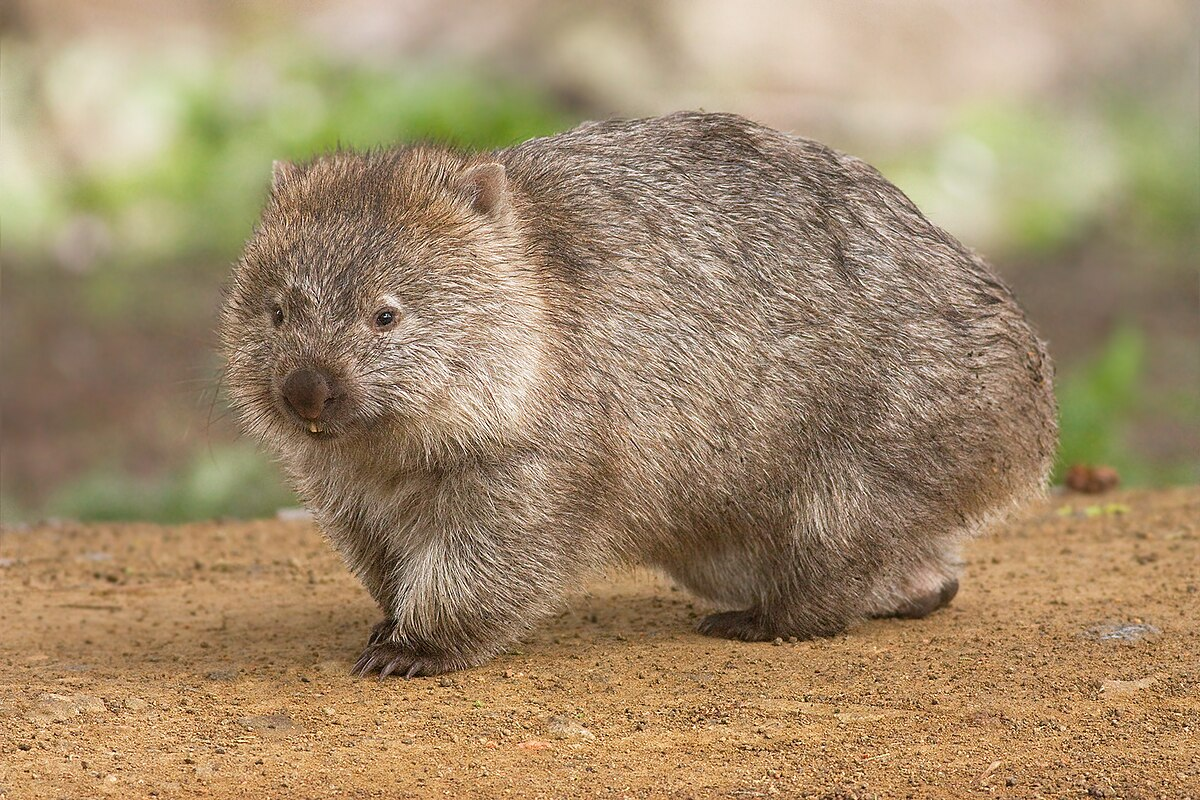
The Wombat has a robust, bear-like body with short, powerful limbs, a cube-shaped poop, and a backward-facing pouch.
It possesses extraordinary digging ability with claws and strong limbs to create extensive burrow systems and can run up to 25 mph in short bursts.
| Scientific Name | Vombatidae family |
| Origin | Australia |
| Habitat | Forests, mountains, and heathlands of southeastern Australia and Tasmania |
| Fun Fact | They produce cubic feces that won’t roll away, which they use as territorial markers on elevated surfaces. |
19. White-Tailed Deer
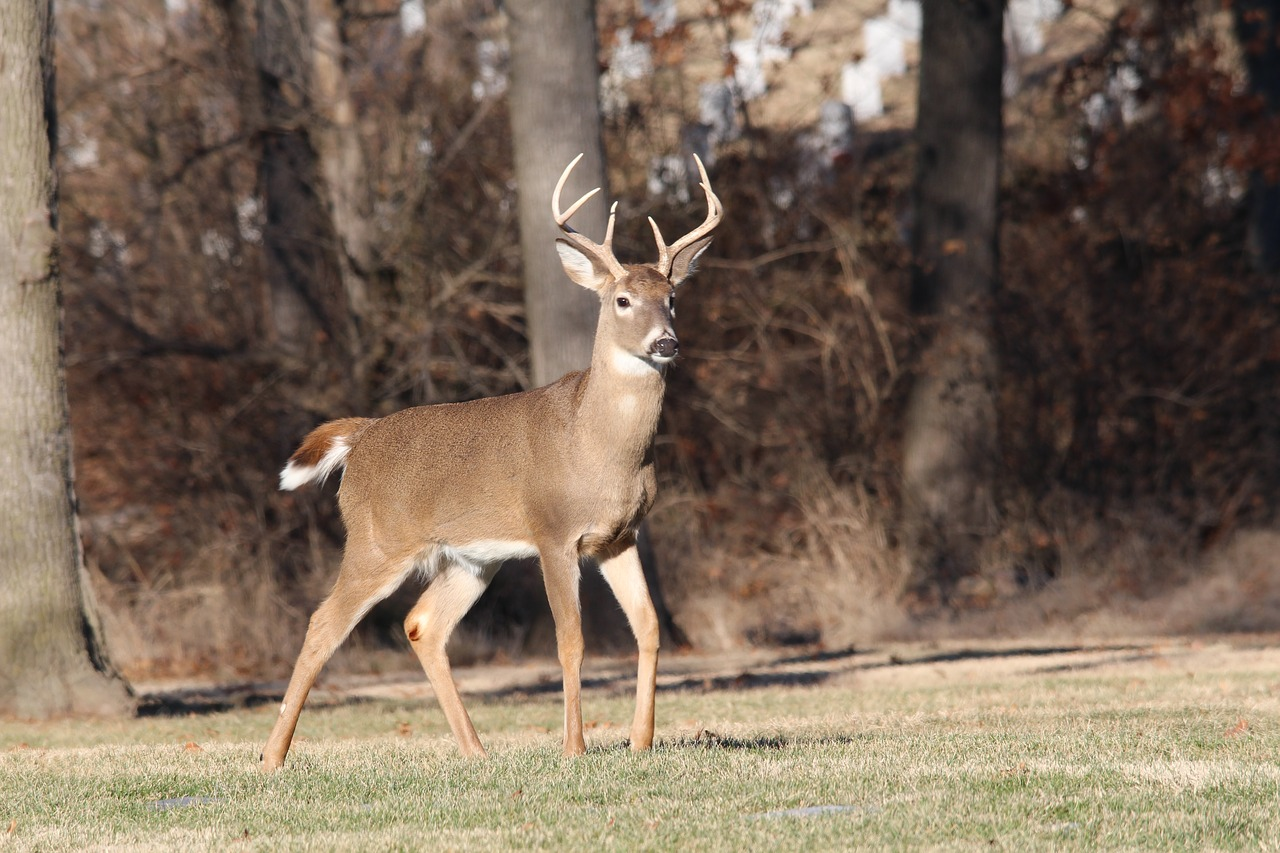
The White-Tailed Deer has reddish-brown summer coat changing to grayish-brown in winter, distinctive white underside to its tail, and males grow antlers annually.
It can run up to 30 mph, jump nearly 10 feet high, and has specialized digestive systems allowing it to eat a wide variety of plant foods.
| Scientific Name | Odocoileus virginianus |
| Origin | Americas |
| Habitat | Forests, farmlands, brushy areas, and suburbs across the Americas |
| Fun Fact | They have a four-chambered stomach that allows them to eat quickly and digest later, minimizing vulnerable feeding time. |
20. White German Shepherd
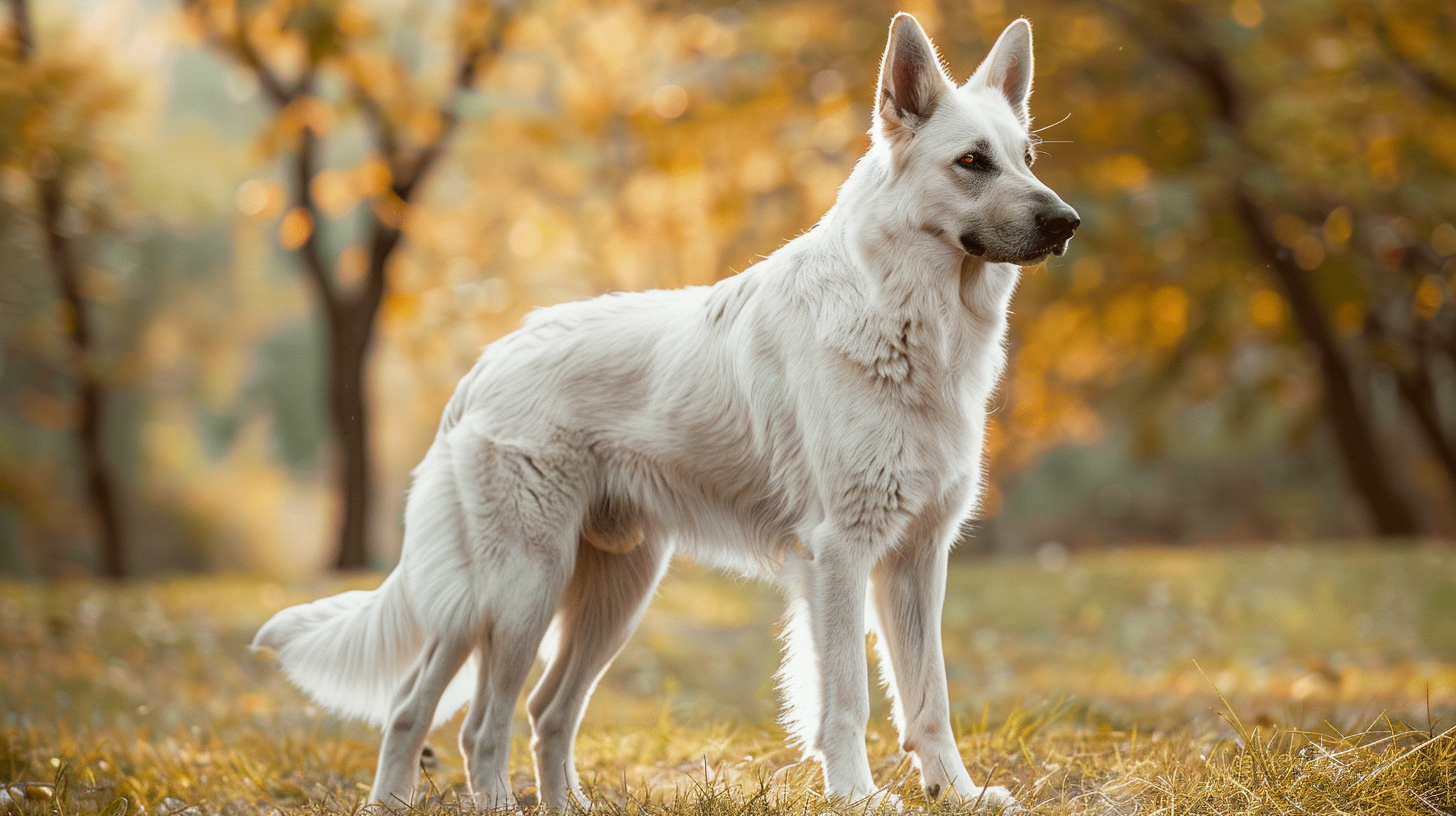
The White German Shepherd has a pure white double coat, erect pointed ears, and a strong, muscular build identical to standard-colored German Shepherds.
It possesses the same intelligence, trainability, and working abilities as standard German Shepherds, with keen senses and athletic endurance.
| Scientific Name | Canis lupus familiaris |
| Origin | Germany |
| Habitat | Domesticated; originally bred as herding and working dogs |
| Fun Fact | White was originally a common color in early German Shepherds but was later excluded from the standard breed in Germany, leading enthusiasts to maintain separate breeding lines. |
21. White-Tailed Jackrabbit
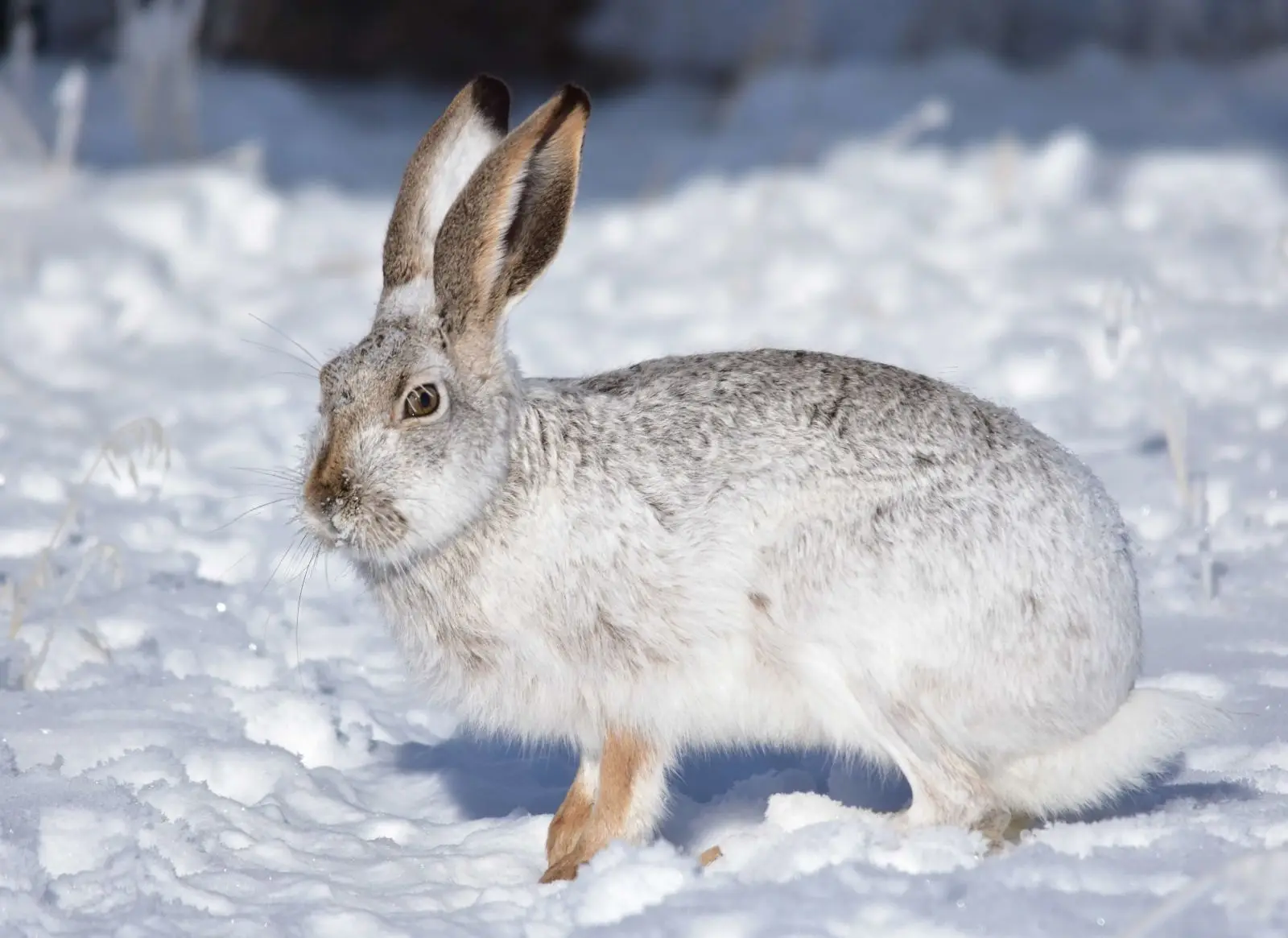
The White-Tailed Jackrabbit has a brownish-gray coat that turns white in northern populations during winter, exceptionally long ears, and powerful hind legs.
It can reach speeds of 40 mph with 10-foot leaps and changes direction mid-jump to evade predators.
| Scientific Name | Lepus townsendii |
| Origin | North America |
| Habitat | Prairies, agricultural fields, and open areas in western and central North America |
| Fun Fact | Their massive ears serve as cooling systems in hot environments, with a network of blood vessels that release heat. |
22. Wildcat
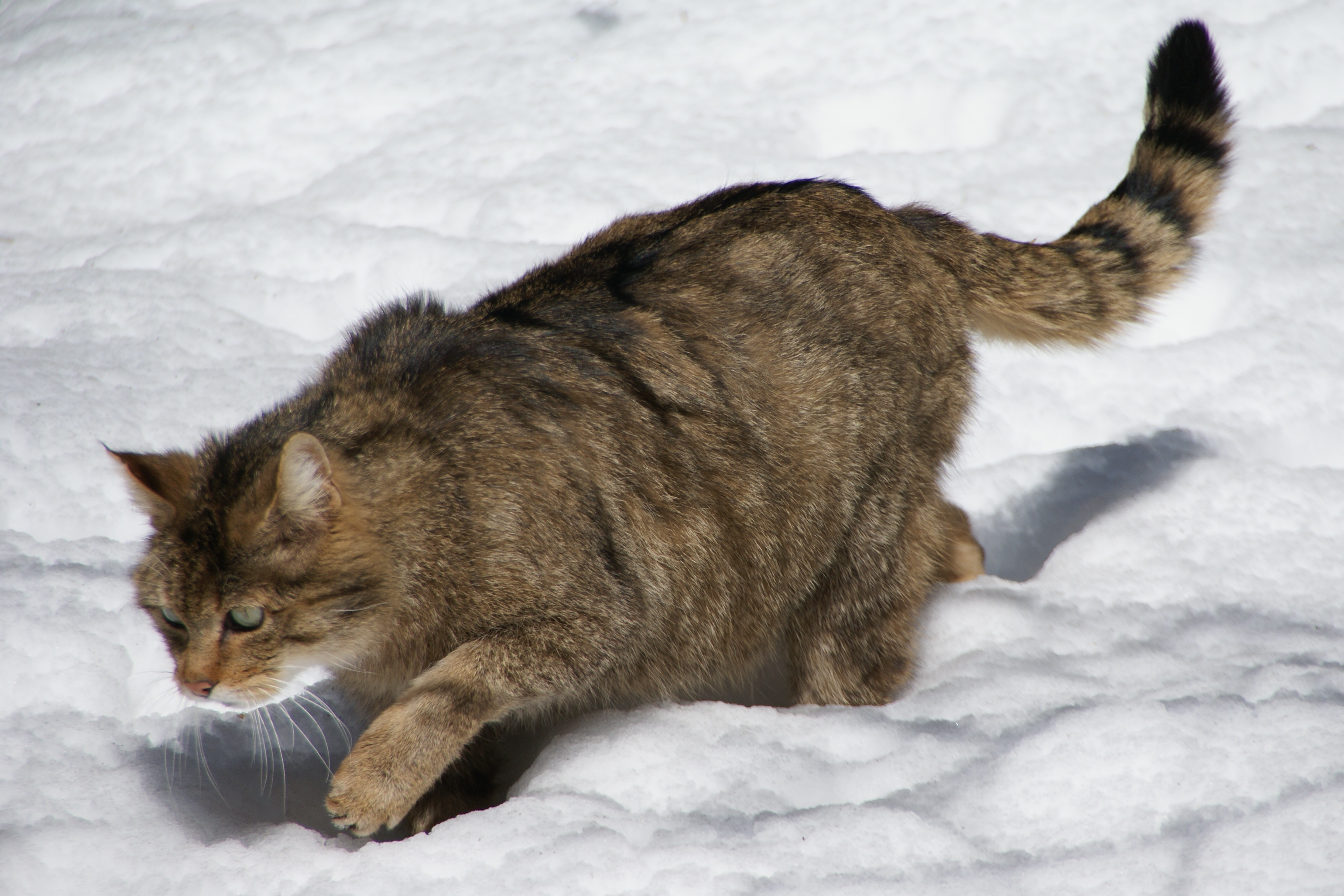
The Wildcat resembles a muscular domestic tabby cat with distinctive striped pattern, a bushy ringed tail, and generally larger size.
It possesses excellent night vision, silent stalking abilities, and powerful hearing that can detect the high-frequency sounds of rodents.
| Scientific Name | Felis silvestris |
|---|---|
| Origin | Europe, Africa, and Asia |
| Habitat | Forests, mountains, and scrublands across Europe, Africa, and parts of Asia |
| Fun Fact | They’re the direct ancestors of domestic cats but are becoming genetically threatened by widespread hybridization with their domesticated relatives. |
23. Whooping Crane
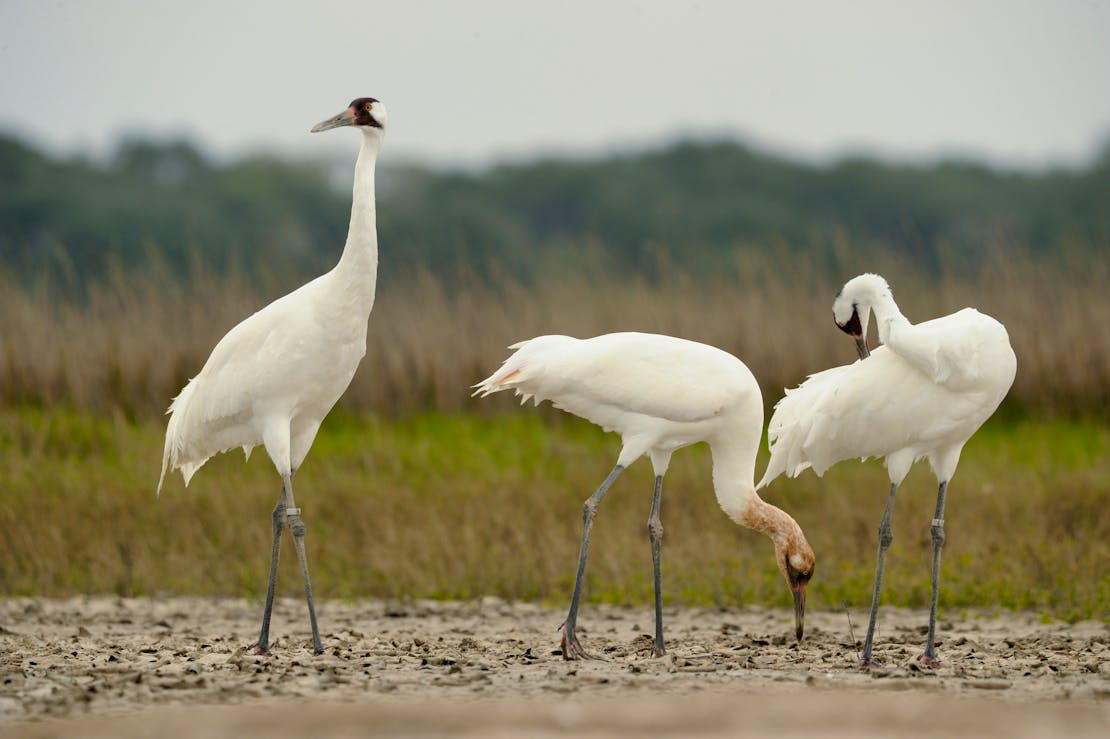
The Whooping Crane has pure white plumage, black wingtips visible in flight, a red crown, and stands nearly 5 feet tall.
It performs elaborate courtship dances with leaps and wing flapping, migrates extremely long distances, and can live up to 30 years.
| Scientific Name | Grus americana |
|---|---|
| Origin | North America |
| Habitat | Marshes, wetlands, and prairies in North America |
| Fun Fact | They were reduced to just 15 birds in 1941 but have been brought back from the brink of extinction through intensive conservation efforts. |
24. White-Tailed Eagle
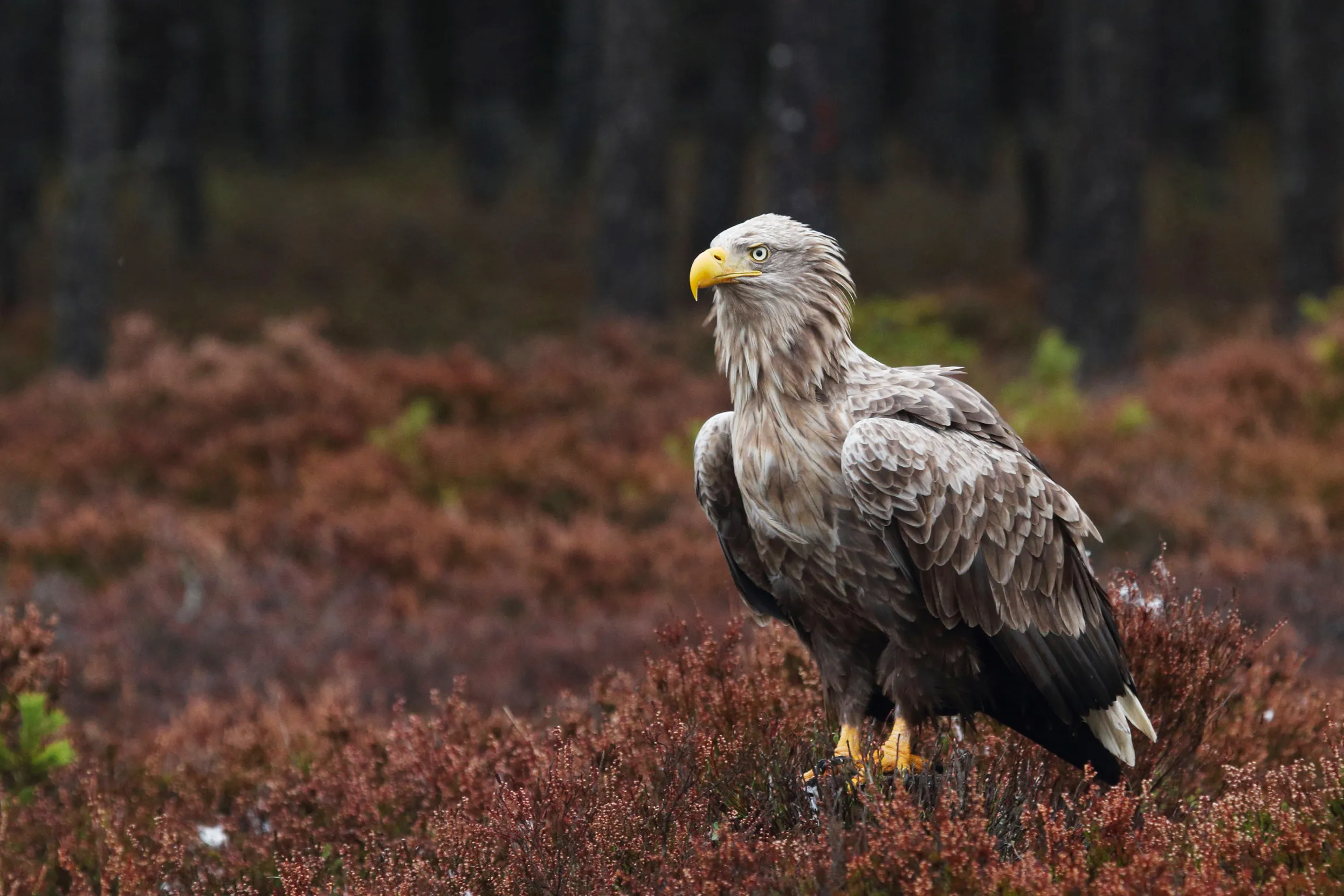
The White-Tailed Eagle has a massive wingspan up to 8 feet, distinctive white tail in adults, yellow bill, and pale head contrasting with dark brown body.
It possesses exceptional eyesight for spotting fish from great heights and powerful talons that can exert pressure of over 400 psi.
| Scientific Name | Haliaeetus albicilla |
|---|---|
| Origin | Europe, Asia, and parts of the Middle East |
| Habitat | Coastal areas, lakes, and rivers across northern Europe and Asia |
| Fun Fact | Their nests are among the largest of any bird, measuring up to 6 feet wide and weighing up to a ton after years of additions. |
25. Wolf Spider
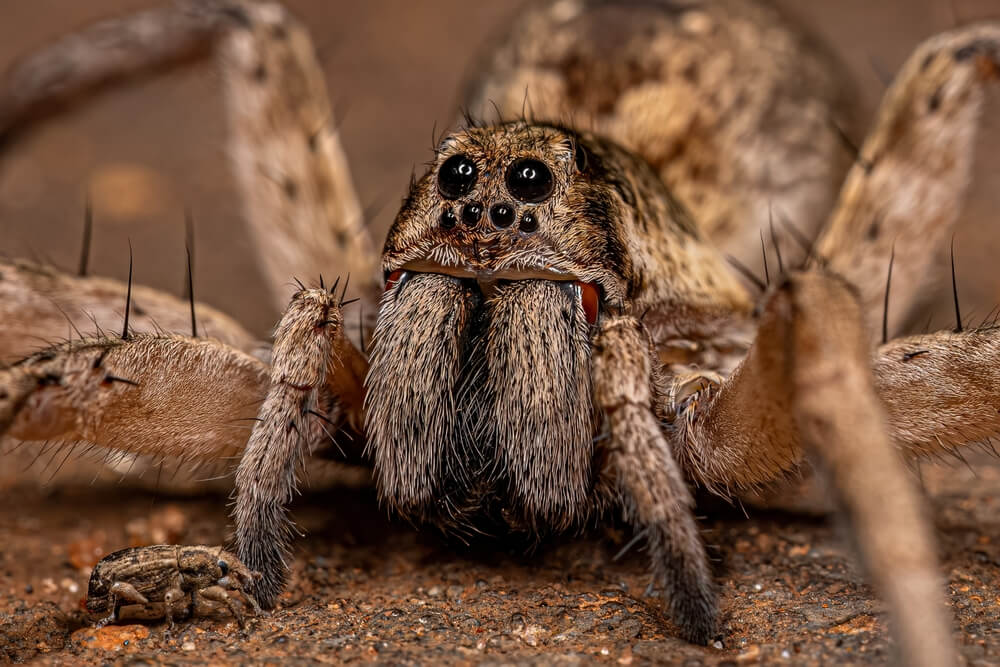
The Wolf Spider has a robust body with distinctive eye arrangement of eight eyes in three rows, mottled brown camouflage patterns, and no web-spinning behavior.
It hunts by active pursuit rather than web-trapping and has excellent vision with specialized reflective tissue in its eyes.
| Scientific Name | Lycosidae family |
|---|---|
| Origin | Worldwide |
| Habitat | Nearly all terrestrial habitats worldwide from deserts to rainforests |
| Fun Fact | Females carry their egg sacs attached to their spinnerets and later carry their spiderlings on their backs until independent. |
26. Western Diamondback Rattlesnake
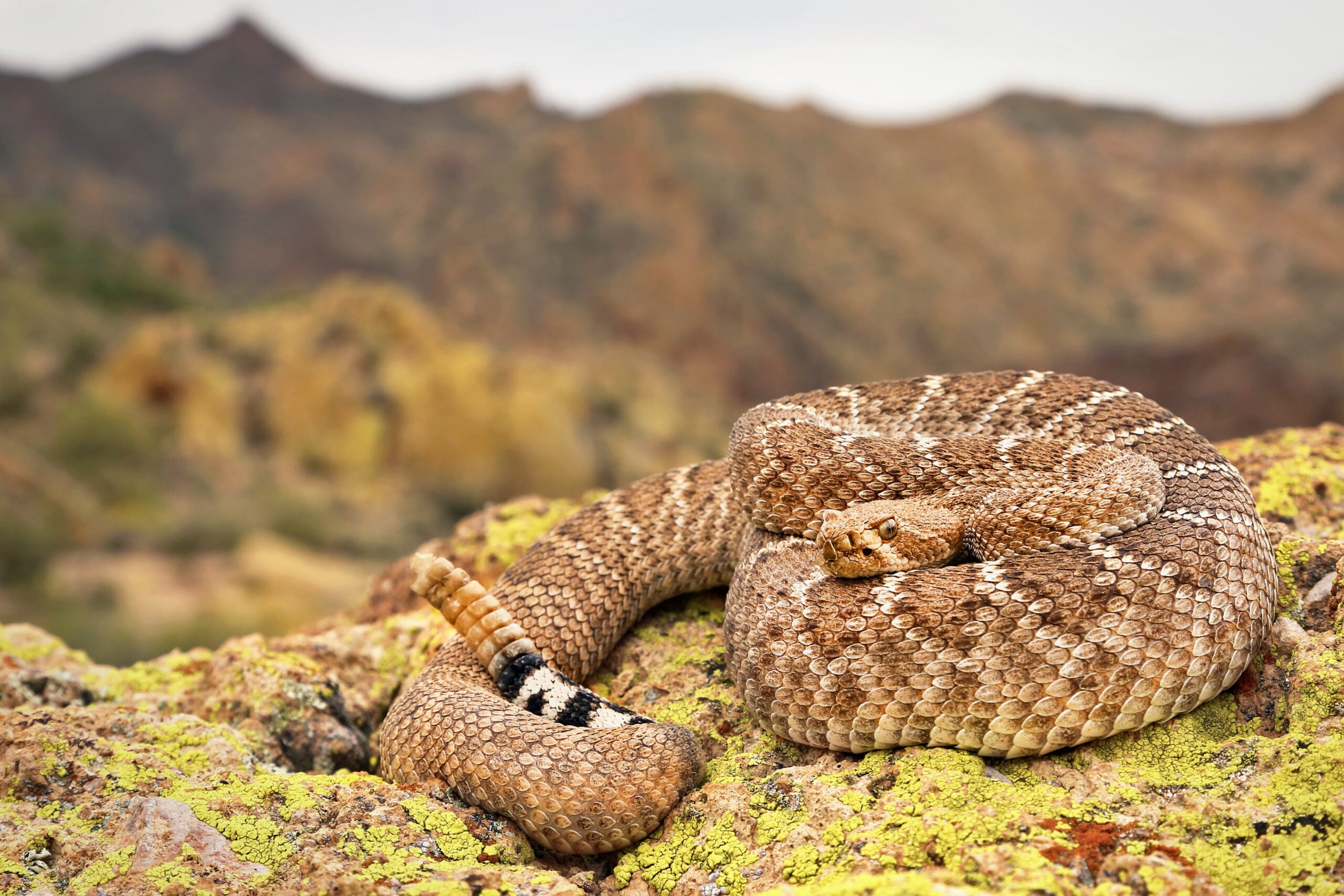
The Western Diamondback Rattlesnake has a heavy-bodied form with distinctive diamond pattern, triangular head, and segmented rattle on its tail.
It possesses heat-sensing pits for detecting warm-blooded prey, hollow retractable fangs for venom delivery, and a specialized muscle that vibrates its rattle in warning.
| Scientific Name | Crotalus atrox |
|---|---|
| Origin | North America |
| Habitat | Deserts, grasslands, and rocky hillsides in southwestern United States and Mexico |
| Fun Fact | Their iconic rattles add a new segment each time they shed their skin, though segments break off over time, making rattle count an unreliable age indicator. |
27. White-Faced Capuchin
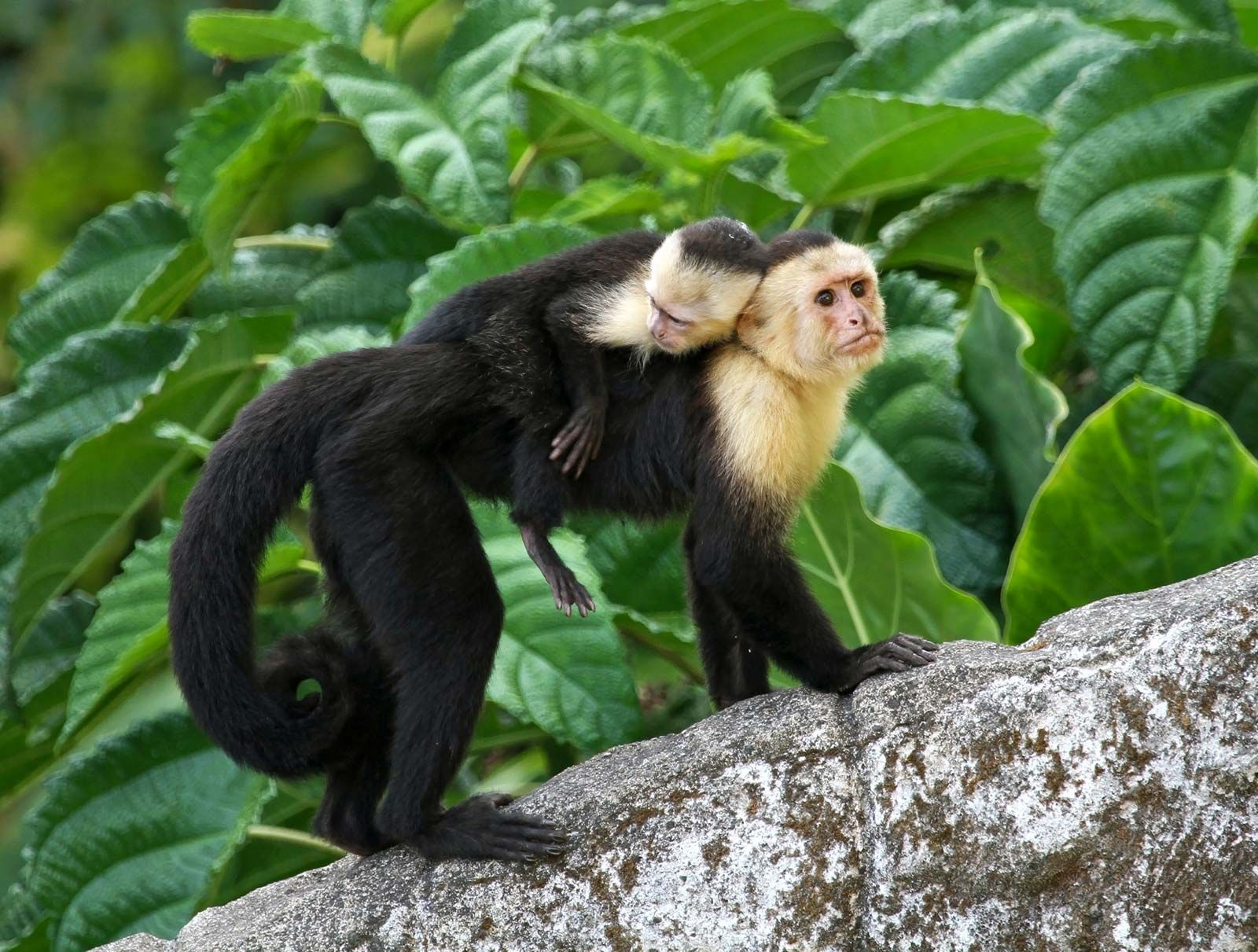
The White-Faced Capuchin has a distinctive black body with white face, throat, and shoulders, along with a prehensile tail used as a fifth limb.
It possesses remarkable intelligence, tool-using abilities, and complex social structures with hierarchies and learned behaviors.
| Scientific Name | Cebus capucinus |
|---|---|
| Origin | Central and South America |
| Habitat | Tropical forests from Honduras to Colombia |
| Fun Fact | They’re among the most intelligent primates, using tools like stones to crack nuts and sticks to extract food from difficult places. |
28. Woolly Monkey
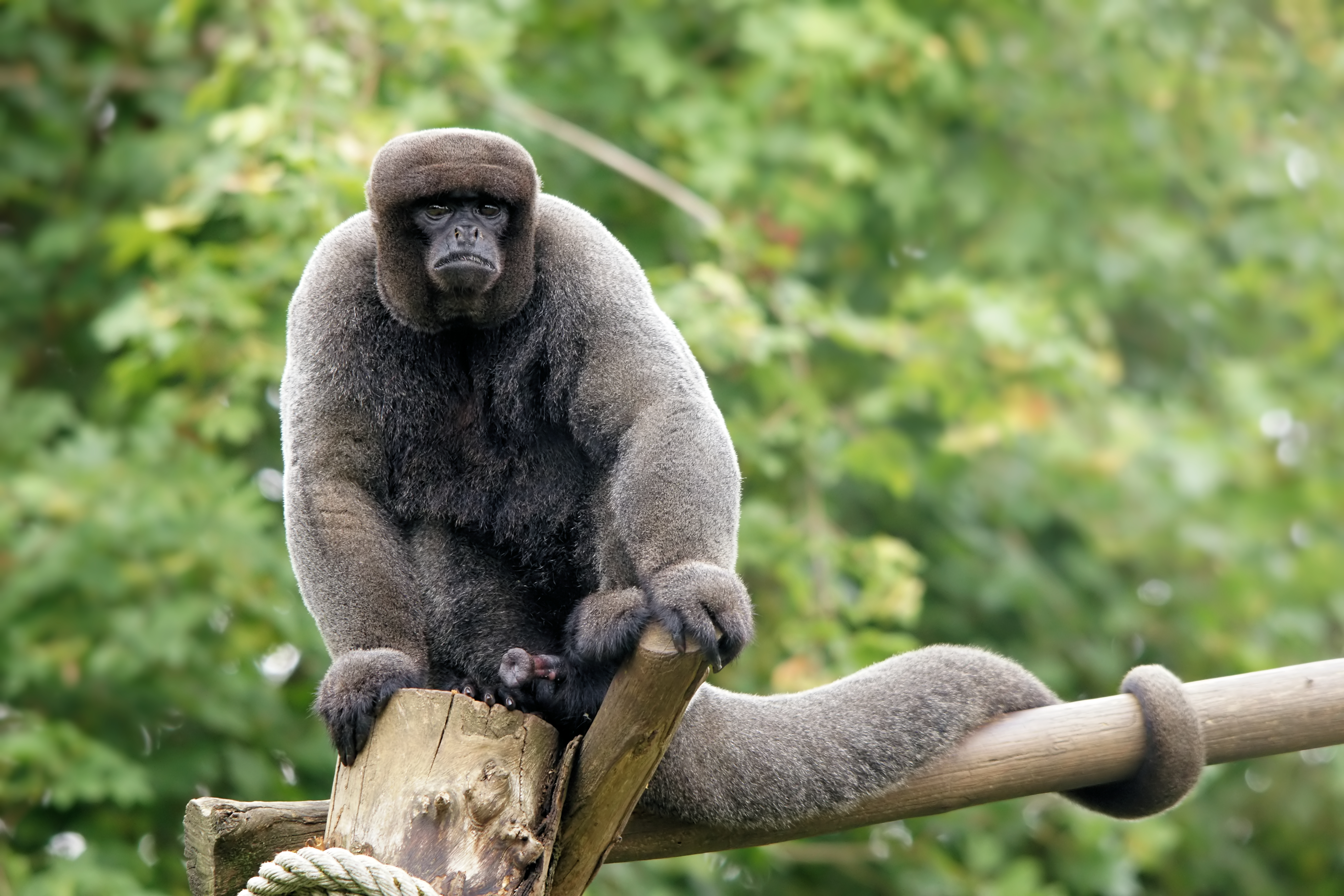
The Woolly Monkey has a thick, woolly fur coat, prehensile tail with a bare patch underneath for gripping, and well-developed thumbs.
It moves with agility through the forest canopy using its prehensile tail as a fifth limb and has complex vocalizations for communication.
| Scientific Name | Lagothrix spp. |
|---|---|
| Origin | South America |
| Habitat | Rainforests of the Amazon Basin in South America |
| Fun Fact | Their powerful prehensile tails can support their entire body weight and are sensitive enough to identify objects by touch alone. |
29. Weedy Sea Dragon
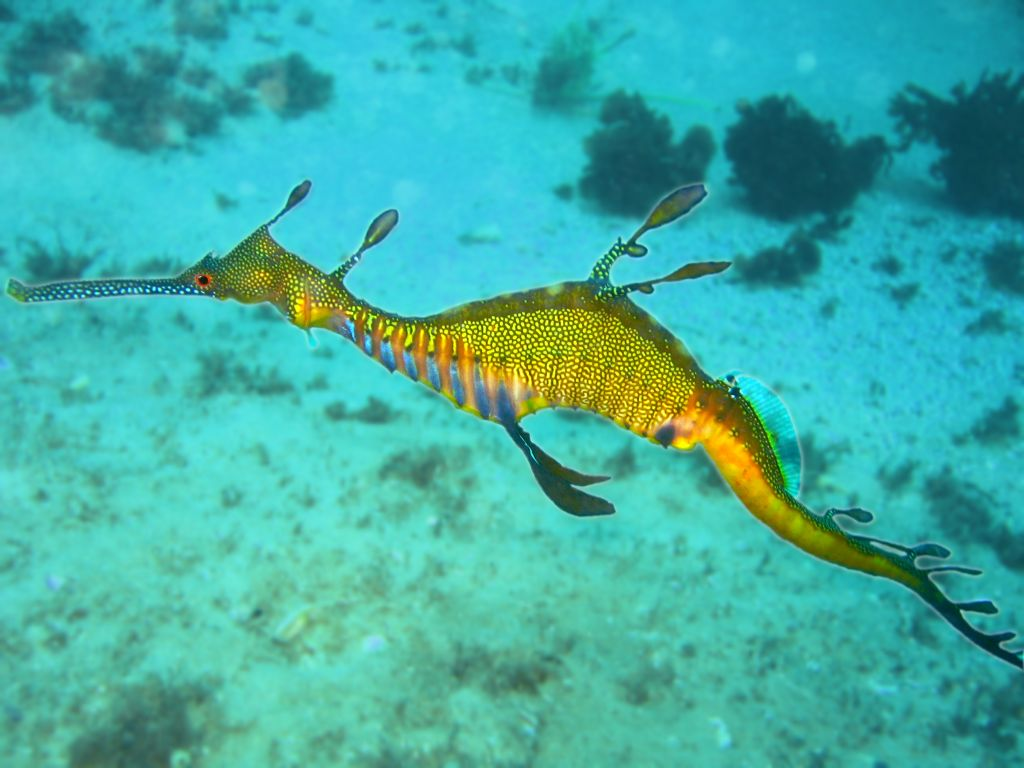
The Weedy Sea Dragon has a slender body covered with leaf-like appendages for camouflage, an elongated snout, and independent eye movement.
It propels itself with nearly invisible fin movements rather than its decorative appendages and uses its tube-like snout to suck up tiny crustaceans.
| Scientific Name | Phyllopteryx taeniolatus |
|---|---|
| Origin | Australia |
| Habitat | Seaweed beds and rocky reefs along Australia’s southern and eastern coasts |
| Fun Fact | Males, not females, carry and incubate the eggs, with embryos embedded in a specialized brood patch on their tail. |
30. Wahoo
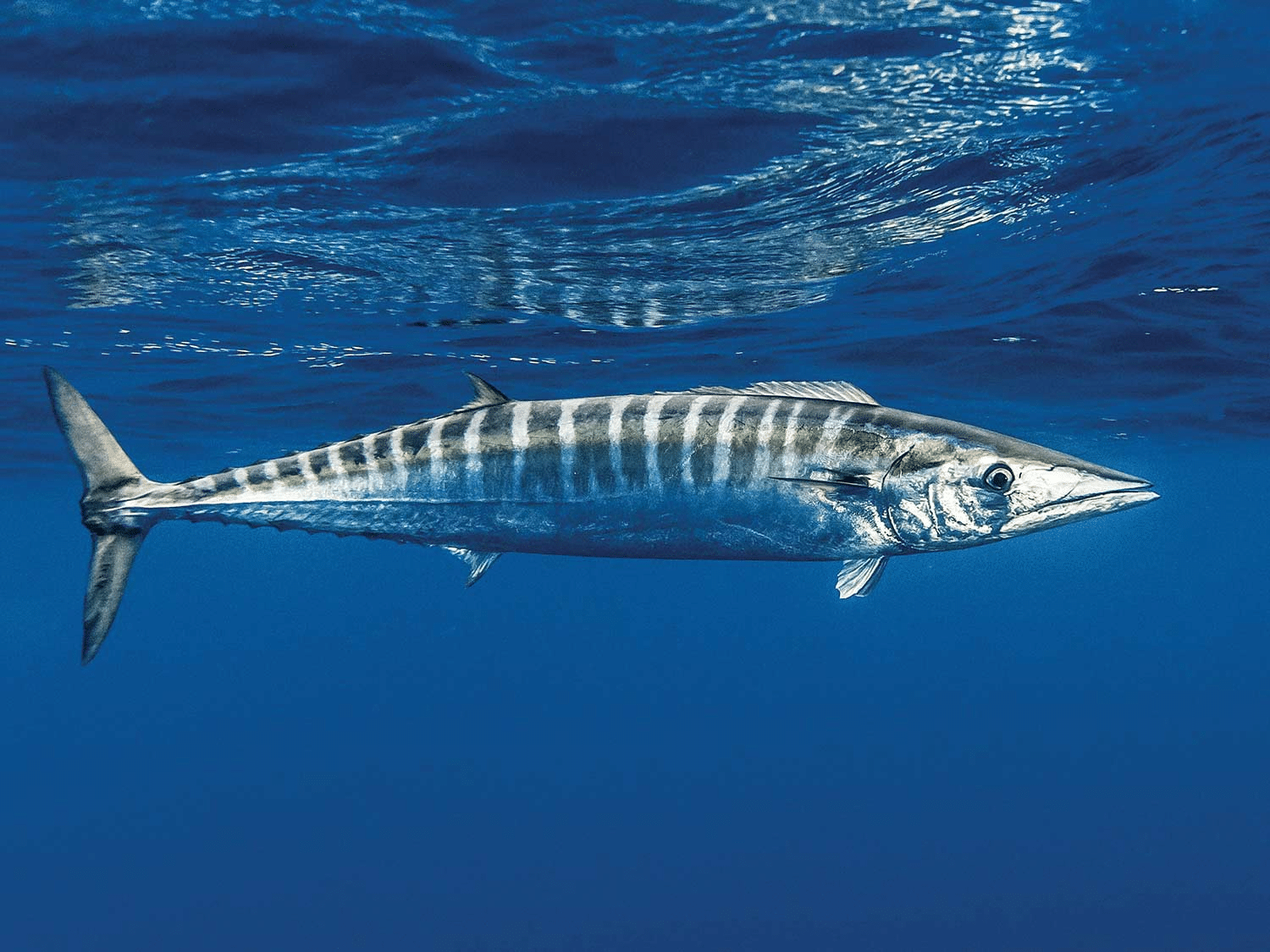
The Wahoo has a streamlined torpedo-shaped body with iridescent blue-green upper body, silvery sides, and distinctive vertical blue stripes.
It’s one of the fastest fish in the sea, reaching speeds up to 60 mph, and possesses razor-sharp teeth for capturing smaller fish.
| Scientific Name | Acanthocybium solandri |
| Origin | Tropical and subtropical oceans worldwide |
| Habitat | Open ocean waters near the surface in tropical and subtropical regions worldwide |
| Fun Fact | Their name likely comes from the exclamation of early European explorers upon seeing its incredible speed—the fish was so fast they’d shout “Wahoo!” |
31. Western Fence Lizard
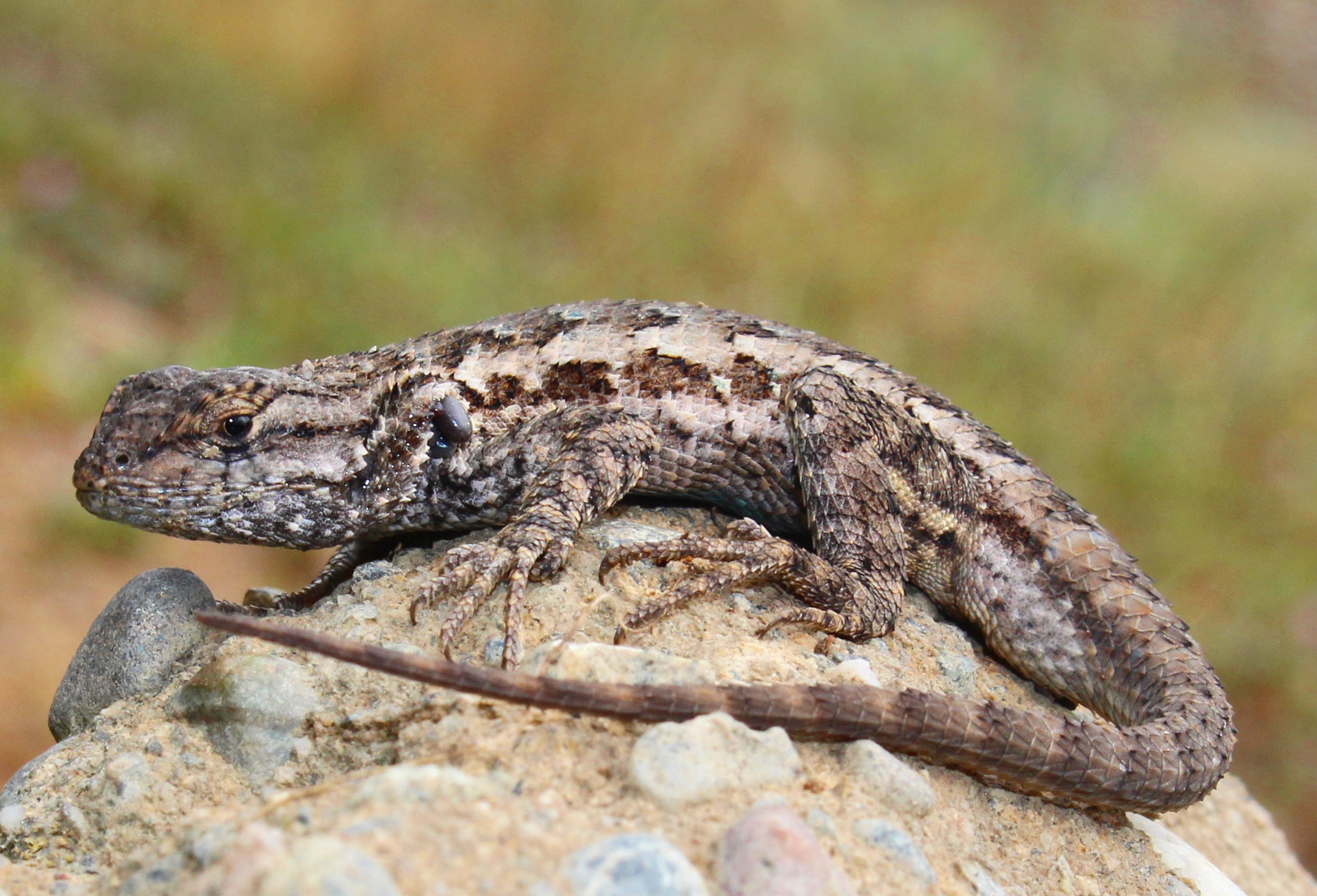
The Western Fence Lizard has a flattened body with keeled scales, blue patches on its belly and throat, and keeled scales giving it a spiny appearance.
It performs distinctive push-up displays for territorial and mating purposes and can detach its tail when captured, which continues to wiggle as a distraction.
| Scientific Name | Sceloporus occidentalis |
| Origin | North America |
| Habitat | Rocky areas, woodlands, and human settlements in western United States |
| Fun Fact | Their blood contains a protein that kills the bacteria causing Lyme disease; areas with these lizards have lower rates of Lyme disease transmission. |
Lesser-Known Animals Starting With “W”
32. Water Dragon
The Water Dragon has a streamlined body with emerald-green a scales, distinctive crest running from head to tail, and powerful limbs with sharp claws.
It’s an excellent swimmer that can remain underwater for up to 30 minutes and can drop from overhanging branches directly into water when threatened.
| Scientific Name | Physignathus cocincinus (Chinese Water Dragon) |
| Origin | Southeast Asia |
| Habitat | Tropical rainforests near streams and rivers in China and Southeast Asia |
| Fun Fact | They have a specialized “third eye” on top of their head—a photosensitive organ that detects shadows from potential predators above. |
33. Wolffish
The Wolffish has a long, eel-like body with mottled coloration, a large head, and fearsome teeth, including prominent canines and crushing molars.
It produces natural antifreeze proteins that prevent its blood from freezing in frigid Arctic waters and uses its powerful jaws to crush crabs, sea urchins, and mollusks.
| Scientific Name | Anarhichas spp. |
| Origin | North Atlantic and Arctic Oceans |
| Habitat | Cold ocean waters along rocky bottoms in the North Atlantic and Arctic |
| Fun Fact | Despite their ferocious appearance, they’re known as “sea cats” to many fishermen due to their purring sounds when handled and generally docile nature with humans. |
34. West Indian Manatee
The West Indian Manatee has a large, gray-brown body with wrinkled skin, a paddle-shaped tail, and a flexible snout covered in whiskers.
It can live in both fresh and saltwater, has marrow-filled ribs to help with buoyancy, and continuously replaces its molars throughout life.
| Scientific Name | Trichechus manatus |
| Origin | Caribbean and Atlantic coasts of the Americas |
| Habitat | Shallow coastal waters, rivers, and springs from the southeastern United States to Brazil |
| Fun Fact | Their closest living relatives are elephants, not dolphins or whales as their appearance might suggest. |
35. White Rhino
The White Rhino has a massive gray body with two horns on its snout, distinctive wide square lips, and a prominent shoulder hump.
It can rotate its ears independently to detect sounds from different directions and can charge at speeds up to 30 mph despite weighing over 7,000 pounds.
| Scientific Name | Ceratotherium simum |
| Origin | Africa |
| Habitat | Grasslands and savannas of southern and eastern Africa |
| Fun Fact | Despite being the second-largest land mammal after elephants, they primarily eat just grass, using their wide, square lips to graze efficiently. |
36. Wyoming Toad
The Wyoming Toad has a stout body with warty skin ranging from brown to greenish-gray, distinctive cranial crests, and large parotoid glands behind the eyes.
It hunts by shooting its sticky tongue at insects and can pump its throat to make loud mating calls during breeding season.
| Scientific Name | Anaxyrus baxteri |
| Origin | United States |
| Habitat | Originally only in Wyoming’s Laramie Basin; now primarily in captivity and protected reintroduction sites |
| Fun Fact | They were declared extinct in the wild in 1994 but saved through captive breeding; all existing Wyoming toads descend from just nine individuals. |
37. Waterbuck
The Waterbuck has a shaggy brown coat with a distinctive white ring around its rump, long spiral horns on males, and specialized oily fur.
It produces a musky secretion that makes its meat unpalatable to predators. Despite frequently entering water to escape threats, it has water-repellent fur.
| Scientific Name | Kobus ellipsiprymnus |
| Origin | Africa |
| Habitat | Grasslands and savanna woodlands near water sources in sub-Saharan Africa |
| Fun Fact | Their oily secretions make them smell so unpleasant that even lions will only eat them when desperate, often abandoning kills after the first bite. |
38. Water Deer
The Water Deer has a small body with reddish-brown fur, large rounded ears, and distinctive vampire-like tusks in place of antlers.
Males use their tusks for territorial fights, and when threatened, they can run with a distinctive bounding gait where all four feet leave the ground simultaneously.
| Scientific Name | Hydropotes inermis |
| Origin | East Asia |
| Habitat | River valleys, wetlands, and coastal areas in China and Korea |
| Fun Fact | Unlike other deer, females typically give birth to twins, triplets, or even quadruplets, having evolved multiple births to offset historically high predation rates. |
39. Wild Bactrian Camel
The Wild Bactrian Camel has two humps storing fat (not water), shaggy winter coat that sheds in summer, and specialized adaptations for extreme environments.
It can drink saltwater that would kill most animals, close its nostrils during sandstorms, and tolerate temperature fluctuations from -40°F to 100°F.
| Scientific Name | Camelus ferus |
| Origin | Central Asia |
| Habitat | Remote desert regions of Mongolia and China |
| Fun Fact | They’re the only land mammals that can drink saltwater saltier than ocean water—and they can go a week without drinking at all. |
40. White-Winged Duck
The White-Winged Duck has mainly dark plumage with a whitish head and neck, distinctive white wing patches visible in flight, and orange-red eyes and feet.
Despite its large size, it roosts in trees and feeds primarily at night, using its specialized bill to filter aquatic vegetation and invertebrates.
| Scientific Name | Asarcornis scutulata |
| Origin | Southeast Asia |
| Habitat | Tropical forests with pools, swamps, and slow-flowing rivers in Southeast Asia |
| Fun Fact | Despite being a duck, they rarely swim, preferring to wade in shallow water and perch in trees near waterways. |
41. Wandering Spider
The Wandering Spider has a hairy brown body with distinctive red jaws, a leg span of up to 6 inches, and an aggressive defensive posture with raised front legs.
It actively hunts prey rather than building webs and possesses neurotoxic venom that can cause intense pain, inflammation, and in rare cases, priapism in human males.
| Scientific Name | Phoneutria spp. |
| Origin | Central and South America |
| Habitat | Tropical and subtropical forests of Central and South America |
| Fun Fact | Their venom contains a toxin that has been studied for treating erectile dysfunction, as it can cause prolonged, painful erections in human males. |
42. Whistling Duck
The Whistling Duck has an upright posture, long neck, and distinctive whistling call, rather than the typical quacking of other ducks, which gives it its name.
Despite being a waterfowl, it perches in trees and forms strong lifelong pair bonds, with both parents sharing incubation and chick-rearing duties.
| Scientific Name | Dendrocygna species |
| Origin | Tropical and subtropical regions worldwide |
| Habitat | Wetlands, lakes, and rice fields across tropics and subtropics globally |
| Fun Fact | Unlike most ducks, they’re nocturnal feeders and lack the sexual dimorphism common in other duck species—males and females look identical. |
43. Western Pygmy Possum
The Western Pygmy Possum has a tiny body rarely exceeding 10cm, large forward-facing eyes, prominent ears, and a long prehensile tail.
It can enter torpor (a temporary hibernation-like state) to conserve energy during food shortages and uses its long tongue to feed on nectar and pollen.
| Scientific Name | Cercartetus concinnus |
| Origin | Australia |
| Habitat | Heathlands, woodlands, and scrubby areas in southern and western Australia |
| Fun Fact | They weigh no more than a nickel but can consume twice their body weight in food when preparing for torpor periods. |
44. Western Whip Snake
The Western Whip Snake has a slender body with smooth scales, large eyes with round pupils, and coloration ranging from olive-green to black.
It’s an active daytime hunter that relies on vision rather than smell and can move with extraordinary speed through vegetation.
| Scientific Name | Hierophis viridiflavus |
| Origin | Europe |
| Habitat | Open woodlands, meadows, and rocky areas across western and southern Europe |
| Fun Fact | Though non-venomous, they’re such effective hunters that they can capture and eat other snakes, including venomous vipers. |
45. Water Vole
The Water Vole has a chubby body with rich chestnut-brown fur, a rounded nose, small ears nearly hidden in fur, and a furry tail.
It’s an excellent swimmer and diver that constructs intricate burrow systems in riverbanks with underwater entrances for quick escapes.
| Scientific Name | Arvicola amphibius |
| Origin | Europe and parts of Asia |
| Habitat | River banks, streams, and wetlands across Europe and parts of Asia |
| Fun Fact | Often mistaken for rats, they were the inspiration for the beloved character Ratty in “The Wind in the Willows” despite being a completely different species. |
46. Water Strider
The Water Strider has a slender body with extremely long legs that distribute its weight over a wide area, allowing it to walk on water’s surface.
It uses specialized non-wetting hairs on its legs and specialized claws that don’t break the water’s surface tension.
| Scientific Name | Gerridae family |
| Origin | Worldwide |
| Habitat | Still freshwater surfaces including ponds, lakes, and slow-moving streams worldwide |
| Fun Fact | They can detect ripples as small as 0.1mm on the water’s surface, allowing them to locate struggling prey or approaching predators. |
47. Western Toad
The Western Toad has a stout body with warty skin typically colored gray or greenish with a distinctive white stripe down its back.
It secretes toxins from specialized glands behind its eyes and can inflate its body when threatened to appear larger to predators.
| Scientific Name | Anaxyrus boreas |
| Origin | North America |
| Habitat | Varied habitats from mountains to deserts in western North America |
| Fun Fact | Rather than hopping like many frogs, they prefer to walk slowly or make short hops, covering surprising distances during migration. |
48. White Bass
The White Bass has a silvery compressed body with distinct dark stripes running horizontally along its sides and a humped back.
It hunts in coordinated schools that herd smaller fish into tight groups for easier feeding and performs spectacular spawning runs upstream.
| Scientific Name | Morone chrysops |
| Origin | North America |
| Habitat | Lakes, reservoirs, and large rivers throughout the central and eastern United States |
| Fun Fact | During spawning runs, they can be so numerous that the water appears to boil as thousands of fish gather in shallow areas. |
49. Whipray
The Whipray has a flat, disc-shaped body, venomous barbed spine on its whip-like tail, and can grow up to 6 feet in diameter.
It buries itself in sand with only its eyes exposed, using electroreceptors to detect prey hidden in the substrate.
| Scientific Name | Himantura species |
| Origin | Indo-Pacific region |
| Habitat | Shallow coastal waters, mangroves, and estuaries in the Indo-Pacific region |
| Fun Fact | Their tails can be up to three times their body length, and the venomous spines were traditionally used as arrowheads by indigenous peoples. |
50. Weeper Capuchin
The Weeper Capuchin has a dark brown body, distinctive black “cap” on its head, expressive face, and prehensile tail.
It uses sophisticated tool-using abilities, including using rocks as hammers and sticks as probes, and forms complex social structures.
| Scientific Name | Cebus olivaceus |
| Origin | South America |
| Habitat | Tropical forests in northern South America |
| Fun Fact | They get their name from their distinctive “weeping” call that carries through the forest canopy, used to coordinate group movements. |
51. Whooper Swan
The Whooper Swan has pure white plumage, a long neck typically held straight, and a distinctive yellow and black bill pattern.
It makes powerful, resonant honking calls, migrates vast distances between breeding and wintering grounds, and pairs for life.
| Scientific Name | Cygnus cygnus |
| Origin | Northern Eurasia |
| Habitat | Lakes, ponds, and wetlands across northern Europe and Asia |
| Fun Fact | They’re among the heaviest flying birds, yet can migrate at altitudes of 8,000 feet and speeds up to 60 mph during long-distance journeys. |
52. White-Lipped Peccary
The White-Lipped Peccary has a dark body with a distinctive white “mustache” area around its mouth, a pig-like appearance, and travels in large herds.
It communicates through loud chattering of teeth when alarmed and utilizes a scent gland on its back to mark territory and identify herd members.
| Scientific Name | Tayassu pecari |
| Origin | Americas |
| Habitat | Tropical forests from southern Mexico to northern Argentina |
| Fun Fact | They form some of the largest herds of any forest mammal, sometimes numbering over 300 individuals that move like a single organism through the forest. |
53. White-Cheeked Gibbon
The White-Cheeked Gibbon has sexually dimorphic coloration with males black with white cheeks and females golden with black face patch.
It propels itself through the forest canopy with specialized elongated arms, communicates through complex songs, and forms strong pair bonds.
| Scientific Name | Nomascus leucogenys |
| Origin | Southeast Asia |
| Habitat | Tropical rainforests in Vietnam, Laos, and southern China |
| Fun Fact | Males and females perform coordinated duets that can be heard for miles through the forest, strengthening their pair bond and marking territory. |
54. Whimbrel
The Whimbrel has a mottled brown body, distinctive down-curved bill, and striped head pattern with a central crown stripe.
It performs one of the longest migrations of any shorebird and uses its specialized curved bill to extract crabs from burrows.
| Scientific Name | Numenius phaeopus |
| Origin | Global |
| Habitat | Breeds in Arctic regions; winters on coastlines worldwide |
| Fun Fact | They navigate with incredible precision during migration, often returning to the exact same few square meters of beach year after year despite traveling thousands of miles. |
55. West African Crocodile
The West African Crocodile has a broad snout, heavily armored body with bony scutes, and specialized salt-excreting glands that allow it to tolerate both fresh and saltwater.
It uses its massive jaw strength to capture prey and possesses specialized valves that seal its throat, allowing it to open its mouth underwater without drowning.
| Scientific Name | Crocodylus suchus |
| Origin | Africa |
| Habitat | Rivers, lakes, and wetlands across western and central Africa |
| Fun Fact | This species was considered sacred in ancient Egypt and was often mummified; genetic testing of these mummies helped identify it as a distinct species. |
56. Wedge-Tailed Eagle
The Wedge-Tailed Eagle has a massive wingspan up to 9 feet, distinctive diamond-shaped tail, and dark brown to black plumage.
It constructs enormous nests used for generations and can spot prey from over a mile away with its exceptional eyesight.
| Scientific Name | Aquila audax |
| Origin | Australia and New Guinea |
| Habitat | Open forests, plains, and mountains across Australia and New Guinea |
| Fun Fact | They’re known to hunt cooperatively, with pairs working together to take down prey as large as kangaroos and small wallabies. |
57. Weasel Shark
The Weasel Shark has a slender body, distinctive large eyes, and uniquely shaped teeth specialized for grasping slippery prey.
It hunts primarily at night using its excellent low-light vision and employs a specialized hunting technique of snapping its head sideways to catch prey.
| Scientific Name | Hemigaleus microstoma |
| Origin | Indo-Pacific region |
| Habitat | Continental shelves and upper slopes in the Indo-Pacific region |
| Fun Fact | Unlike most sharks, they actively hunt in packs, coordinating to herd small fish into tight groups for easier feeding. |
58. Water Scorpion
The Water Scorpion has an elongated body resembling a scorpion with grasping front legs and a long breathing tube extending from its rear.
It ambushes prey from concealment, grabbing victims with its modified front legs and injecting digestive enzymes to liquefy its prey’s insides.
| Scientific Name | Nepidae family |
| Origin | Worldwide |
| Habitat | Freshwater ponds, lakes, and slow-moving streams worldwide |
| Fun Fact | Despite their name and appearance, they’re actually aquatic insects related to water bugs, not scorpions, and their “tail” is a breathing tube they extend to the surface. |
59. Wood Warbler
The Wood Warbler has bright yellow throat and breast, white belly, and distinctive green upperparts.
It performs remarkable aerial displays during courtship and possesses specialized muscles that allow it to sing with two voices simultaneously.
| Scientific Name | Phylloscopus sibilatrix |
| Origin | Europe and Western Asia |
| Habitat | Deciduous and mixed forests across Europe and western Asia |
| Fun Fact | They have one of the most unusual nest designs of any bird—a small domed structure with a side entrance, always built on the ground despite being a forest canopy dweller. |
60. Water Monitor
The Water Monitor has a muscular body with dark coloration featuring yellow spots or ocelli, a long neck, and powerful limbs with sharp claws.
It’s an excellent swimmer with a laterally compressed tail used as a paddle and can remain submerged for up to 30 minutes.
| Scientific Name | Varanus salvator |
| Origin | South and Southeast Asia |
| Habitat | Rivers, canals, and coastal areas across South and Southeast Asia |
| Fun Fact | They can count—research shows they can distinguish between numerical quantities, an unusual cognitive ability for reptiles. |
61. Walnut Sphinx Moth
The Walnut Sphinx Moth has a stout body with intricate patterns of brown and gray resembling tree bark, and pink to orange hindwings.
It hovers like a hummingbird while feeding on nectar using its long proboscis and can beat its wings up to 85 times per second.
| Scientific Name | Amorpha juglandis |
| Origin | North America |
| Habitat | Deciduous forests and suburban areas across eastern North America |
| Fun Fact | When threatened, they can produce a hissing sound by forcing air through their proboscis, startling potential predators. |
62. White-Nosed Coati
The White-Nosed Coati has a long, flexible snout with white markings, raccoon-like facial mask, and a distinctive ringed tail often held upright.
It uses its highly manipulative front paws for digging and turning over objects and its elongated snout to root out insects from crevices.
| Scientific Name | Nasua narica |
| Origin | Americas |
| Habitat | Tropical and subtropical forests from Arizona to Colombia |
| Fun Fact | Adult males are solitary, but females and young live in bands of up to 30 individuals with a complex social structure including sentries that warn of danger. |
63. Water Opossum
The Water Opossum has a streamlined body with water-repellent fur, webbed hind feet, and a scaly prehensile tail.
It’s the only aquatic marsupial with a specialized waterproof pouch that seals tight enough to keep babies dry while swimming.
| Scientific Name | Chironectes minimus |
| Origin | Central and South America |
| Habitat | Streams, ponds, and rivers in tropical forests from Mexico to Argentina |
| Fun Fact | Also called “yapok,” it’s the only marsupial where both sexes have a pouch—males use theirs to protect genitalia while swimming in piranha-infested waters. |
64. Weddell Seal
The Weddell Seal has a rotund body with mottled gray-brown coloration, cat-like face with large eyes, and specialized teeth for creating breathing holes in ice.
It can dive to depths over 2,000 feet and stay underwater for up to 80 minutes thanks to specialized oxygen storage adaptations.
| Scientific Name | Leptonychotes weddellii |
| Origin | Antarctica |
| Habitat | Antarctic coastal waters and pack ice |
| Fun Fact | They can produce alien-like trills and chirps underwater that sound like Star Wars laser beams, creating an otherworldly soundscape beneath the Antarctic ice. |
65. Walking Stick
The Walking Stick has an elongated twig-like body with joints resembling nodes on branches, often featuring irregular bumps mimicking bark texture.
It sways with the breeze to enhance its camouflage and can regenerate lost limbs during molting as juveniles.
| Scientific Name | Phasmatodea order |
| Origin | Worldwide (mainly tropics) |
| Habitat | Forests and woodlands worldwide, with greatest diversity in tropical regions |
| Fun Fact | Some species can reproduce parthenogenetically, with females creating genetic clones of themselves without mating. |
66. Water Rail
The Water Rail has a laterally compressed body for moving through dense reeds, long red bill, and distinctive blue-gray face and breast with barred flanks.
It swims with a characteristic jerky motion, bobs its tail constantly, and can climb vertical reeds using its long-toed feet.
| Scientific Name | Rallus aquaticus |
| Origin | Europe, Asia, and North Africa |
| Habitat | Dense reedbeds and wetlands across Europe, Asia, and North Africa |
| Fun Fact | They’re known for their pig-like squealing calls that gave rise to medieval beliefs that these secretive birds were actually young piglets transforming into frogs. |
67. Western Bluebird
The Western Bluebird has vibrant blue upperparts, rusty orange breast, and a small, slender bill adapted for capturing insects.
It performs hovering flight while hunting insects and nests in tree cavities, often competing with other cavity-nesters for limited nesting sites.
| Scientific Name | Sialia mexicana |
| Origin | North America |
| Habitat | Open woodlands, forest edges, and meadows in western North America |
| Fun Fact | They practice “cooperative breeding” where young from previous broods may stay and help their parents raise the next generation before breeding themselves. |
68. White-Spotted Jellyfish
The White-Spotted Jellyfish has a large, dinner-plate-sized bell with distinctive white spots and short, fine tentacles.
It filters feed by pulsing its bell to drive water through its oral arms where millions of microscopic stinging cells capture plankton.
| Scientific Name | Phyllorhiza punctata |
| Origin | Western Pacific |
| Habitat | Tropical and subtropical coastal waters, often invasive outside its native range |
| Fun Fact | A single jellyfish can filter more than 13,000 gallons of water daily, consuming vast quantities of plankton that has made them destructive invasive species in some regions. |
69. Wirehaired Pointing Griffon
The Wirehaired Pointing Griffon has a harsh, wiry double coat, distinctive bushy eyebrows and beard, and a square-proportioned, medium-sized body.
It uses its exceptional scenting ability to locate game birds and assumes a rigid “pointing” stance with one paw lifted when prey is located.
| Scientific Name | Canis lupus familiaris |
| Origin | Netherlands and Germany |
| Habitat | Domesticated; originally bred for hunting in various terrains |
| Fun Fact | Often called the “supreme gundog,” they’re one of few breeds that excel at hunting both on land and in water, adapting to nearly any terrain or condition. |
70. Wrasse
The Wrasse has a diverse array of colors and patterns depending on species, thick lips, and protruding canine teeth.
It can change sex from female to male as it ages and many species produce a mucous cocoon around themselves at night for protection.
| Scientific Name | Labridae family |
| Origin | Global oceans |
| Habitat | Coral reefs and rocky coasts in tropical and temperate oceans worldwide |
| Fun Fact | Some species work as “cleaners,” setting up stations where larger fish come to have parasites and dead skin removed—effectively running underwater “health spas.” |
Conclusion
The “W” roster showcases one of the most varied arrays in nature’s grand design.
From underwater specialists to mountain masters, grassland rovers to forest dwellers, these creatures have perfected their survival skills over millions of years.
Some shock with their speed and power, others with their clever adaptations or special physical features.
Large or small, predator or prey, each holds an important place in their habitat.
Some names might sound familiar while others may be completely new, but each has a remarkable story of adaptation and survival.
Which member of this group surprised you the most? Did you learn about a species you’d never heard of before?
Share your thoughts or tell us about any “W” animals we might have missed in the comments below!

